The Illustrated Guide To Boat Hull Types (11 Examples)
I didn't understand anything about boat hull types. So I've researched what hulls I need for different conditions. Here's a complete list of the most common hulls.
What are the different boat hull types? There are three boat hull categories: displacement hulls, which displace water when moving; planing hulls, which create lift at high speeds; and semi-displacement hulls, which displace water and generate lift at low speeds. The most common hull types are round-bottomed, flat-bottomed, multi, V-shaped, and pontoon hulls.
But that's all pretty abstract if you ask me, so below I'll give a simple overview of what it all means. After that, I'll give a list with pictures of all the different designs.

A Simple Overview of Boat Hull Types
Your boat hull will be the biggest factor in how your boat handles or sails, how wet it is, how bumpy - absolutely everything is determined by the hull shape. So it's important to understand what different hulls will do for you, and what each hull is best for. First, let's slice it up into rough categories.
Roughly, you can divide boat hulls into three categories:
- Displacement hulls - Lie inside the water and push it away when they move
- Planing hulls - Lie on top of the water and don't push it away
- Semi-displacement hulls - Lie inside the water and push it away, but can generate lift
Everything I'll be mentioning below is one of those three, or something in between.
There are five common boat hull types:
- Round-bottomed hulls - handle well in rough water: sailboats
- Flat-bottomed hulls - very stable for calm inland waters: fishing boats
- Multihulls - very stable and buoyant: catamarans
- V-Shaped Hulls - fast and comfortable in chop: powerboats
- Pontoon hulls - fast and stable: pontoon boats
And then there's everything in-between.
Here's a quick and handy overview of the different hull types
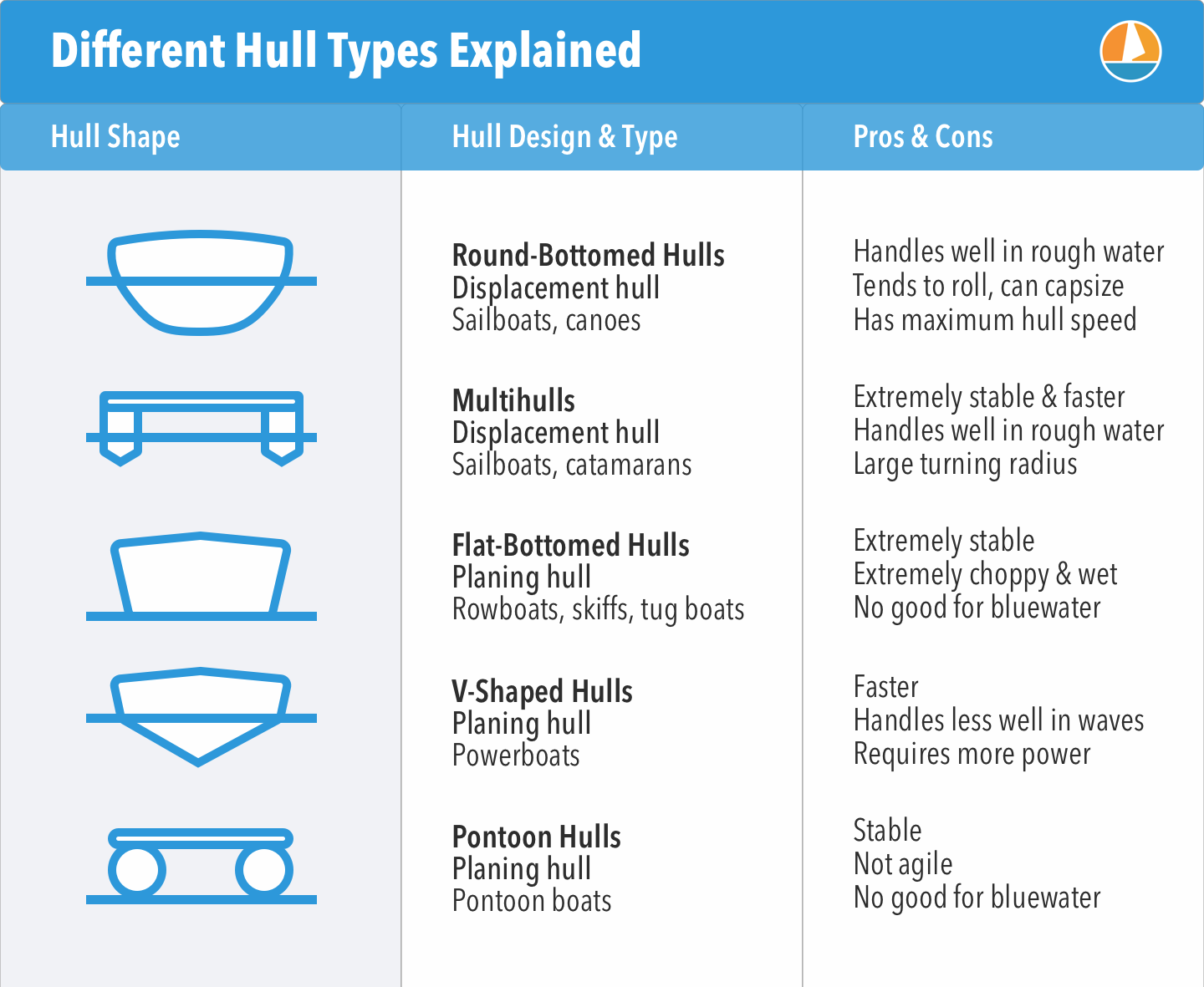
In each category, we find different designs and styles that have different characteristics. There isn't a real clear distinction between categories and styles: there are semi-displacement hulls and so on. So I thought the best way to learn you the different hull types is by simply creating a list with lots of pictures, instead of getting all theoretical about it.
So below I've listed all the different hull styles I could possibly think of, mention what category and type it is, the pros and cons of each one, and give you examples and illustrations for each one.

On this page:
Displacement hulls, round-bottom hull, catamaran hull, trimaran hull, planing hulls, flat-bottom hull, deep v-hull, modified-v hull, stepped hull, pontoon hull, semi-displacement hulls.
Examples: Sailboats, trawlers, fishing boats
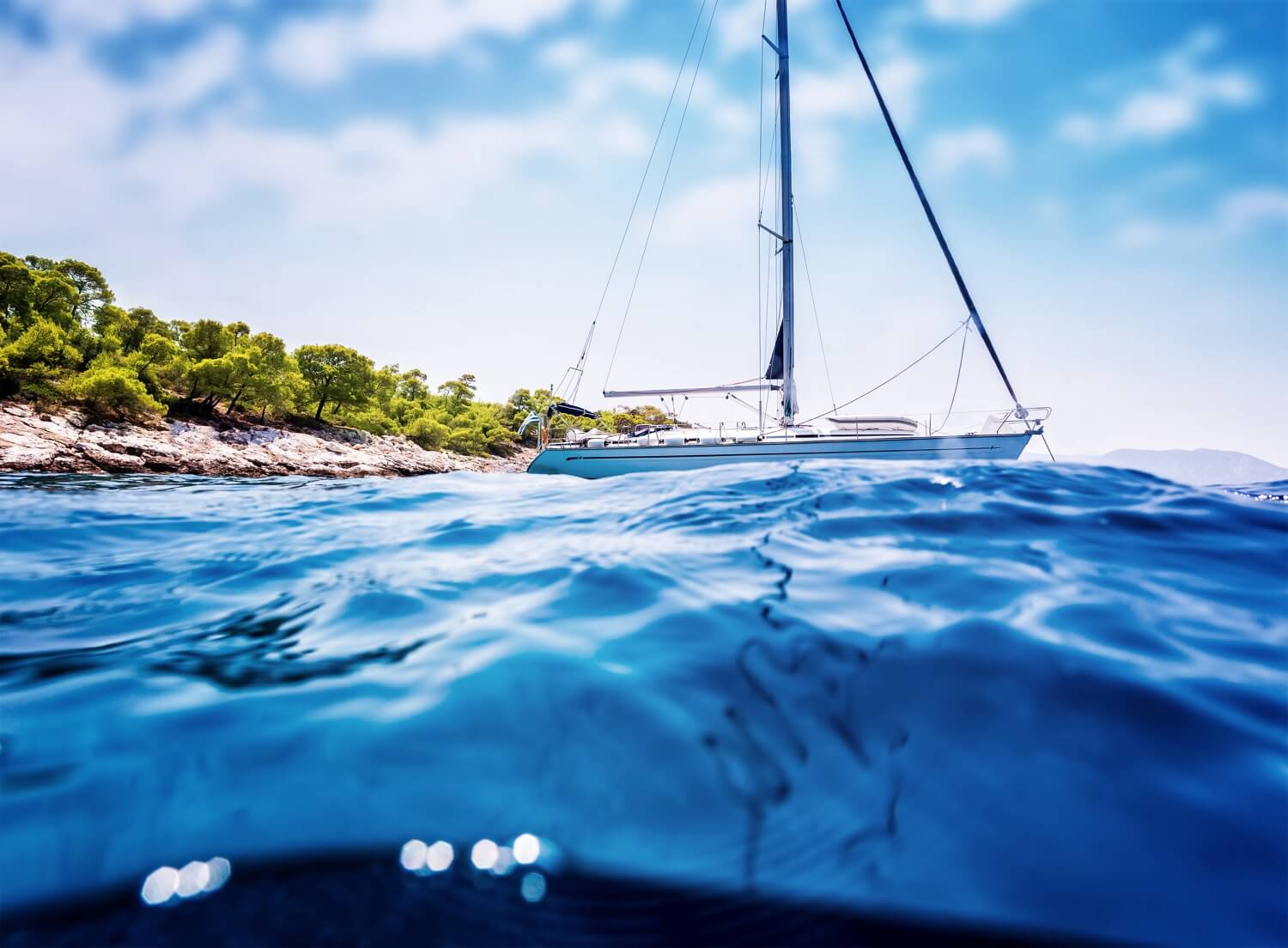
Displacement hulls displace water when moving. These hulls lie in the water, instead of on top of it. The amount of water they displace is equal to the boat's weight. Displacement hulls handle way better in rough waters than flat-bottom hulls. That's why most cruisers have some sort of displacement hulls. There are actually all kinds, shapes, and forms of the displacement hull design, which we'll go over later.
The most important thing to understand about the displacement hull, is that it operates on buoyancy. This means that most of the boat's weight is supported by its capacity to float . Planing hulls, on the other hand, operate on lift instead, but we'll dive into that later.
Sailboats typically have displacement hulls, but also fishing boats, trawlers and crabbers. All in all, it's used for each boat that needs to handle well in rough conditions.
Learn everything there is to know about displacement hulls in this article . It lists all the pros and cons and really goes into detail on the nitty-gritty about how displacement hulls actually work .
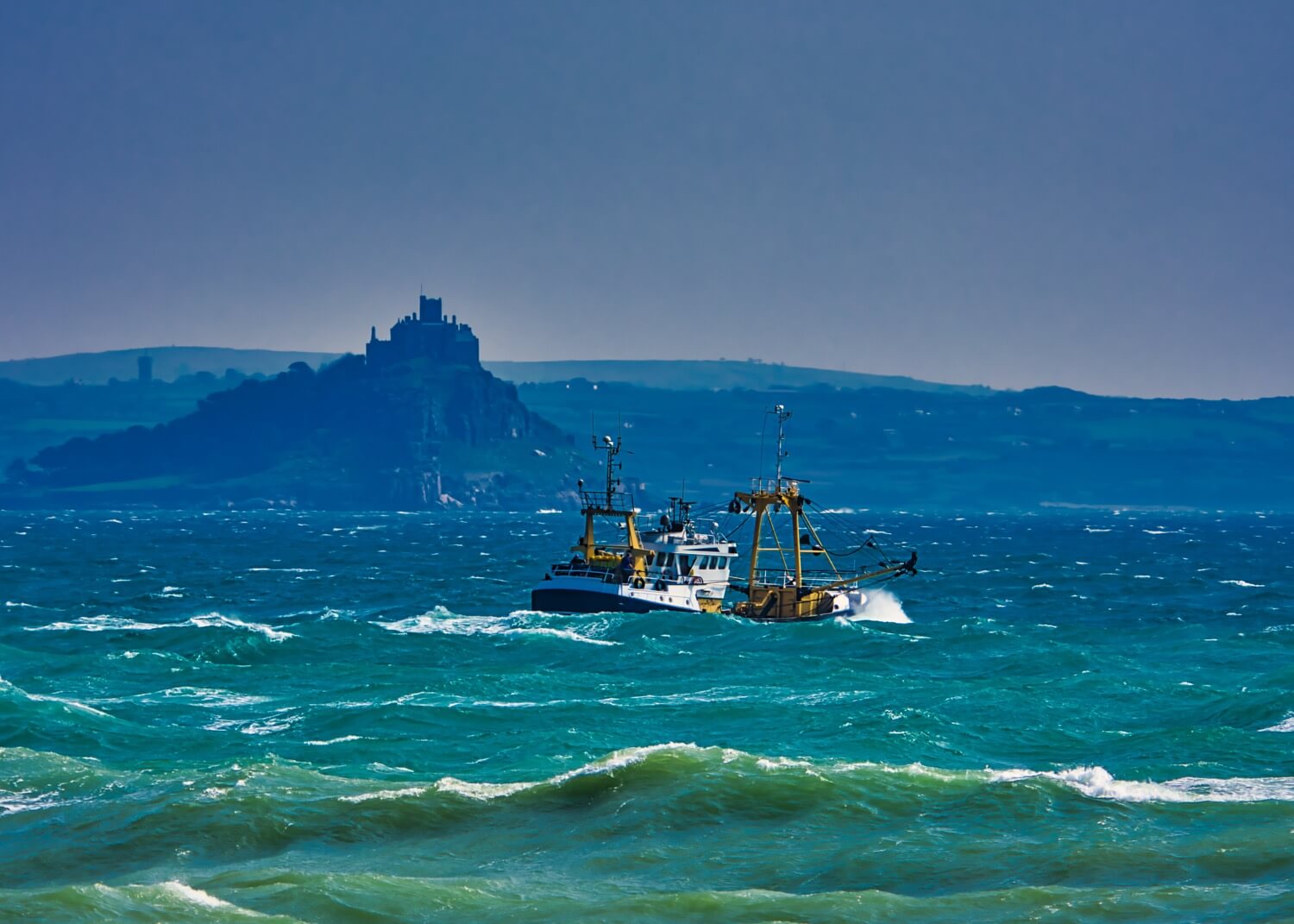
But they are also slower than flat and planing hulls because the boat creates more resistance when moving. It has to push the water aside. In fact, this type of hull has a built-in upper-speed limit.
This upper-speed limit is called maximum hull speed . It means that the length of a displacement hull directly determines the maximum speed. It can't go faster, because the water-resistance increases with the boat's speed. To learn everything about calculating maximum hull speed , please check out my previous article here.
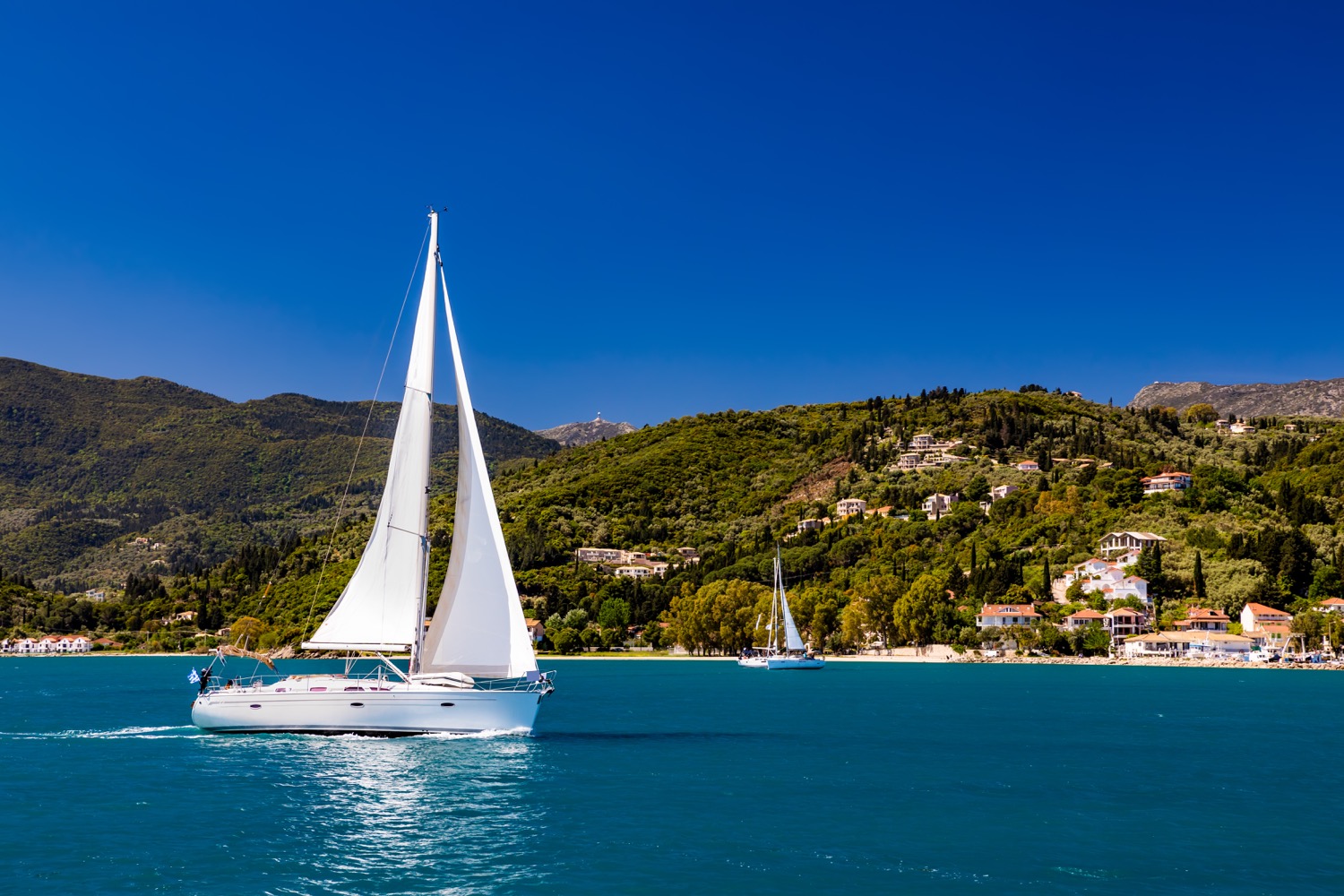
A round-bottomed hull is a type of displacement hull - it lies in the water and has to power through it. But since it's rounded, it creates little resistance and is effortless to move through the water. It's a very smooth ride and typical for any sailboat that sort of glides through the waves. In contrast, powerboats really have to eat their way through the water.
Examples: Canoes, sailboats
They are also one of the least stable. Since the bottom is rounded, your boat or canoe will rock plenty when boarding or moving around. They are also easy to capsize. That's why pro canoers learn to do a 360 in their canoes. I've never did a roll myself but came close enough a couple of times.
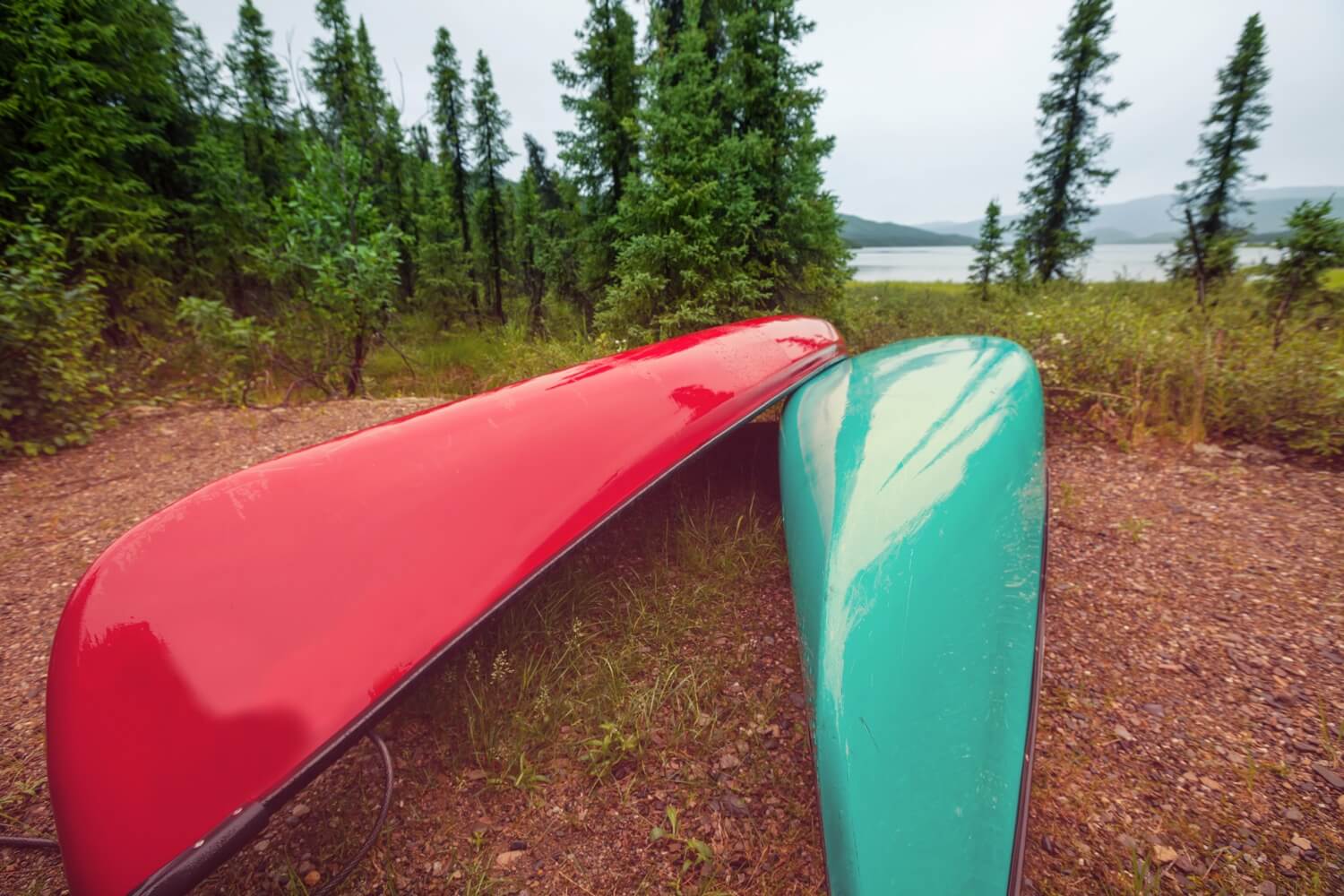
Almost all sailboats use a round bilge as well. This provides it its buoyancy and makes sure it handles well in waves. But since a rounded bilge is easy to capsize, a lot of sailboats have some sort of keel, which stabilizes the roll.
Nearly all ocean-going vessels use some sort of displacement hull, and the round bottom is the most common one. But our next guest is very popular as well.
The catamaran is similar to the pontoon hull (read on to learn more on that one), but it is a displacement multihull instead of a planing one. So it has two hulls, that lie inside the water and displace it. Like the pontoon, you will have to try really hard to capsize this design (and it won't work).
Examples: well, catamaran sailboats. But also this cool catamaran trawler:
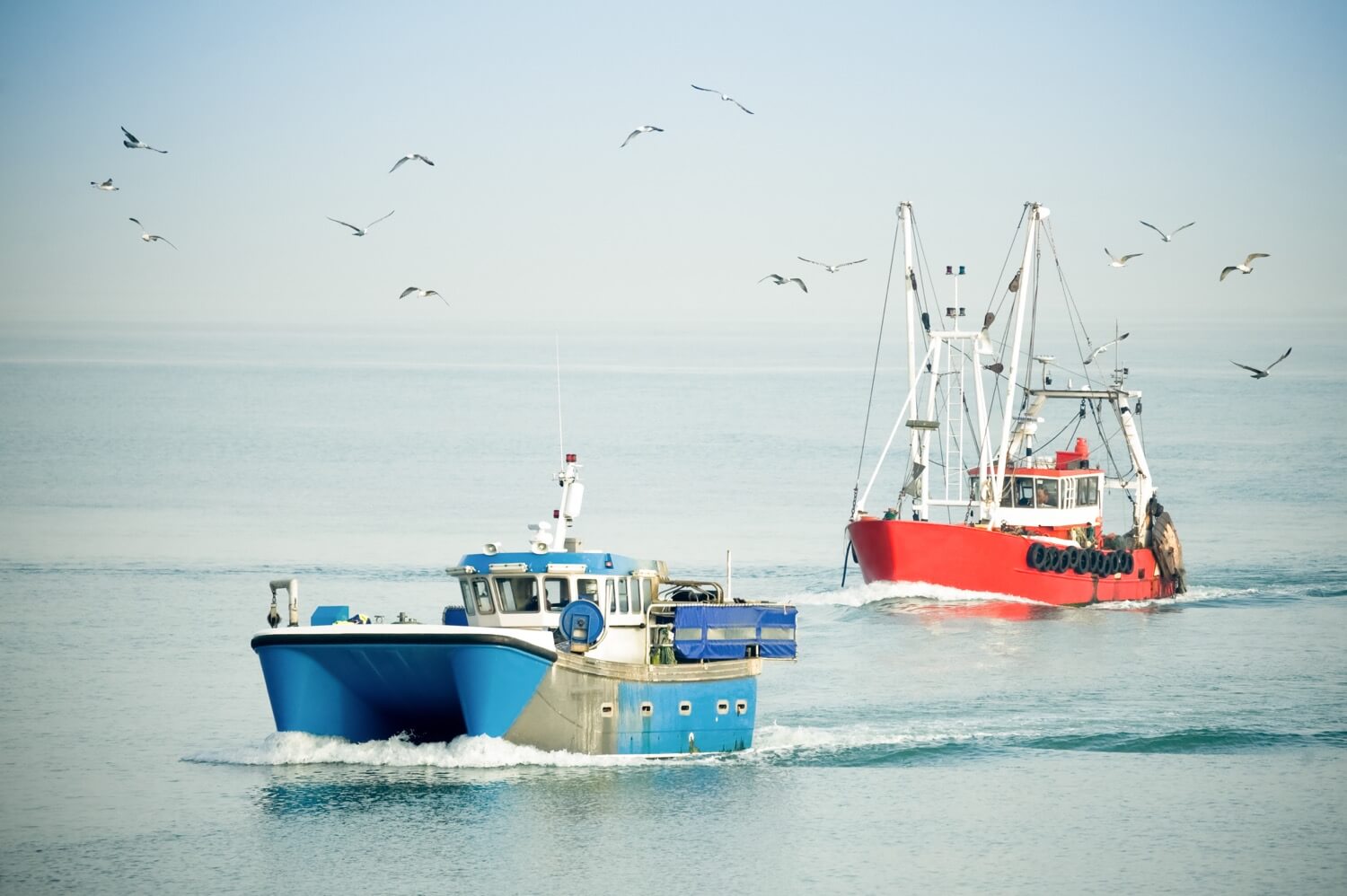
Catamarans are extremely popular ocean cruisers. Their biggest pro is their extreme stability and buoyancy. And they have a very shallow draft for a displacement hull, making them very popular for sailing reefs and shallow waters, like the Caribbean.
Some cons for the catamaran are less agile than monohulls. They have a large turning radius, making them less maneuverable. Also, expect to pay high marina fees with this one.
Speaking of marina fees, our next one can go either way.
I think trimarans are incredibly cool, and especially the second type.
There are two types of trimarans:
- a catamaran with three hulls instead of two,
- or a displacement monohull with two floaters.
The first has the same characteristics as the catamaran: it's a displacement multihull, but now with three hulls:

The second can be a regular displacement monohull, with two pontoon-type floaters that provide extra buoyancy, making the total thing a hybrid between pontoon and displacement:
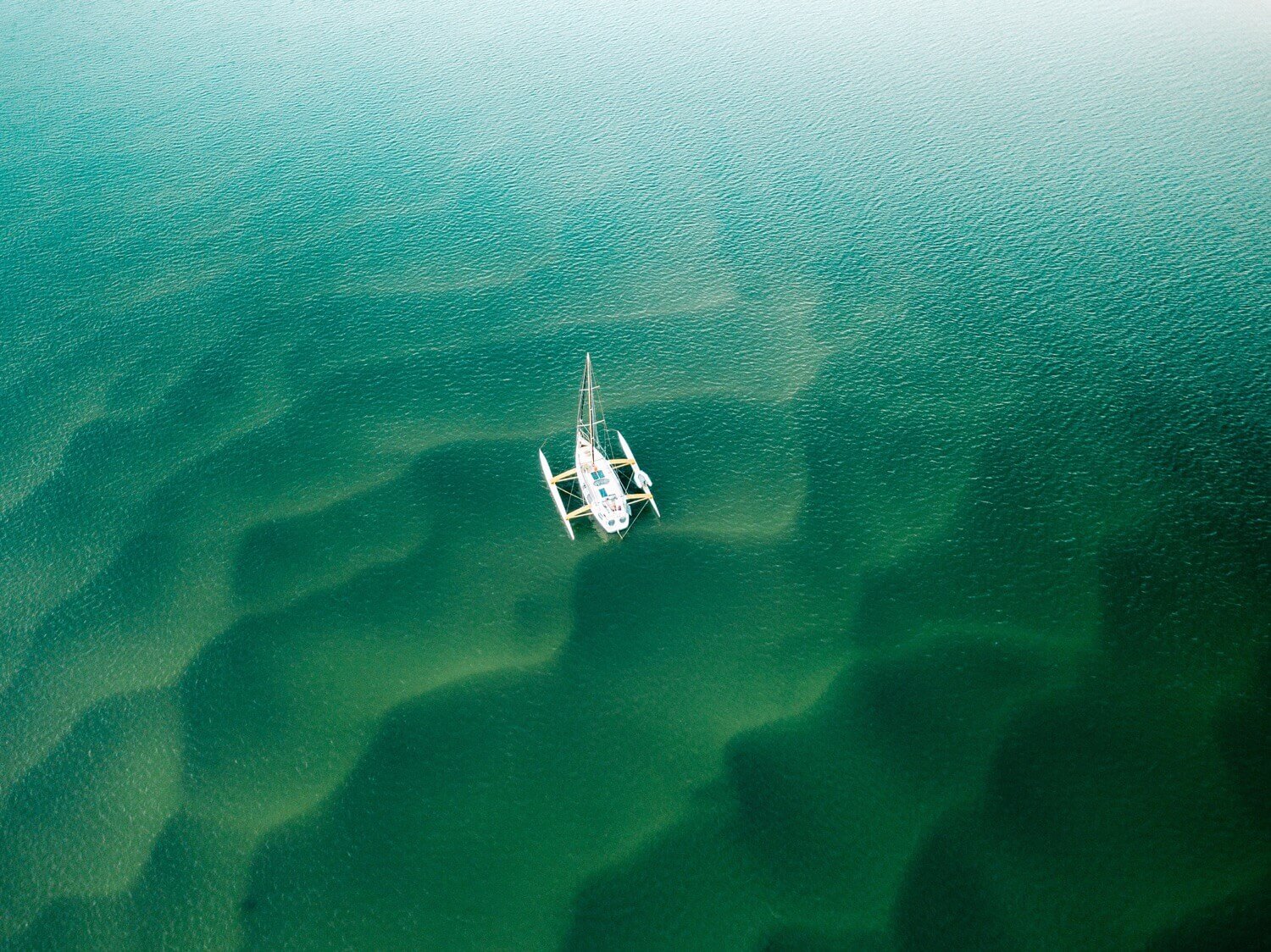
This last one has all the pros of a catamaran in terms of stability, but: you can simply wheel in those floaters whenever you head for port. That saves you a lot of money. And you can trailer her! Imagine that, a towing a trimaran home.
So those were the most common displacement hulls, aka what lives in the water. Let's move on to the planing hulls, aka what lives on the water.
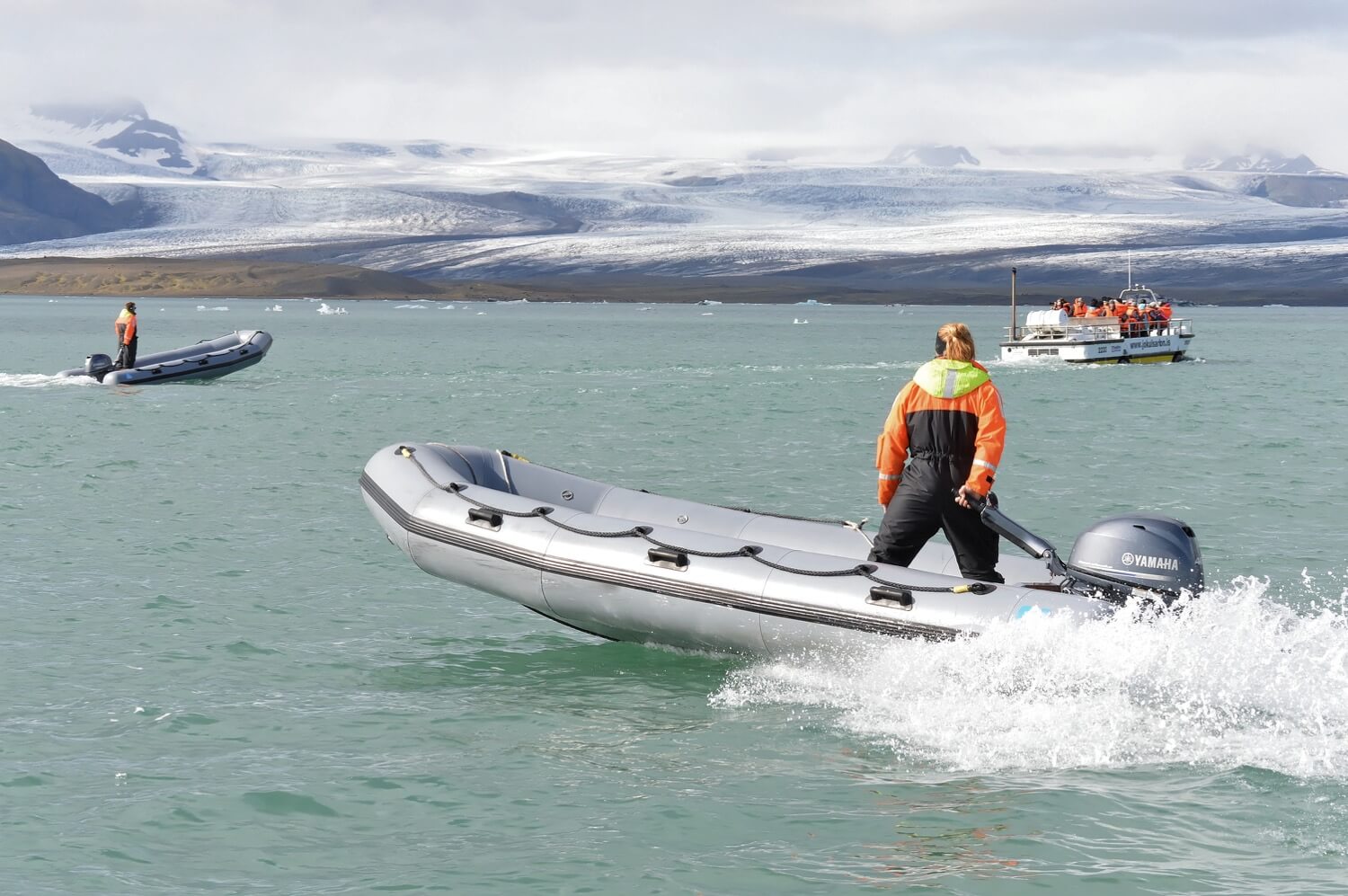
Planing hulls are a hybrid between the flat-bottom and displacement hulls. Planing hulls displace water at low speeds , but create lift at higher speeds . The shape of their hull + speed lifts them out of the water, making them glide on top of the water. Most powerboats look like flat-bottom boats but use a shallow V-shape that helps the boat to handle better at higher speeds.
Examples: Water sports boat, powerboats
The most important thing to understand about planing hulls is that they operate mainly on lift instead of buoyancy. This means the weight of the boat is mainly supported by dynamic forces 1 . With the right amount of power, this design generates lift, which results in less resistance. This is why they are a lot faster than boats with displacement hulls, but also a lot rougher, even with mild chop.
A lot of powerboats use some sort of planing hull. Again, there are many designs and variations on the planing hull, and I'll try to mention as many as I can below.
Because the wedge of the hull runs into the water, it is much easier to handle at high speeds. At lower speeds, it is able to keep its course, even with a bit of wind. However, whenever the boat starts planing, it is prone to wind gusts, since the wedge shape no longer stabilizes the boat.
The flatter the hull, the faster it will go, but also the more poorly it will handle. Other powerboats use deep V-hulls, which I'll discuss below. But first, let's take a look at the flattest hulls you'll ever see.
A flat-bottom hull lies on top of the water and doesn't displace water (okay, very little) as it moves. Since there is no displacement, there is also little to no friction when moving. This makes it potentially fast, but it handles pretty poorly. It is one of the most stable hull design.
Examples: rowboats, (old) high-performance powerboats, small skiffs, small fishing boats, tug boats
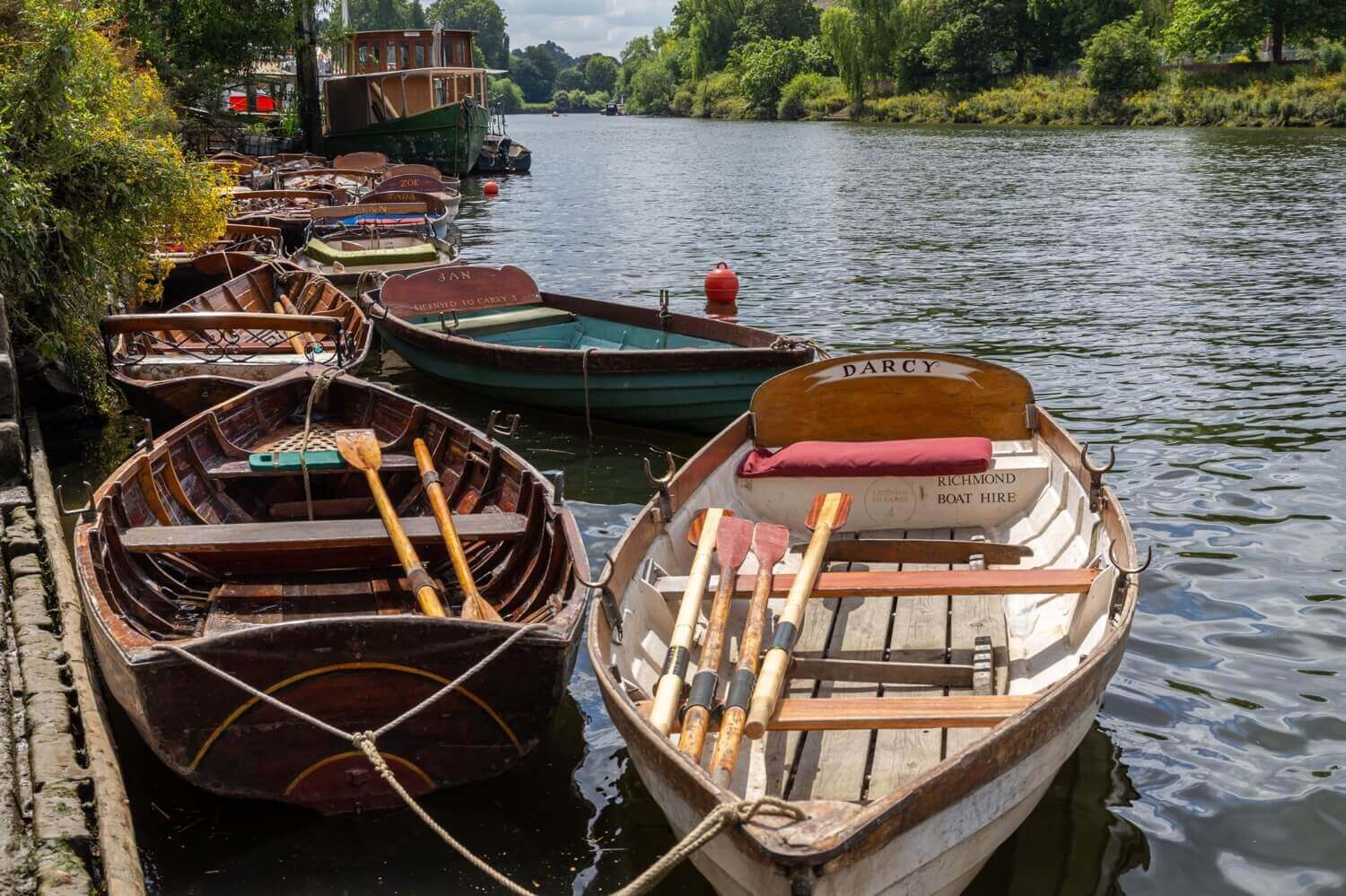
They aren't just incredibly stable, they're also very practical. Because the bottom is practically flat, they maximize boat surface. But they are also extremely choppy in rough weather and waves. They will handle very poorly with stiff winds, as the wind can simply catch them and blow them across the water surface. That's why this design is almost exclusively used for calm, small, inland waters.
This type of hull operates mainly on buoyancy , like the displacement hull, but it doesn't require the same amount of power to propel, which is why it's faster.
Because of the uncomfortable ride, not a lot of boats use a perfectly flat bottom. Most boats nowadays use some sort of v-hull or hybrid design, like a semi-displacement hull; especially larger boats. So not a lot of boats have a real flat bottom. However, we do call a lot of boats flat-bottomed. How come?
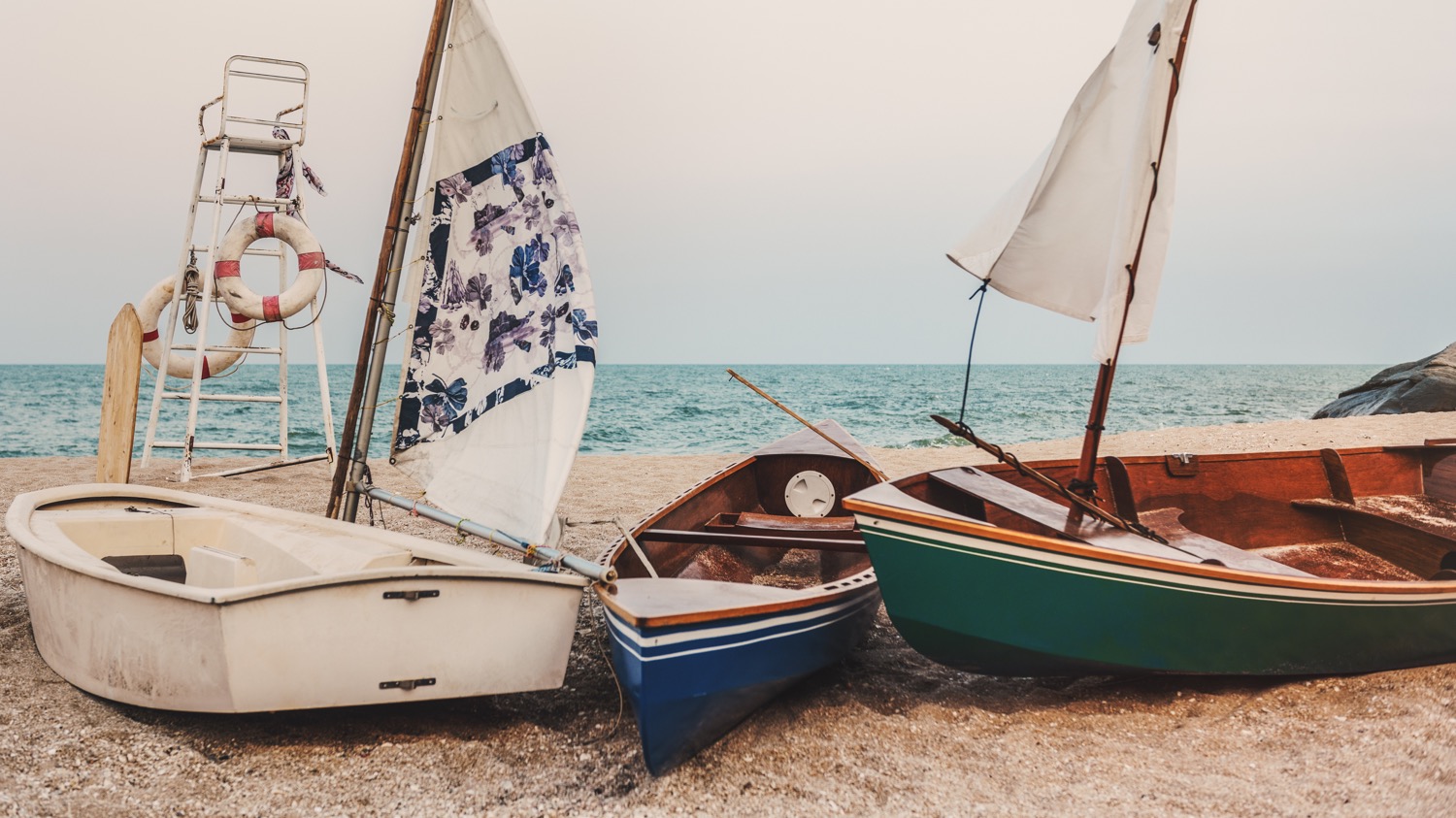
There are two types of hulls we call flat-bottoms:
- Of course boats with an actual flat bottom
- Boats with almost no deadrise
What is the hull's deadrise? The deadrise is the angle of the front of the hull to the horizontal waterline.
As you can see, the green sailing dinghy in the picture above has a deadrise that's barely noticeable.
Let's move on to other variations of the planing hull. One of the most popular hull design for modern-day powerboats is the Deep Vee hull. And that's as cool as it sounds.
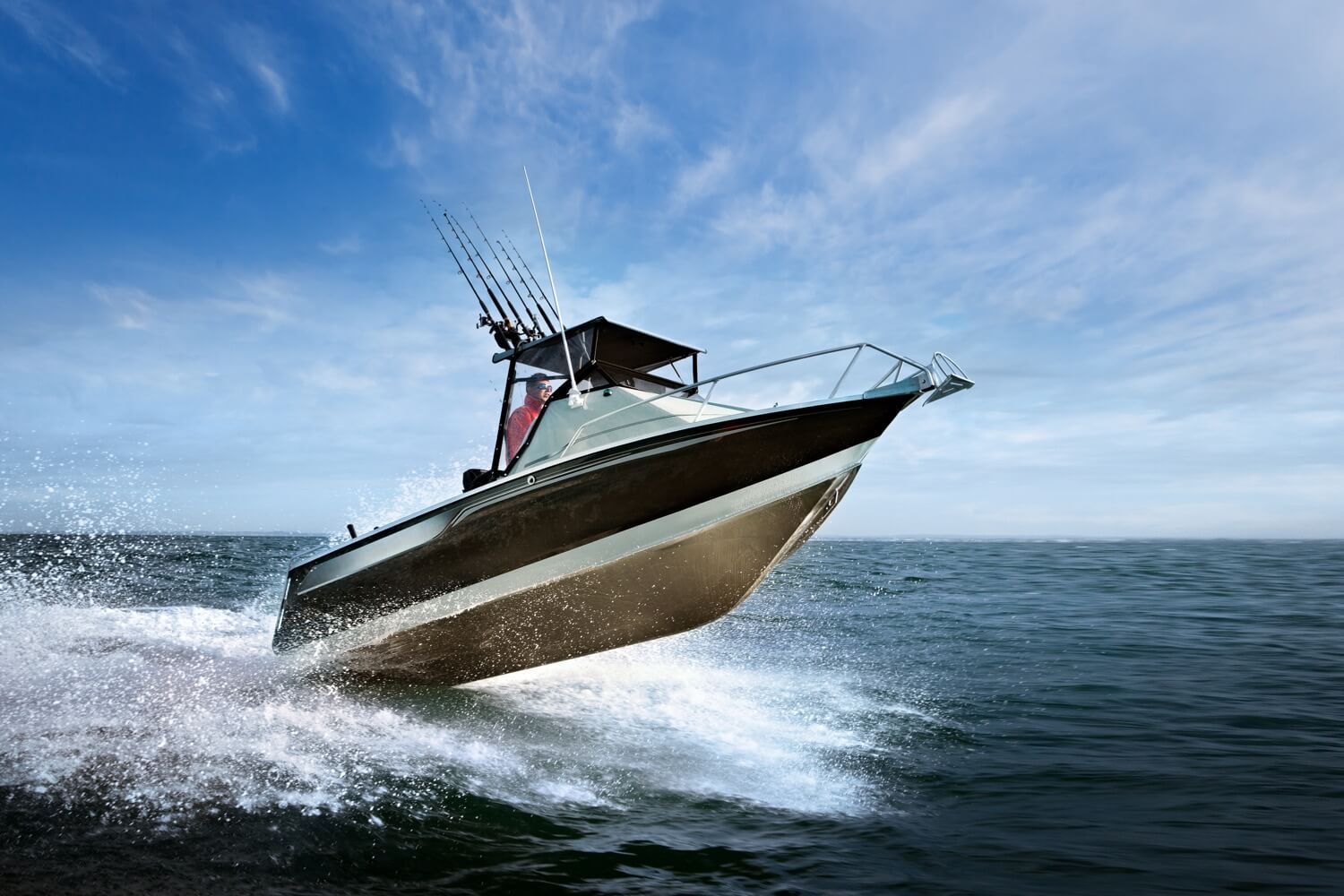
This is a type of planing hull that combines the best of both worlds.
These types of hulls are very popular on modern-day powerboats, and no wonder. With a V-shape that runs from bow to stern, deep into the water, you can handle this boat even in offshore conditions. It handles a lot better than flat-bottomed hulls, while it's at the same time extremely fast.
Examples: Most modern powerboats.
The Deep V-shape acts as a tiny keel of sorts, stabilizing the boat and making it more reliable and maneuverable. The rest of the hull acts as a planing hull, giving the boat its fast edge. Even at high speeds, the Deep V will cut into the water, making it more handleable.
The deep-V design is just one of many variants on the V-hull. Below we'll talk over another, the modified V hull.
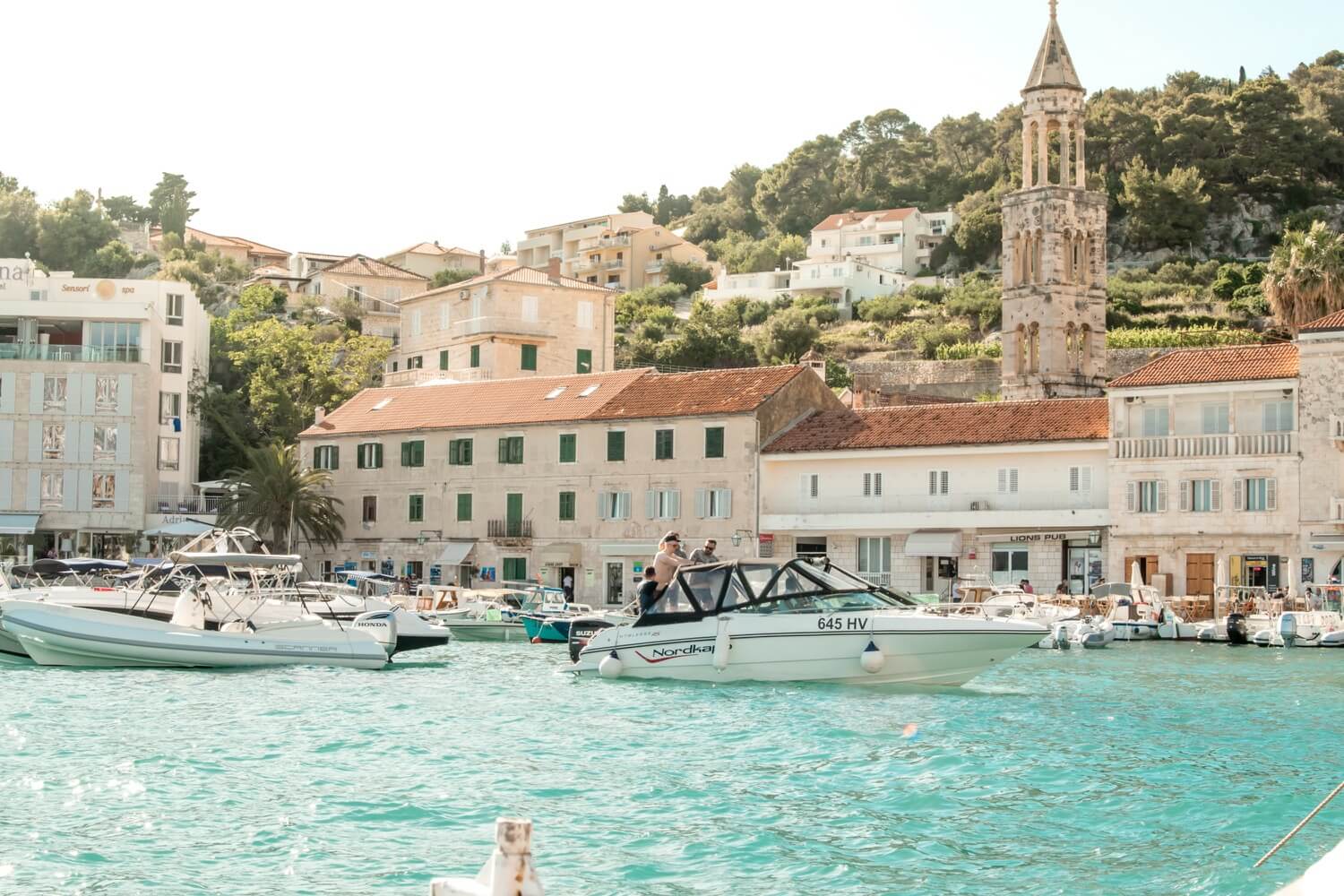
The modified V hull is the ultimate crossover of all planing hull types. It's a mix of the flat-bottom and Deep V hull. It is one of the most popular hull designs for small motorboats. It's flat in the back and then runs into a narrow V-shape to the front. The flat back makes it more stable, and adds a little speed, while the V-shape front ensures good handling.
It is, in short, kind of the compromise-family-sedan of boat hulls. It's the fastest design that's also stable, that's also safe, and that also handles well. But it's not the best in any of those things.
Most powerboats you've seen will have some sort of Vee or Modified-V hull.
Stepped hulls are used on high-performance powerboats. It's a type of planing hull that reduces the hull surface by adding steps, or indents in the hull below the waterline. It looks something like this:
It is said to work extremely well at high speed (60 knots and up) and adds up to 10 knots to your top speed.
On to our next design. There are also planing multihulls, and they might even look like catamarans to you. Meet the pontoon hull.
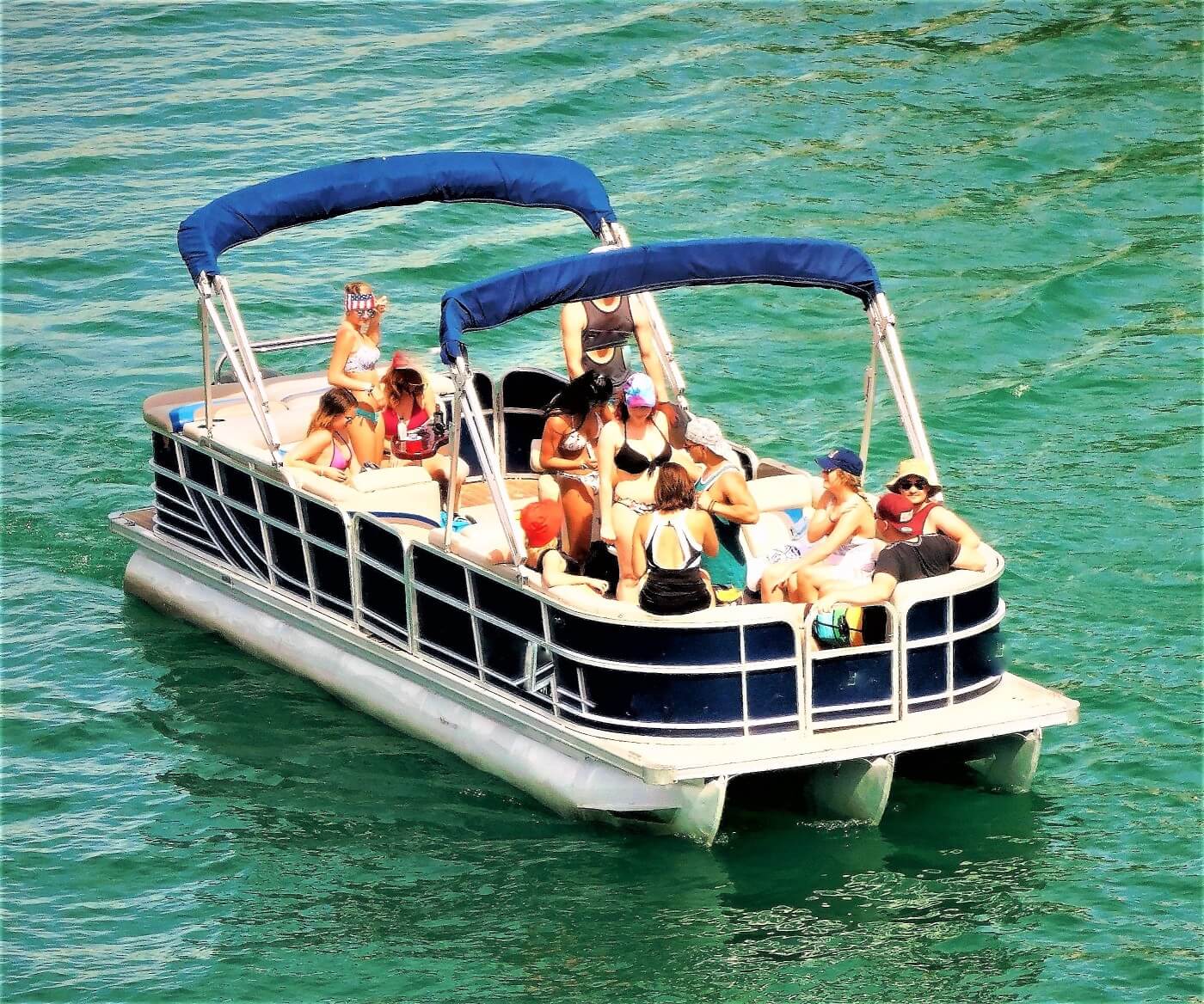
Pontoon hulls float on top of the water using pontoons or floaters that create lift. It's a type of planing multihull that doesn't lie in the water, so it doesn't displace a lot of water. They don't really handle well. As with any multihull, they aren't agile - they're not great at maneuvering. They also have a very large turning radius. But they are extremely stable: there's no chance you'll capsize this.
Examples: Cruisers, modern trawlers, motor yachts, Maine lobster boats
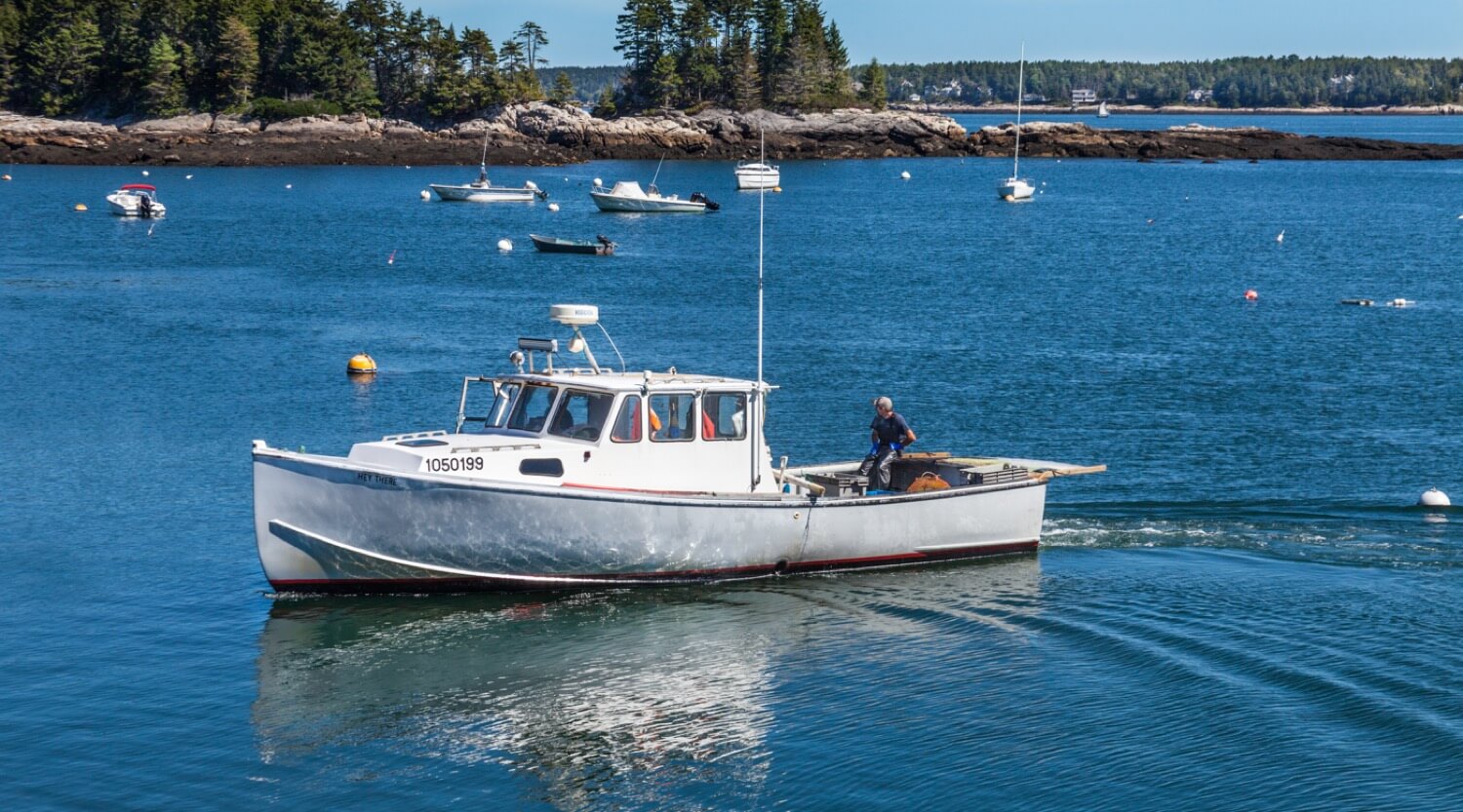
Semi-displacement hulls are smack bang in the center of planning and displacement hulls. They are a bit better for speed than displacement hulls are. They are a bit better for handling rough waters than planing hulls are. This makes them very versatile.
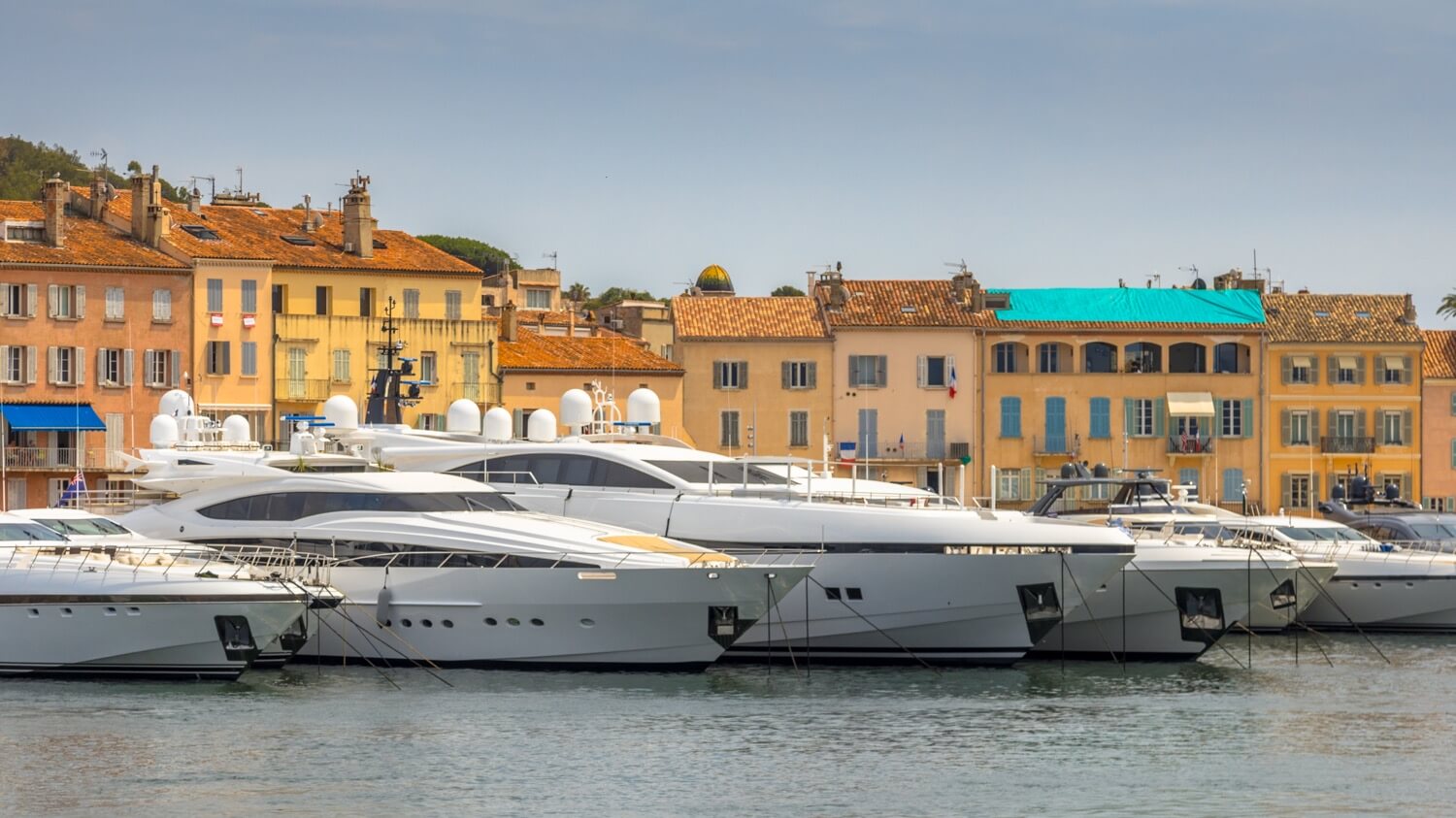
You can see these a bit like being 'half-planing' hulls. These hulls are designed to plane at lower speeds than normal planing hulls - somewhere in the range of 15 - 20 knots, depending on the length of the boat. It also requires less power. When the hull lifts, it reduces drag (water resistance), making it faster and more efficient.
Semi-displacement hulls are perfect for boats that need to be steady and seaworthy but fast at the same time.
For more information about semi-displacement hulls, please check out my in-depth guide to semi-displacement hulls here . It has a diagram and lists all the pros and cons.
So those were my 11 examples, and my step by step explanation of the different types of boat hulls and functions. You now have a solid basic understanding of boat hulls, and can recognize the most common ones. I hope it was helpful, and if you want more good sailing information, be sure to check out my other articles below.
https://www.soundingsonline.com/boats/how-different-hull-types-react-in-rough-water . ↩
I was wondering what your opinion would be on the ship uss Texas as far as hull type and bow type. I think it has a plumb bow and it looks to have a displacement or flat bottom hull. Im doing some research and a better trained eye would be of great help. I used images “bb-35 dry dock” to help see the hull shape. Thank you
Shawn Buckles
Hi Kirk, I don’t know about trained but here we go. I’ve checked the picture, it’s definitely a displacement hull I’d also say it’s a plumb bow.
Hahahahaa imagine liking boats hehehehehe Extremely stable & faster Handles well in rough water Extremely stable & faster Handles well in rough water Extremely stable & faster Handles well in rough water Extremely stable & faster Handles well in rough water Extremely stable & faster Handles well in rough water Extremely stable & faster Handles well in rough water Extremely stable & faster Handles well in rough water Extremely stable & faster Handles well in rough water Extremely stable & faster Handles well in rough water
Leave a comment
You may also like, a complete guide to displacement hulls (illustrated).
The displacement hull is the classic go-to hull design for sailboats and one of the most recognizable ones out there. In this guide, I explain all there is to know …
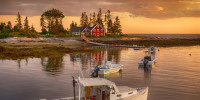
Semi-Displacement Hulls Explained (Illustrated Guide)

The Ultimate Guide to Sail Types and Rigs (with Pictures)
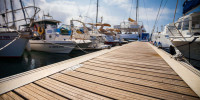
How Much Does it Cost to Dock a Boat for a Year?
Own your first boat within a year on any budget.
A sailboat doesn't have to be expensive if you know what you're doing. If you want to learn how to make your sailing dream reality within a year, leave your email and I'll send you free updates . I don't like spam - I will only send helpful content.
Ready to Own Your First Boat?
Just tell us the best email address to send your tips to:
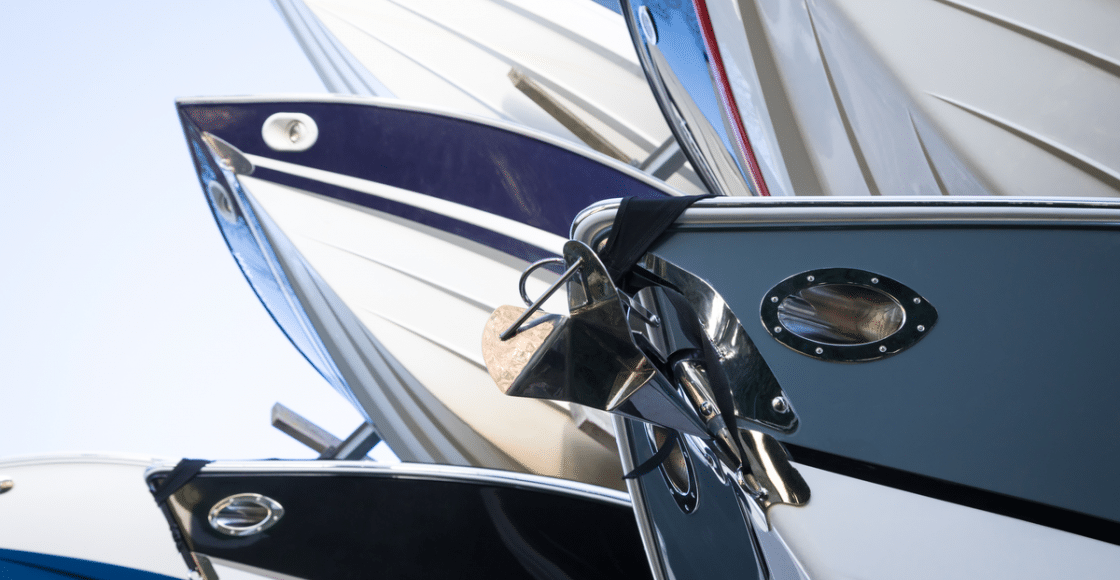
Boat Hulls 101: Complete Guide to Boat Hull Types, Shapes, and Designs

Table of Contents
If you’re new to boating, then you may not have even considered a boat’s hull , its importance, and the way that it affects your time on the water. With the hull being the part of the boat in the water, it is perhaps the most important part as it gives your boat the ability to float. Not only that, but it affects every single characteristic of your boat and the smoothness of your ride. This article on boat hulls will equip you with the technical knowledge and expertise necessary to understand hulls and the way they work.
What is a Boat Hull?
First of all, we’ll go into a bit of detail on what a boat hull is. The hull is the body of the boat. It is sealed to prevent water from transmitting its way through and keeping your boat afloat. A hull can be open where you sit in it, such as a small dinghy, or a deck may cover it as you would find on a yacht.
When there is a deck placed on top of a hull, it opens up many more options for utilizing the space on your boat more appropriately as it is raised to the top of the hull, where more space is apparent. For example, on a deck, you can place a cabin -like you would find on a center console or even a mast and sail rigs to create a sailboat.
When the hull is open, options to use your space effectively are reduced as you sit at the bottom of the bowl shape. In addition to having less space, you also feel the rock of the water in a more pronounced manner as it is just the keel of the boat (the bottom) separating you from the water. Therefore, every wave and lurch in the water that rocks the boat is felt, which may cause you discomfort if you haven’t quite found your sea legs.
Why Are Hulls Important?
The knowledge of how a boat floats is fundamental if you are looking to get into boating. Without actually knowing, you put yourself at risk of compromising your boating activities and creating a danger that you cause your boat to sink. The key line to this knowledge is that the air encapsulating your boat must be denser than the water it sits upon. This not only includes the air but the items on your boat as they contribute towards the pressure that your boat’s hull puts upon the water.
The greater the amount of weight your boat holds, the further it pushes itself into the water, lowering or raising the level that your hull sits in the water. This force displaces the water to a level that is equal to the boat. If the average density of the boat is greater than the water, then the boat shall sink. You can see this in action if you have a small dinghy; the more people you place on it, you’ll notice that your boat edges itself ever so slightly more into the water as the boat’s weight is rising.
Different types of Boat Hulls
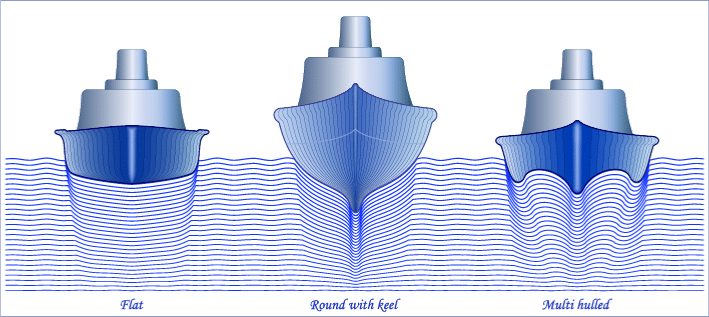
We’ll now walk you through the different types of boat hulls that you come across. The design of the boat’s hull changes the type of boat that you have. If you are browsing through our boat rentals, you’ll notice the various types of boats. Each of these boats has a different type of hull design. For example, a pontoon boat rental is designed for calm waters, whereas a giant yacht is designed for taking on the rough seas, meaning that their hulls vary greatly.
There are two main types of hull: displacement and planing. We’ll give you the rundown of both of these types and the other sub-varieties within them.
Displacement Hulls
The first variety of hulls that we shall examine are displacement hulls. These hulls are typically found on boats that need to carry a heavy load, such as a large fishing boat and big yachts. The hull sits deeper into the water, and the boat is supported by buoyancy, as opposed to its thrust.
Due to the boat sitting deeper in the water, it might be slower, but it will ride steadier. These larger boats are particularly good for the sea as they can handle stronger waves and currents as the boat can stabilize themselves better. This is why you’ll see container ships and other varieties that need to bear a heavy load using these types of hulls.
When it comes to boat rentals, you are most likely to find a sailing boat with a displacement boat hull. The hull is rounded at the bottom, allowing the sailboat to lurch strongly to one side while turning without any danger of capsizing. Thus, we can see the impact that the hull has on your boat rental as it gives your sailboat the extra capacity to lurch around sharp turns and enjoy some exhilarating fun.
Planing Hulls
The other main type of hull is the planing hull. This hull’s design allows the boat to accelerate to higher speeds due to less hull being placed in the water. When a boat with a planing hull is cruising at lower speeds, it operates similarly to a boat with a displacement. When it starts to hit around 15 knots, things start to change depending on the weight of the boat’s load. The flatter surface of the planing hull allows the boat to propel itself upwards to skiff itself across the water. This is what causes boats with planing hulls to obtain higher speeds. In addition, because the bulk of the hull is not placed below the water’s surface, there is less tension from the water holding the boat back, meaning that it can move through the water faster and using less power to obtain a speed that a boat with a displacement hull can.
There is not only one type of planing hull but instead many different varieties. We’ll look through these varieties to examine how it affects your boating experience so that you can make a more informed decision when choosing your next boat rental.
Flat Bottomed Hulls
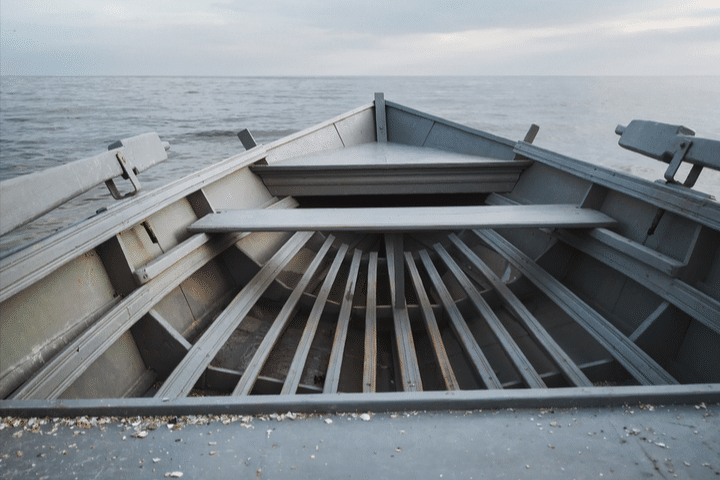
As the name suggests, these hulls do not have the traditional curved hull that reaches a point at the bottom but has a flat surface instead. These tend to be small skiffs or fishing boats where you cast out from. Due to them having a flat hull, they are excellent for getting into shallow water where some of your favorite catches may lie. These boats don’t need much power for the planing power to come into action and reach quick speeds in no time. They also tend to handle well not just on the flats but also on the sea, with choppy water not being a big issue. So, if you’re looking for some gentle fishing on the flats or maybe out in some nearshore waters, check out our range of small flat bottomed hull boats to truly enjoy some great fishing experiences.
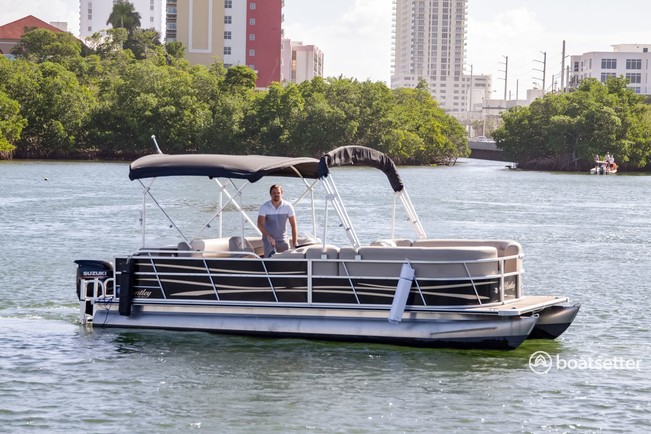
Pontoons are one of the great boat rentals for cruising around and enjoying time with friends because the design of their hulls allows for more space to be created. Pontoons have two-cylinder hulls that sit parallel to each other on the surface of the water. The deck is placed atop these two cylinders, and because they are placed on cylinders, the deck can expand beyond the cylinders, creating more space. This allows for a comfortable seating/social area to be created on the boat, allowing you to use it for parties and some relaxed exploring with the wider family. These boats are best used on inland and flat waters. This is due to waves rocking them a lot more, and a storm at sea can even put them at risk of capsizing. For some fun on a lake, however, pontoons are hard to beat.
In recent years many tritoons have started to crop up on the boat rental market. These are similar to pontoons, but they have a third cylinder that gives them some extra stability. It also means that they can handle a more powerful engine that can bring them up to higher speeds than a pontoon boat. If a pontoon has an engine that is too powerful, then its planing hull can lift it too far above the water’s surface, causing great instability. However, when it comes to tritoons, the greater speeds that you can reach allow you to expand upon other activities and add in some wakeboarding or tubing action onto your party on the water!
V Bottom Hull
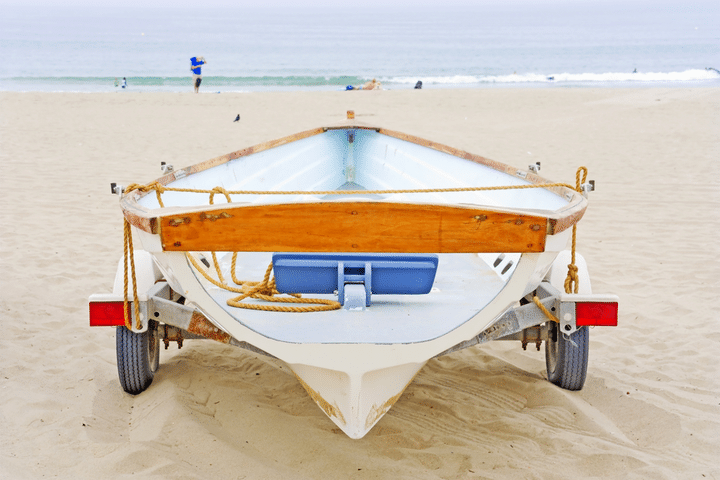
The shape of a v bottom hull has a sharper decline that accumulates in having a meeting point at the bottom, creating a v shape, as stated in the name. Because of the honed hull, one of these boats can cut through the water at decent speeds and are particularly good when out on seawater. However, they require a powerful engine for the boat to go into a planing mode. One of the most common types of v bottom hull boat rentals is center consoles. These are great vessels for going for some nearshore or offshore fishing or some general saltwater exploring. Their v bottom hull allows them to cut through the waves so that you can rush to the best fishing grounds in no time at all.
The tri-hull design is a variation of the v bottom hull. It has a v-shaped hull in the center and two parallel smaller hulls on either side of the main central one. This gives the tri-hull boat some extra stability when going forward . Additionally, this also allows the boat to have more deck space as the hull covers a wider range. One of the big drawbacks of the tri-hull – also known as a cathedral hull – is that the bat rocks more when it is in choppier water because the hull is wider. Nevertheless, tri-hulls make for a great option for fishing or exploring on lakes or calm coves.
Catamaran: A Multi-Hulled Boat
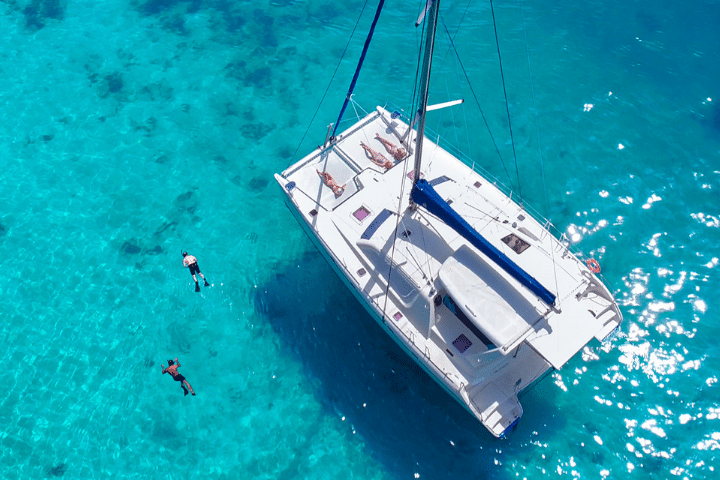
Perhaps the most popular multi-hulled boat is the catamaran. This type of boat has two separate hulls that run parallel to each other. These hulls sit on either side of the boat and the deck connects them. This type of design allows forecast amounts of space onboard . Many catamarans are luxury boats that can have the space to hold swimming pools and even helipads. Because they have dual hulls, catamarans can get themselves in shallow waters and lagoons where other luxury boats cannot. This makes them the perfect boat rental if you plan to visit a location where there are multiple small islands such as Hawaii or The Bahamas. The multi-hull system also provides a lot more stability and comfort, so they are perfect boat rentals if you are prone to suffering from seasickness . Catamarans are not only luxury liners as smaller versions with a trampoline-designed deck can also be found that make for great day adventures.
As we hope you have been able to discover in this blog post, the type of hull that your boat has affects everything about your boat. By having a little bit of knowledge on how the design of a boat’s hull has an impact on your boating experience, you can begin to make more informed decisions on which boat rental is best for you. To reinforce this information a little bit further, check out this video !

Boatsetter empowers people to explore with confidence by showing them a world of possibility on the water. Rent a boat, list your boat, or become a Boatsetter captain today.
Browse by experience

Explore articles
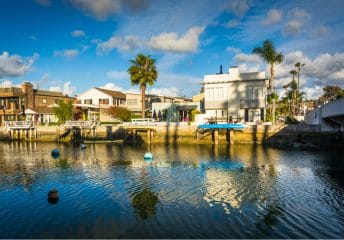
Waterfront Restaurants in Newport Beach
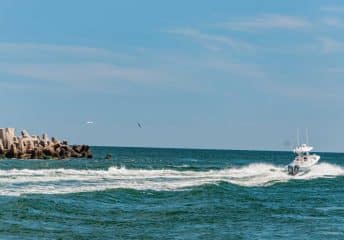
Fishing in New Jersey Guide
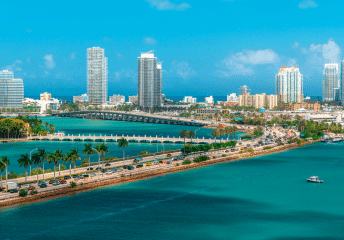
The Ultimate Miami Boating Guide
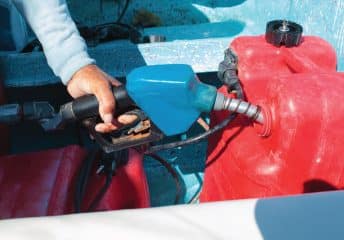
Fueling a Boat: How to Properly & Safely Fuel Your Boat

My Cruiser Life Magazine
Basics of Sailboat Hull Design – EXPLAINED For Owners
There are a lot of different sailboats in the world. In fact, they’ve been making sailboats for thousands of years. And over that time, mankind and naval architects (okay, mostly the naval architects!) have learned a thing or two.
If you’re wondering what makes one sailboat different from another, consider this article a primer. It certainly doesn’t contain everything you’d need to know to build a sailboat, but it gives the novice boater some ideas of what goes on behind the curtain. It will also provide some tips to help you compare different boats on the water, and hopefully, it will guide you towards the sort of boat you could call home one day.
Table of Contents
Displacement hulls, semi displacement hulls, planing hulls, history of sailboat hull design, greater waterline length, distinctive hull shape and fin keel designs, ratios in hull design, the hull truth and nothing but the truth, sail boat hull design faqs.

Basics of Hull Design
When you think about a sailboat hull and how it is built, you might start thinking about the shape of a keel. This has certainly spurred a lot of different designs over the years, but the hull of a sailboat today is designed almost independently of the keel.
In fact, if you look at a particular make and model of sailboat, you’ll notice that the makers often offer it with a variety of keel options. For example, this new Jeanneau Sun Odyssey comes with either a full fin bulb keel, shallow draft bulb fin, or very shallow draft swing keel. Where older long keel designs had the keel included in the hull mold, today’s bolt-on fin keel designs allow the manufacturers more leeway in customizing a yacht to your specifications.
What you’re left with is a hull, and boat hulls take three basic forms.
- Displacement hull
- Semi-displacement hulls
- Planing hulls
Most times, the hull of a sailboat will be a displacement hull. To float, a boat must displace a volume of water equal in weight to that of the yacht. This is Archimedes Principle , and it’s how displacement hulled boats get their name.
The displacement hull sailboat has dominated the Maritimes for thousands of years. It has only been in the last century that other designs have caught on, thanks to advances in engine technologies. In short, sailboats and sail-powered ships are nearly always displacement cruisers because they lack the power to do anything else.
A displacement hull rides low in the water and continuously displaces its weight in water. That means that all of that water must be pushed out of the vessel’s way, and this creates some operating limitations. As it pushes the water, water is built up ahead of the boat in a bow wave. This wave creates a trough along the side of the boat, and the wave goes up again at the stern. The distance between the two waves is a limiting factor because the wave trough between them creates a suction.
This suction pulls the boat down and creates drag as the vessel moves through the water. So in effect, no matter how much power is applied to a displacement hulled vessel, it cannot go faster than a certain speed. That speed is referred to as the hull speed, and it’s a factor of a boat’s length and width.
For an average 38 foot sailboat, the hull speed is around 8.3 knots. This is why shipping companies competed to have the fastest ship for many years by building larger and larger ships.
While they might sound old-school and boring, displacement hulls are very efficient because they require very little power—and therefore very little fuel—to get them up to hull speed. This is one reason enormous container ships operate so efficiently.
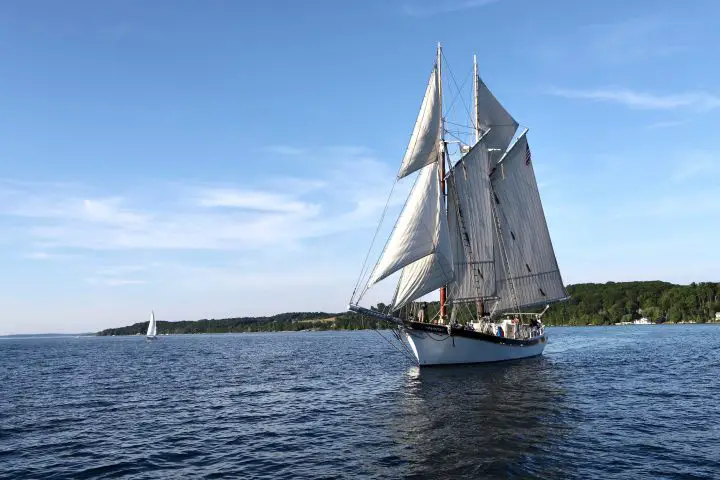
Of course, living in the 21st century, you undoubtedly have seen boats go faster than their hull speed. Going faster is simply a matter of defeating the bow wave in one way or another.
One way is to build the boat so that it can step up onto and ride the bow wave like a surfer. This is basically what a semi-displacement hull does. With enough power, this type of boat can surf its bow wave, break the suction it creates and beat its displacement hull speed.
With even more power, a boat can leave its bow wave in the dust and zoom past it. This requires the boat’s bottom to channel water away and sit on the surface. Once it is out of the water, any speed is achievable with enough power.
But it takes enormous amounts of power to get a boat on plane, so planing hulls are hardly efficient. But they are fast. Speedboats are planing hulls, so if you require speed, go ahead and research the cost of a speedboat .
The most stable and forgiving planing hull designs have a deep v hull. A very shallow draft, flat bottomed boat can plane too, but it provides an unforgiving and rough ride in any sort of chop.
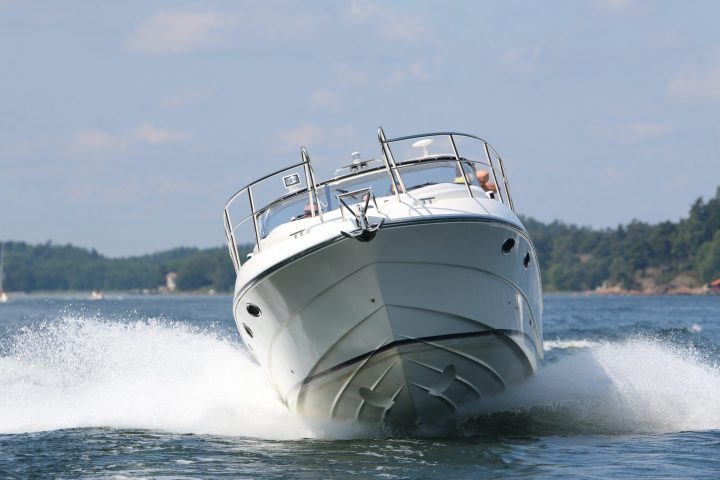
If you compare the shapes of the sailboats of today with the cruising boat designs of the 1960s and 70s, you’ll notice that quite a lot has changed in the last 50-plus years. Of course, the old designs are still popular among sailors, but it’s not easy to find a boat like that being built today.
Today’s boats are sleeker. They have wide transoms and flat bottoms. They’re more likely to support fin keels and spade rudders. Rigs have also changed, with the fractional sloop being the preferred setup for most modern production boats.
Why have boats changed so much? And why did boats look so different back then?
One reason was the racing standards of the day. Boats in the 1960s were built to the IOR (International Offshore Rule). Since many owners raced their boats, the IOR handicaps standardized things to make fair play between different makes and models on the racecourse.
The IOR rule book was dense and complicated. But as manufacturers started building yachts, or as they looked at the competition and tried to do better, they all took a basic form. The IOR rule wasn’t the only one around . There were also the Universal Rule, International Rule, Yacht Racing Association Rul, Bermuda Rule, and a slew of others.
Part of this similarity was the rule, and part of it was simply the collective knowledge and tradition of yacht building. But at that time, there was much less distance between the yachts you could buy from the manufacturers and those setting off on long-distance races.
Today, those wishing to compete in serious racing a building boat’s purpose-built for the task. As a result, one-design racing is now more popular. And similarly, pleasure boats designed for leisurely coastal and offshore hops are likewise built for the task at hand. No longer are the lines blurred between the two, and no longer are one set of sailors “making do” with the requirements set by the other set.
Modern Features of Sailboat Hull Design
So, what exactly sets today’s cruising and liveaboard boats apart from those built-in decades past?
Today’s designs usually feature plumb bows and the maximum beam carried to the aft end. The broad transom allows for a walk-through swim platform and sometimes even storage for the dinghy in a “garage.”
The other significant advantage of this layout is that it maximizes waterline length, which makes a faster boat. Unfortunately, while the boats of yesteryear might have had lovely graceful overhangs, their waterline lengths are generally no match for newer boats.
The wide beam carried aft also provides an enormous amount of living space. The surface area of modern cockpits is nothing short of astounding when it comes to living and entertaining.
If you look at the hull lines or can catch a glimpse of these boats out of the water, you’ll notice their underwater profiles are radically different too. It’s hard to find a full keel design boat today. Instead, fin keels dominate, along with high aspect ratio spade rudders.
The flat bottom boats of today mean a more stable boat that rides flatter. These boats can really move without heeling over like past designs. Additionally, their designs make it possible in some cases for these boats to surf their bow waves, meaning that with enough power, they can easily achieve and sometimes exceed—at least for short bursts—their hull speeds. Many of these features have been found on race boats for decades.
There are downsides to these designs, of course. The flat bottom boats often tend to pound when sailing upwind , but most sailors like the extra speed when heading downwind.
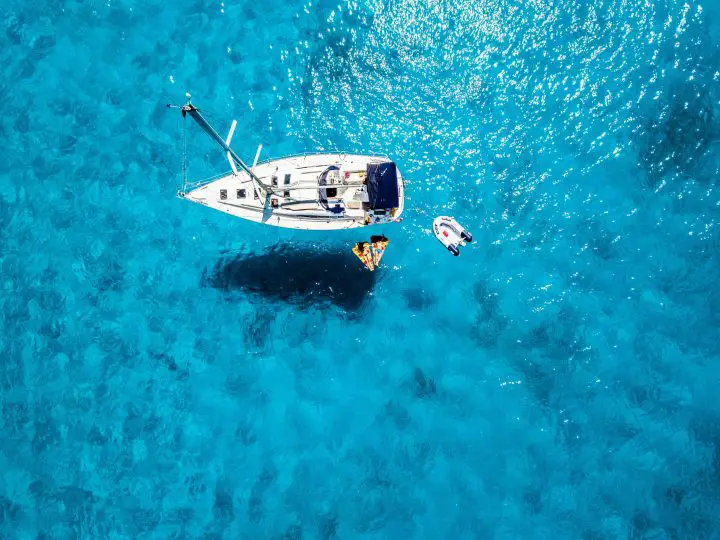
How Do You Make a Stable Hull
Ultimately, the job of a sailboat hull is to keep the boat afloat and create stability. These are the fundamentals of a seaworthy vessel.
There are two types of stability that a design addresses . The first is the initial stability, which is how resistant to heeling the design is. For example, compare a classic, narrow-beamed monohull and a wide catamaran for a moment. The monohull has very little initial stability because it heels over in even light winds. That doesn’t mean it tips over, but it is relatively easy to make heel.
A catamaran, on the other hand, has very high initial stability. It resists the heel and remains level. Designers call this type of stability form stability.
There is also secondary stability, or ultimate stability. This is how resistant the boat is to a total capsize. Monohull sailboats have an immense amount of ballast low in their keels, which means they have very high ultimate stability. A narrow monohull has low form stability but very high ultimate stability. A sailor would likely describe this boat as “tender,” but they would never doubt its ability to right itself after a knock-down or capsize.
On the other hand, the catamaran has extremely high form stability, but once the boat heels, it has little ultimate stability. In other words, beyond a certain point, there is nothing to prevent it from capsizing.
Both catamarans and modern monohulls’ hull shapes use their beams to reduce the amount of ballast and weight . A lighter boat can sail fast, but to make it more stable, naval architects increase the beam to increase the form stability.
If you’d like to know more about how stable a hull is, you’ll want to learn about the Gz Curve , which is the mathematical calculation you can make based on a hull’s form and ultimate stabilities.
How does a lowly sailor make heads or tails out of this? You don’t have to be a naval architect when comparing different designs to understand the basics. Two ratios can help you predict how stable a design will be .
The first is the displacement to length ratio . The formula to calculate it is D / (0.01L)^3 , where D is displacement in tons and L is waterline length in feet. But most sailboat specifications, like those found on sailboatdata.com , list the D/L Ratio.
This ratio helps understand how heavy a boat is for its length. Heavier boats must move more water to make way, so a heavy boat is more likely to be slower. But, for the ocean-going cruiser, a heavy boat means a stable boat that requires much force to jostle or toss about. A light displacement boat might pound in a seaway, and a heavy one is likely to provide a softer ride.
The second ratio of interest is the sail area to displacement ratio. To calculate, take SA / (D)^0.67 , where SA is the sail area in square feet and D is displacement in cubic feet. Again, many online sites provide the ratio calculated for specific makes and models.
This ratio tells you how much power a boat has. A lower ratio means that the boat doesn’t have much power to move its weight, while a bigger number means it has more “get up and go.” Of course, if you really want to sail fast, you’d want the boat to have a low displacement/length and a high sail area/displacement.
Multihull Sailboat Hulls
Multihull sailboats are more popular than ever before. While many people quote catamaran speed as their primary interest, the fact is that multihulls have a lot to offer cruising and traveling boaters. These vessels are not limited to coastal cruising, as was once believed. Most sizable cats and trimarans are ocean certified.
Both catamarans and trimaran hull designs allow for fast sailing. Their wide beam allows them to sail flat while having extreme form stability.
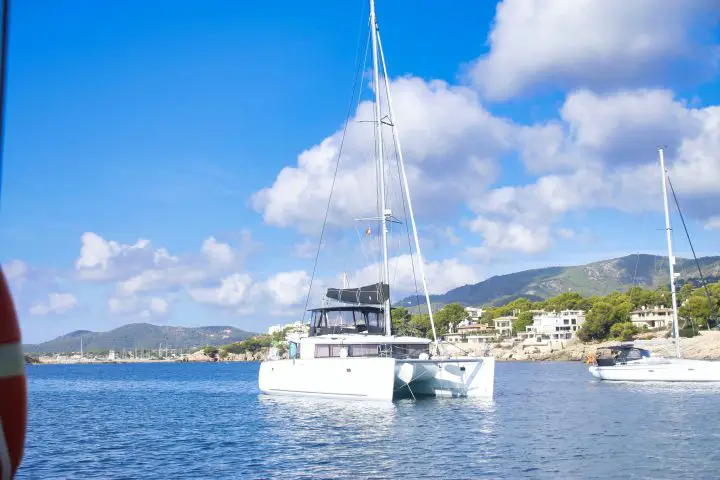
Catamarans have two hulls connected by a large bridge deck. The best part for cruisers is that their big surface area is full of living space. The bridge deck usually features large, open cockpits with connecting salons. Wrap around windows let in tons of light and fresh air.
Trimarans are basically monohulls with an outrigger hull on each side. Their designs are generally less spacious than catamarans, but they sail even faster. In addition, the outer hulls eliminate the need for heavy ballast, significantly reducing the wetted area of the hulls.
Boaters and cruising sailors don’t need to be experts in yacht design, but having a rough understanding of the basics can help you pick the right boat. Boat design is a series of compromises, and knowing the ones that designers and builders take will help you understand what the boat is for and how it should be used.
What is the most efficient boat hull design?
The most efficient hull design is the displacement hull. This type of boat sits low in the water and pushes the water out of its way. It is limited to its designed hull speed, a factor of its length. But cruising at hull speed or less requires very little energy and can be done very efficiently.
By way of example, most sailboats have very small engines. A typical 40-foot sailboat has a 50 horsepower motor that burns around one gallon of diesel every hour. In contrast, a 40-foot planing speedboat may have 1,000 horsepower (or more). Its multiple motors would likely be consuming more than 100 gallons per hour (or more). Using these rough numbers, the sailboat achieves about 8 miles per gallon, while the speedboat gets around 2 mpg.
What are sail boat hulls made of?
Nearly all modern sailboats are made of fiberglass.
Traditionally, boats were made of wood, and many traditional vessels still are today. There are also metal boats made of steel or aluminum, but these designs are less common. Metal boats are more common in expedition yachts or those used in high-latitude sailing.
Matt has been boating around Florida for over 25 years in everything from small powerboats to large cruising catamarans. He currently lives aboard a 38-foot Cabo Rico sailboat with his wife Lucy and adventure dog Chelsea. Together, they cruise between winters in The Bahamas and summers in the Chesapeake Bay.

The Definitive Guide to Sailboat Hull Types
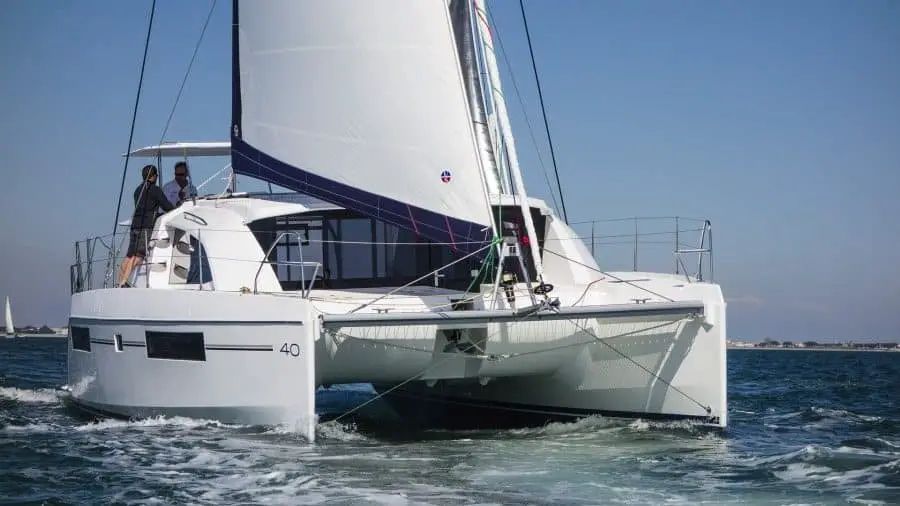
If you’ve ever been on a sailboat or any kind of boat, one of the first parts of the boat you saw was its hull and you might not have even known it.
Simply put, the hull is the bottom part of a boat that rides in and on top of the water. When a sailboat is underwater, it’s accompanied by the keel and the rudder.
Just like knowing the different types of sails , knowing the hull type on your sailboat means you’ll have a better understanding of how your boat operates while it’s out on the water.
All in all, the hull of any boat is meant to keep the boat afloat and to ensure minimum resistance against the water while being propelled forward. Now let’s dive into the different sailboat hull types and even some other types of hulls in boats in general!
Main Sailboat Hull Types
There are two main hull types that we’ll be looking at that encompass the many other types of hulls that vary from these two main types.
Depending on the type of boat you have, you’ll be floating around with one or the other. We’ll take a look at what you can expect if your boat has either of these hull types.
Displacement Hulls
The most common sailboat hull type you’ll find out there is the displacement hull, which is very effective at pushing the water aside and powering through it during forward propulsion.
A displacement hull is often found not only on sailboats, but also fishing, freight, cruise, and other larger boats.
All boats that have a displacement hull will be limited in their speed based on the waterline length of the hull. Regardless of how much power you use, whether it’s from the wind or motor, the maximum speed can’t be increased.
This is why you’ll see people mention the waterline length of a boat’s hull when putting them on the market to sell.
The big advantage of having a displacement hull is that they require far less power to get moving across the water compared to the other main hull type; the planing hull.
What this means is that your boat will be able to cruise for a long time with the same amount of energy, which also allows you to carry more items on board.
Planing Hulls
It’s almost guaranteed that your sailboat won’t have a planing hull since they’re most commonly found on powerboats and personal watercrafts (PWCs), like jet skis.
Planing hulls allow the boat to lift itself out of the water, reducing drag and increasing the speed of the boat.
Almost any boat that’s equipped with a planing hull will be able to attain a speed much greater than a boat with a displacement boat.
The main reason for this is the lift that’s produced when traveling at high speeds which reduces drag on the water.
The maximum speed of a boat with a planing hull is dependent on the horsepower of the engine and how much of the hull can be removed from the water while still cruising.
The biggest advantage of having a planing hull is that your boat will be able to pick up speed quickly and reach a greater maximum speed.
This allows for shorter journey times. However, there needs to be a source of all that energy, which comes directly from a combustion engine. The faster a boat with a planing hull goes, the larger the cost of fuel will be.
How Planing Works
The way planing works is actually pretty interesting, so I thought I’d dive into it a bit. Even though a sailboat is virtually guaranteed not to have one, it’s always nice to know how other boats operate while out on the water.
1. Displacement
Before a boat with a planing hull actually planes, it starts out acting like a displacement hull.
As a matter of fact, a boat with a planing hull needs to reach a certain speed before it starts to produce lift. Before that happens, it’s essentially a displacement hull.
While a boat with a planing hull is picking up speed and lifting itself out of the water, it’s in a plowing mode.
You’ll know when a boat is in plowing mode when the bow of the boat is elevated and the boat is throwing a relatively large wake. The goal, however, is to move from plowing mode to planing mode, which requires further acceleration.
Once the boat with a planing hull reaches a certain speed, it’ll leave plowing mode and enter planing mode.
As I already described, planing is when the hull is gliding across the water with a smaller amount of the hull dragging in the water when compared to the previous modes. Different boats will start planing when reaching different speeds.
Common Sailboat Hull Styles
Now that we’ve gone over the two main types of hulls you’ll find in sailboats and other types of boats, we have a good foundation for the hull styles you’ll commonly see when out on the water.
There are three main hull styles that you’ll see quite often, so let’s take a look at those.
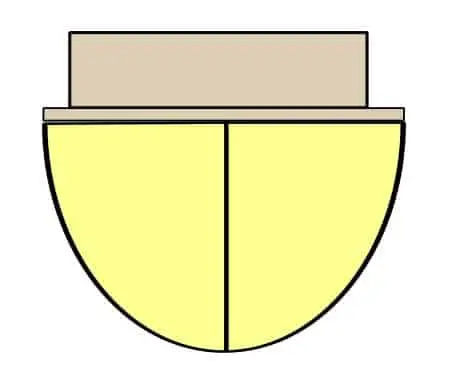
By far the most common hull style you’ll see on sailboats is the monohull, which is simply a single hull.
Traditionally, a sailboat will have a monohull and they can be found all over the place. It’s probably the style of hull that comes to most peoples’ mind when imagining a sailboat.
Monohulls on sailboats are virtually all displacement hulls. As we went over previously, this allows your sailboat to cruise for long stretches and has a greater efficiency compared to planing hulls.
However, most boats that exist on planet earth are monohulls, including powerboats, which can also be of the planing hull type.
When it comes to a monohull on a sailboat, the only way it can keep its stability is to have a proper keel attached to it.
A keel is a wing-like object that sticks out of the bottom of the hull in the water and provides a sailboat with ballast for stability. It’s important to understand how a keel works when operating a sailboat with a monohull since it’s one of the main reasons a sailboat can move forward without tipping.
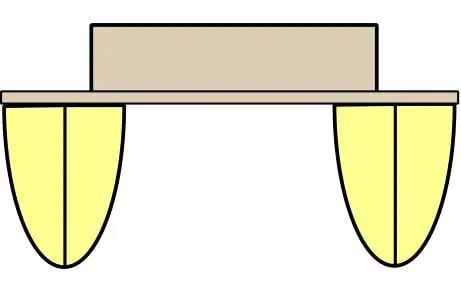
There are certainly a lot of monohull sailboats out there, but there’s no doubt that you’ll also see your fair share of catamarans.
Catamarans are sailboats with two hulls and operate quite differently than their monohull cousin. Catamarans are known to be fast and are likely to outrun most monohull sailboats.
Unlike monohull sailboats, catamarans can be fitted with displacement hulls as well as planing hulls. However, even if they have a planing hull they can still produce a relatively good amount of cruising time and do so rather efficiently.
Catamarans are a bit different than monohulls in the sense that they can reach greater speeds. There are several reasons for this. For one, a catamaran doesn’t need a ballast for stability since the broad stance between the two hulls provides enough stability.
This means there’s no need for a large, heavy keel. Second, they’re often built out of lightweight materials that allow the boat to reach a higher maximum speed compared to heavier sailboats.
Also, if a catamaran has a planing hull, it’ll have the ability to produce lift resulting in reduced drag on the water and even greater speeds.
Unfortunately, catamarans do have the disadvantage of being more likely to capsize in unwanted high-wind situations.
Also, it’s very difficult for a catamaran to recover from capsizing as opposed to a monohull sailboat that has a good ballast from its keel.
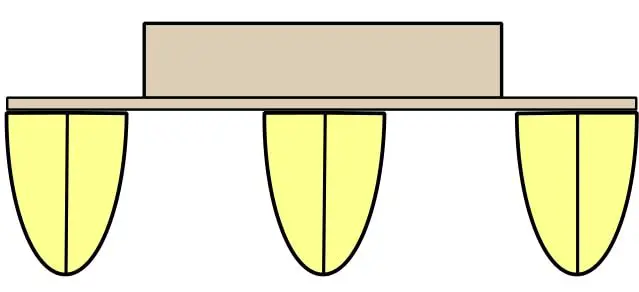
You might have already guessed from the name, but I’ll state the obvious anyway. A trimaran is exactly like a catamaran but with three hulls instead of two.
Often times you’ll see a trimaran look like a monohull sailboat with a pair of hulls attached to its side.
Similar to a catamaran, trimarans can hit speeds much greater than your average monohull sailboat. As a matter of fact, they’re known to be “unsinkable” under the situation that the hulls on the port and starboard side of the central hull are completely filled up with water.
One of the coolest aspects of having a trimaran is that when it has a planing hull and/or a hydrofoil, the trimaran’s central hull will lift completely out of the water.
This gives it the effect that it’s floating across the air, which is the result of lift produced from the planing hull or a hydrofoil. It’s very cool to see this!
Sailboat Hull Bottoms
Apart from the main boat hull styles, like the monohull, catamaran, and trimaran, there are hull bottoms that pop up in the world of boating that can differ in style and function.
These hull bottoms are more of a deeper look at the hulls of a monohull, catamaran, or trimaran, so you can think of them more as a feature of any of the previously mentioned styles of hull.
Flat Bottom
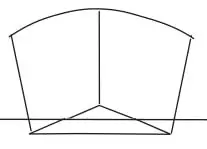
A very common hull bottom for boats that are derived from the planing hull type is a flat bottom hull.
The flat bottom hull is considered to be one of the less stable styles of hulls, especially when confronted with rough waters.
However, you’ll often find them on boats that don’t necessarily ride in these situations, including fishing or taxi areas.
- Good for small lakes and rivers due to having a shallow draft.
- Able to hit relatively high speeds once entering planing mode.
Disadvantages
- Not good at handling choppy waters resulting in a rough ride.
Round Bottom
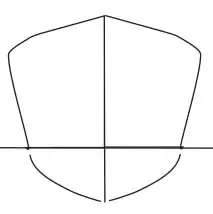
When it comes to sailboats, you’re most likely going to run into monohull sailboats that have a displacement style hull with a round bottom.
While these are the most common hull bottom for sailboats, they can also be found on smaller boats that are used for fishing, canoeing, and other similar kinds of boats.
- Easily moves through the water due to being a displacement hull type.
- When accompanied by a keel, it produces a great amount of stability from the ballast.
- Without a keel, it can roll when entering and exiting the boat as well as when waves are present.
- Less maneuverable compared to other hull styles.
Deep ‘V’ Bottom
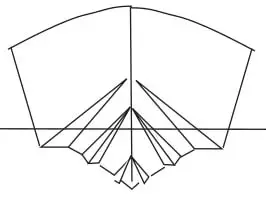
If you’re operating a powerboat, then in all likeliness your boat has a planing hull with a deep ‘V’ bottom.
Since deep ‘V’ bottoms are found on planing hulls, these types of boats will be able to pick up speed quickly and at high maximums. This is the most common setup for powerboats out on the water.
This is the most common type of powerboat hull. This hull type allows boats to move through rough water at higher speeds and they provide a smoother ride than other hull types.
- Provides a smooth ride compared to its flat bottom rival.
- Good at handling rough water.
- Requires more power to plane compared to its flat bottom rival.
- Cannot handle sharp turns very well resulting in potential rolling or banking.
Multi-Chine Bottom
We took a good look at multi-hull styles like the catamaran and the trimaran earlier, which are the exact style of hulls that have a multi-chine bottom.
A multi-chine bottom is a great example of a displacement hull on either a catamaran or trimaran as it’s the most common bottom you’ll find.
- In a multi-hull boat, it has a great amount of stability due to its wide beam.
- In a multi-hull boat, it needs a large area when either tacking or jibing.
Main Parts of a Sailboat Hull
There’s some terminology I threw around while describing the many types of hulls a sailboat and other types of boats have.
As is the case with a lot of activities, learning the terminology is just something you have to do.
Thankfully, the terminology will eventually sink in overtime and eventually you’ll be able to ring off any hull terminology that comes up.
The bow is simply the most forward part of a sailboat and, thus, the very front of the hull.
The stern, conversely to the bow, is the most backward part of a sailboat and, thus, the very end of the hull.
The port side of a hull is the left side. I always remember this with the phrase “I left my port on the table”, with the port being wine.
This just so happens to also be the side where boats will have a red light turned on at night, which is the color of port wine.
The starboard side of a hull is on the right side.
Opposite the port side, in the evening boats will have a green light turned on and will be located on the starboard side of the boat.
Fore is a sailor’s way of saying “forward”.
Aft is a sailor’s way of saying “back”.
A transom is the aft-most (see what I did there?) section of the boat that connects the port and starboard sections of the boat.
The flare of a hull is where the hull starts to form a large angle the closer the hull gets to the deck.
The waterline is the line around the hull where the water touches when under a normal load.
Waterline Length
The waterline length, once referred to as the Load Waterline Length (LWL), is the length of the hull where the waterline is located.
This is not the entire length of the boat.
Length Overall (LOA)
The length overall (LOA) is, you guessed it, the overall length of the boat. This is measured from the tip of the bow to the end of the stern.
The freeboard is the space on the hull of a boat above the waterline and below the deck.
The draft is the length from the bottom-most part of a boat (the tip of the keel on a sailboat) and the waterline.
Get the very best sailing stuff straight to your inbox
Nomadic sailing.
At Nomadic Sailing, we're all about helping the community learn all there is to know about sailing. From learning how to sail to popular and lesser-known destinations to essential sailing gear and more.
Quick Links
Business address.
1200 Fourth Street #1141 Key West, FL 33040 United States
Copyright © 2024 Nomadic Sailing. All rights reserved. Nomadic Sailing is a participant in the Amazon Services LLC Associates Program, an affiliate advertising program designed to provide a means to earn fees by linking to Amazon.com and affiliated sites.
Unveiling 13 Sailboat Hulls: Navigate Waves Like a Pro
Ever wondered why sailboats cut through waves like butter? Dive in and discover 13 hulls that make your sea adventures unforgettable!

A sailboat is only as good as the hull, and it ultimately determines how well you can navigate through the water. The hull of a boat plays a massive role in what type of water you can sail through and your overall speed. So, what are the types of sailboat hulls and how are they different?
The main types of sailboat hulls are planing hulls, displacement hulls, and semi-displacement hulls which offer the best of both worlds. Multi-hull boats such as pontoons and tritoons have even weight distribution and can handle rough waters. Flat-bottom sailboats are the most stable, but they don’t work well in deep waters.
Catamarans and trimarans feature space between each hull which adds stability and protects the deck from water. Choosing a sailboat with the ideal hull for you is essential in finding one that you will keep for years to come. Follow along as we explore the different types of sailboats and see what makes them unique.
Sailboat Hull Types
There are 13 types of sailboat hulls ranging from bilge keels and fin keels to displacement hulls. The ideal sailboat hull varies for you based on factors such as what type of water you’re in and weather conditions. For example, some hulls, such as flat bottoms, are ideal for shallow and smooth water .
On the other hand, semi-displacement hulls are perfect for every application whether you’re in shallow or deep water. Let’s take a look at the different types of sailboat hulls and see how they differ.
1. Planing Hull

Sail Magazine
Planing hulls are the first of the three major categories of sailboat hulls. You can find planning hulls with 2 different shapes: v-shaped and flat-bottom hulls. Planing hulls sit on top of the water and don’t sink deep like other types .
Many boaters and enthusiasts prefer this design because of how well a boat with planning hulls can move across the water. Most fishing sailboats feature planning hulls because of how smoothly they can glide on the surface whether you’re on an ocean or lake . Boats with planing hulls can also move faster than other types of boats, and that is their main appeal.
2. Displacement Hull

Improve Sailing
Boats with displacement hulls are slower than boats with planing hulls, but that doesn’t mean that they’re bad . While they don’t move as fast, many boaters consider displacement sailboat hulls to be much smoother. This comes in handy if you live in an area with rough waters and strong winds .
A displacement hull is rounded instead of flat at the bottom like a planning hull. The main downside to sailboats with displacement hulls is that you will likely use more fuel than you normally would. That is because the shape isn’t as aerodynamic and you’ll need the extra engine power to move through the water.
3. Semi-Displacement Hull

Seattle Yachts
As the name suggests, semi-displacement hulls combine the best of both worlds between planing and displacement hulls. A semi-displacement hull is both flat and rounded at certain parts providing both speed and stability. They aren’t as fast as a flatter planing hull, but they’re faster than a standard displacement hull .
The unique shape of semi-displacement hulls helps reduce resistance. This alone can help take a load off of your engine and let it work optimally under most water conditions. You also get the benefit of extra storage in most cases because boats with semi-displacement hulls have storage-friendly floor plans.
4. Multi-Hull

Multi-hull boats, such as pontoons and tritoons, are smooth and easy to sail . There are separate hulls on each side of the boat that provide stability and let you power through rough waters. On a pontoon, each hull is a large tube filled with air known as a toon.
Multi-hull boats generally sit higher above the water than most boats because of their unique design. They are popular for fishing, cruising, and entertainment. A key downside to multi-hull boats is that they typically operate loudly because the propeller may not be fully submerged in the water .
5. Monohull

The vast majority of sailboats that you will come across have a monohull . They are easy to sail, transport, and even dock at a marina because of their simple design. As the name suggests, they only feature one hull and are suitable for calm and rough water.
You can save money with a monohull sailboat compared to a multi-hull sailboat like a catamaran. A key advantage to monohull sailboats is that they are incredibly safe. You don’t have to worry about capsizing as much as you would with a multi-hull sailboat.
6. Flat-Bottom

Sailing Magazine
Flat-bottom hulls are essentially the simplest form of planning hulls. You can find flat-bottom hulls on the majority of sailing dinghies, and that’s what they are most suitable for. They aren’t ideal for oceans or rough waters, but flat-bottom sailboats are perfect for rivers and lakes .
Rowboats also feature flat-bottom hulls, and they aren’t known for being particularly smooth. You get less precision with flat-bottom hulls, especially if you have to steer and turn unexpectedly. Otherwise, you won’t have trouble with a flat-bottom sailboat hull if you go out for a quick fishing trip in an area you’re familiar with that has smooth waters.
7. Catamarans

Catamarans feature a unique take on the traditional multi-hull design . They feature 2 hulls with space between them that usually features a deck. Sometimes, the space between each hull features a trampoline or even a small pool or tub.
They aren’t suitable liveaboard boats, but they are perfect for taking out for a day of cruising and fishing. Catamarans are as smooth as possible, but that sometimes comes at the cost of speed. However, they often feature multiple engines which can consume a lot of fuel but also put less strain on each engine.
8. Trimaran

Quiberon 24 Television / Youtube
Trimarans are essentially a step up from catamarans because they feature a third hull. Many people prefer the stability that trimarans offer over catamarans. The extra stability also helps increase the speed that you can cruise at with a trimaran .
They are also safer than catamarans because the multi-hull design allows for perfect weight distribution. That’s not to say that catamarans are unsafe, but the extra hull that trimarans feature is more durable. Most of the weight lies on the center hull and the rest is distributed between the 2 outer hulls .

BlueWater Yacht Sales
Deep v hulls are another type of planing hull, but they are less common than some of the other varieties. Granted, high-end modern powerboats often feature a deep v hull, but they come at a high price. The v design allows the hull to cut into the water easily which lets you easily control the boat in any type of water condition .
Generally, the deadrise goes between 21 and 26 degrees for a deep v hull which is ideal for many boaters. However, boats with deep v hulls are primarily geared toward anglers and aren’t ideal for cruising at high speeds. Deep v hulls are usually made out of aluminum which means that they will be loud as they glide across the water.
10. Bilge Keel

Bilge keel hulls are specifically designed to reduce the risk of a boat rolling . The strange shape of a bilge keel hull lets it stand upright whether you’re on the shore or in shallow waters. This makes them much easier to maintain than many other types of boats.
The bottom of a bilge keel hull features multiple fins in a row that helps ensure a smooth ride. They never feature more than 2 keels which means that they have a shallow draft and you can easily beach them. The one downside to sailboats with a bilge keel hull is that they are difficult to transport to a port because of the bottom.
11. Bulb Keel

Bulb keel sailboats feature a teardrop-shaped ballast that increases the boat’s stability. They are even faster than bilge keel sailboats because of how hydrodynamic they are . Unlike some types of hulls, a bulb keel works just as well on the sea as it does on lakes and rivers.
They feature incredible weight distribution because of the inclusion of an extra ballast. However, you have to be careful with bulb keel sailboats in shallow waters near the shore. They are more susceptible to damage at the bottom so they can be difficult to bring to shore and require precision.
12. Fin Keel
Jordan Yacht Brokerage
Unlike bulb keel and bilge keel hulls, fin keel sailboats are perfect for raising . Fin keel hulls improve the draft of a sailboat which comes in handy when you want to reach high speeds. Some sailors use fin keel sailboats to travel long distances across the water, especially if the weather is in their favor.
They are a perfect happy medium between flat and round-bottomed hulls offering the best of both worlds. Fin keel sailboats are also quite comfortable because of the unique bottom shape that can easily handle choppy waters . With that said, they aren’t ideal for beginners because they can be difficult to steer compared to standard flat-bottom hulls if you are inexperienced.
13. Cathedral Hull

Jeff Clark / YouTube
Cathedral hulls get their name from their appearance which is similar to that of a classic cathedral. The unique appearance is one of the biggest benefits of cathedral hulls because the whole boat takes on that shape. They feature sharp bows and high sterns that are immediately recognizable.
With that said, cathedral-hull sailboats can be difficult to steer compared to flat-bottom or rounded hulls because of their bulky shape . You get plenty of storage with cathedral hulls which makes them perfect for long day trips with many people. They are incredibly stable because of the wide beams and wide berth, so there isn’t a serious risk of capsizing as long as you pack your cargo well.
What Type of Hull is Best For Rough Waters?

Any type of boat with a v-shaped hull is best for rough waters. Whether it’s a deep v or shallow v, this hull design makes it easy to cut through rough water without getting too much on your deck. The last thing that you want is to go through rough waters and take on excess water weight onboard .
They are specifically designed to glide across the water without sinking low which is necessary for choppy waters. Boats with v-shaped hulls also often come with high-performance engines, so they offer the best of both worlds. Generally, deep v hulls are the most precise and smoothest when it comes to rough waters .
They are perfect for keeping course which is essential if you’re in rough waters that can kick you off of your path. You can find many deep v hulls that are made out of fiberglass which is incredibly durable and withstand water exposure. Fiberglass v-shaped hulls are also easy to repair either by yourself or at a professional shop at a low cost.
What is The Most Stable Hull Design?

Flat-bottom hull sailboats have the most stable design for shallow water and multi-hull boats are the most stable in deep water. The inclusion of multiple hulls adds stability in deep water that prevents water from landing on the deck. This can save you expensive repairs and can also prevent your sailboat from capsizing.
Pontoons and tritoons are multi-hull boats and they are specifically popular because of their stability. You can’t find a more stable design than a flat-bottom hull if you plan to cruise in shallow waters . Flat-bottomed hulls are also typically the fastest when you aren’t far from shore, especially if you are in smooth waters.
The box shape of flat-bottomed hulls is conducive to gliding across shallow water. However, they struggle to ride across waves and choppy waters because of the wide surface area. Multi-hull boats such as pontoons and tritoons are the best option if you plan to take your boat out to lakes, rivers, and oceans because they thrive in any scenario.
What is Better Flat Bottom or V-Hull?
Flat-bottom boats are better than v-hull boats for most uses, but v-hulls are better in choppy and deep waters. You can get by with a flat bottom in oceans and lakes alike, but they don’t always do well in deep water. Conversely, v-hull boats can tear through rough and wavey water even at steep depths .
V-hull boats don’t do well in shallow waters and you are more likely to get stuck than you would be with a flat-bottom boat. Of course, you can always have someone push from behind when you depart, but that doesn’t help much when you return to shore. V-hull boats are the better option for deep waters, however, even if you are in rough water .
Flat-bottom boats take on more water than v-hull boats unless you stay in calm waters. It’s always worth choosing a boat that won’t take on water that will weigh it down. However, if you’re looking for a reliable boat with a high capacity, then I would recommend looking into v-hull boats.
What Type of Hull Cuts Through Water?

Displacement hulls are the best at cutting through the water, especially when compared to planing hulls. They don’t rely on a powerful engine to cut through the water because of their design. Displacement hulls displace water once you lower them in from the shore.
This displacement isn’t ideal for speed, but it is perfect for rough waters and strong winds. You can take sailboats with displacement hulls out on the ocean without having to worry about waves . They also work well in freshwater, but they are less necessary because of the lack of waves compared to the ocean.
Otherwise, you can get the best of both worlds with a semi-displacement hull . They aren’t quite as precise as displacement hulls, but they are better at navigating choppy waters than planing hulls. You sacrifice a little bit of speed, but the shape of a boat with a displacement hull lets you power through waves without veering off of your path.
How Long Do Sailboat Hulls Last?
Sailboat hulls last for an average of 15 years, but many of them can last for 20 years or longer. It ultimately depends on how well you maintain them and how often they are in the water. For example, a sailboat that you always keep in the water and rarely store in a dry place may need hull repairs and replacement much sooner .
Sailboat hulls are susceptible to algae damage, and that is more likely if you always keep them in the water. Cleaning the hull of a boat is essential to protect them from algae and examine them for potential damage. Fiberglass is the best material for a boat hull, even compared to aluminum which was the standard for years .
Fiberglass hulls can last for up to 50 years or more with regular cleaning and maintenance. A sailboat’s hull won’t last as long if it suffers damage neglecting maintenance or hits the shore too fast. The best way to increase the longevity of your sailboat is to take it out of the water every once in a while and scrub the hull to remove algae.
How Do You Inspect a Sailboat Hull?

The best way to inspect a sailboat hull is to take it out of the water and clean it . You can easily inspect a sailboat’s hull if it is clean and dry, or else you will mix cracks and dents. Cracks are the most important thing to look out for because it’s best to catch them early on.
You should be concerned if you come across cracks because they can eventually worse and threaten your boat’s structural integrity. This is especially true if you have a sailboat with an aluminum hull that you regularly take out onto saltwater. Aluminum can eventually break down in saltwater so it’s important to inspect it regularly, especially after 10 years or more .
The hull is the first part of a boat that you should inspect because hull damage can cause a boat to sink. Always inspect your boat’s hull if you sail too fast in shallow water because that is when you risk the most trouble. Clean and dry your boat’s hull, then follow along it closely to look for spots that don’t glisten as much. This will indicate a weak point, scratch, tear, or dent.
Fastest Sailboat Hull Design
Multi-hull, trimarans, and flat-bottom boats feature the fastest sailboat hull designs . They are hydrodynamic which lets them glide through the water with minimal resistance. Trimarans move incredibly fast, especially in salt water, as long as they aren’t weighed down with too much cargo.
Careful packing reduces the necessity to haul less cargo because trimarans have incredible weight distribution. However, factors such as water conditions and what type of body of water you are on ultimately play a huge role. Boats move up to 2% faster when in saltwater than in freshwater no matter which type of sailboat hull design you have .
Other factors such as your boat’s capacity and how much cargo you are carrying make a huge difference as well. Any type of boat with a planing hull is a safe bet if you want to move quickly through the water. Avoid sailboats with a displacement hull if you value speed because they often move the slowest.
So, What Are the Types of Sailboat Hulls?
The three main types of sailboat hulls are planing hulls, displacement hulls, and semi-displacement hulls. Bilge keel, bulb keel, and fin keel hulls are similar but have different practical applications between freshwater and saltwater . Trimarans and catamarans feature sturdy hulls that are highly regarded for their even weight distribution and roomy storage.
Multi-hull boats such as pontoons and tritoons sit above the water and can withstand rough waters because of how high they sit. Displacement hulls are the best option if you need to cut through choppy waters and maintain your routing. Otherwise, consider a flat-bottomed hull if you primarily stay in shallow water because of how stable they are.
You may also like...
Jack archer pants review: better than lululemon.
In my quest to find the ultimate pair of travel pants that blend style, comfort, and functionality, I stumbled upon the Jack Archer Jetsetter Pants. Let me tell you...
Win a $500 Flight!
Embark on the adventure of a lifetime! Enter our Dream Journey Sweepstakes for a chance to win a $500 travel voucher, redeemable with any major US airline. Whether it's sandy beaches, bustling cities, or tranquil mountains, your dream destination is just an email away!*
Fisherman's Wharf in San Francisco: Top Eats, Sites, and Local Hacks
Imagine uncovering San Francisco's seaside heartbeat at Fisherman's Wharf—where adventures bob with the tides, flavors beckon, and parking secrets await your discovery. Dive into the ultimate Wharf wanderer's guide.
Beverly Hills Elite: 35 Star-Studded Mansions Revealed
Ever wondered where the stars align and sleep at night? Buckle up, as we take you on an exclusive zip code safari to unveil the plush pads of Beverly Hills' most glittering residents!
2024 Seville Safety Guide: Sun, Siestas & Secure Travels!
Ever dodged a wayward flamenco dancer or a rogue tapa? Fear not in Seville! Let's unravel the mysteries of safety in Spain's city of sun, siestas, and street charm. Stay tuned!
Jet-Setter on a Budget: Unlock Half-Price Student Airfares
Many airlines understand the financial constraints of students and offer special fares to make globetrotting more accessible. In this article, I'll dive into the airlines that provide these coveted student discounts.
Unlock Greek Bliss: Ideal Season Secrets & Fest Frenzy
Discover the best time to visit Greece's whitewashed villages, explore azure seas, immerse in rich history, and delight in Greek cuisine. Plan your dream trip now!
The travel site inspired by travelers and locals alike. Find amazing destinations, unique trip ideas, the best hotels, and most comfortable resorts.
- Yachting World
- Digital Edition

Sailing to high latitudes: Everything you need to know before you set sail
- May 17, 2019
What equipment, modifications and preparations are needed for sailing to high latitudes? Ice pilot Magnus Day explains
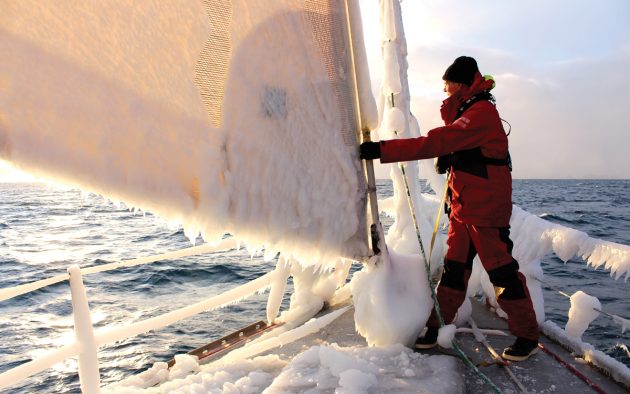
Heavy ice build-ups need regular removal to maintain boat stability
Specialist high latitude yachts invariably have metal hulls and are very solidly built with large fuel tanks and internal steering positions. But that doesn’t mean that a well-insulated, properly prepared, solid oceangoing yacht built of other materials can’t cruise some high latitude areas.
The key is that a yacht needs to be solid – solid hull, solid rig, solid systems and solid crew and, if of fibreglass construction, avoid high-risk areas. You’ll need to outfit and equip to commercial standards: a vast amount of yachting gear will not last in these conditions.
Any boat so lightly built that it deforms in a seaway should be avoided, so if your rigging goes slack or you find doors and drawers don’t fit when pounding to weather, forget it. Water will find its way in and make life below miserable, quite apart from the risk of a catastrophic ice or ground impact.
The hull and rig should be capable of taking a full speed grounding on solid rock and the stem strong enough to smash into that unseen berg. Glacial ice should be considered rock hard and even a small bergy bit could weigh tens of tons, probably more than your yacht. Unless you have absolute faith in your stem you should consider protecting it with a stainless or Kevlar sheath.

Anchored at Faraday, a British Antarctic Survey station in Antarctica
If nothing else, this will protect your gelcoat against abrasion if you do decide to get involved with the brash in front of a glacier. Three-bladed fixed propellers are much tougher in ice, but never engage reverse gear unless someone is watching astern for ice that might get sucked under the hull. Carry a spare propeller.
Preparing for high-latitude sailing
All systems must be in tip-top condition. That means a full service or overhaul of the engine and its associated systems. If your engine is at all reluctant to start, go back to first principles before you leave home.
Are the batteries in good condition and getting properly charged? What condition are the starter motor cables in? Do you have a spare starter motor on board? Is it easy to change fuel filters? Duplex fuel filters are a great idea here. Change your gearbox oil and carry spares and repair materials for everything. Make sure you know how to service and fix all the systems on your boat.

Deep stores, spares and shore gear are all essential
If there are items you consider too big or too expensive to carry, do some research before you leave homeport for suppliers that have stock and are used to dealing with international couriers. Make sure you have serial and part numbers and supplier details written down. Download manuals for everything.
Researching these details online once you get to remote locations may very well be impossible. Many a high-latitude expedition has wasted its time waiting in port for spares to arrive.
The polar high extends south in the northern hemisphere during the summer and long periods of calm are common. The same is true on the southern half of the Antarctic Peninsula. Consider the fuel range of your vessel and remember heating and generation demands as well.
Examine the distances between fuel stops along your proposed route and remember that remote northern communities may only have enough fuel for themselves.
Article continues below…

Sailing to Svalbard: Arctic archipelago yields up its stark beauty
“Congratulations, captain.” Dave McKay, one of our regular crew aboard Isbjörn, had those words for me as we dropped anchor…

Skip Novak’s Storm Sailing Techniques Part 1: the Pelagic Philosophy
Yachting World goes round Cape Horn. Watch how we made our 12-part series about storm sailing techniques with expedition guru…
The same is true of the south but there is no fuel available in Antarctica, South Georgia or any sub-Antarctic island. Look at where a fuel bladder could be securely placed as low down as possible in your vessel and revert to jerrycans on deck only as a last resort. Have a naval architect investigate how this added weight will affect your stability curve.
If you must have cans on deck they should be of the very strongest design and they’ll need a bombproof cradle system to hold them in place in the worst conditions. And are your stanchions strong enough?
Generating and managing water
Drinking water can be made from glacial ice but not sea ice, and clean, fresh water can be hard to find in the Canadian and American Arctic. If you have a watermaker, check with the manufacturer what its performance is like in 2°C water. It can be as little as 20% of that in 20°C water. If you think that will be an issue, plumb a heat exchanger into the raw water side of the system.
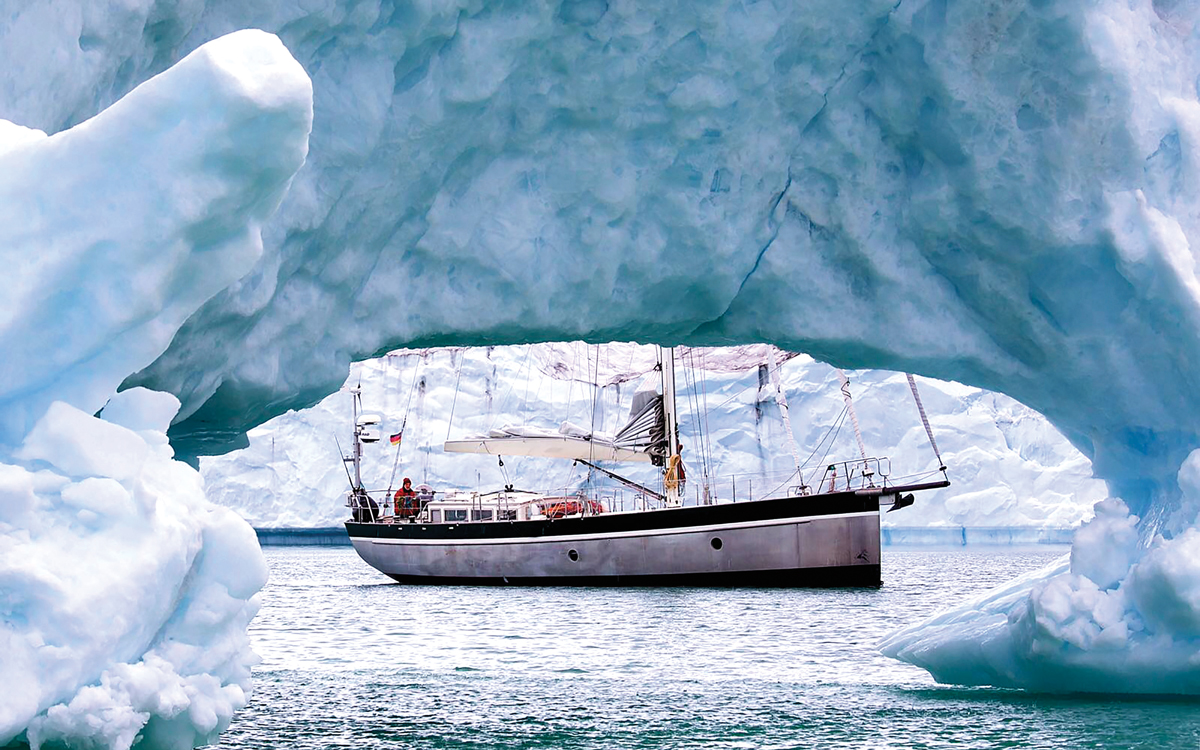
Morning Haze is an aluminium-hulled Bestevaer 55ST built specifically for high latitudes cruising. Photo: Benedict Gross
The art of safe, enjoyable high latitudes cruising is a comfortable life on board so you can keep a fully vigilant watch on deck. At the very least, a good dodger will be needed and excellent clothing. All-in-one insulated waterproof suits from the likes of Mustang and Fladen are easy to get into and solidly warm. Breathability is not as important as being 100% waterproof. Semi-permeable membranes don’t work well in cold, damp conditions.
Don’t bother with any form of ‘winter’ sailing or mountaineering glove; buy rubber fisherman’s gloves with removable liners and several pairs of cheap fleece gloves to go inside. Most of them will be on the drying rack most of the time!
Neoprene welly boots and hats that cover your ears should complete your outerwear, along with plenty of layers of fleece and/or wool underneath – avoid cotton. Every crewmember should have an immersion suit and practice getting into it in a hurry. Clear goggles such as those workmen use to protect their eyes will help you see into windy blizzard conditions without hurting your eyes.

Warm underlayers need to be kept dry with 100% waterproof outers
Below decks it’s all about heat and moisture management . Keep doors open to allow air to circulate and open all the hatches on those warm sunny days. Drip pot diesel heaters are reliable and don’t use any electricity and as they’re designed to run non-stop on small and medium fishing vessels most come with hotplates and even ovens for cooking too. Consider a rack over and around the heater for drying wet gear but make sure it’s impossible for anything to fall on the hotplate – which is the best place to keep the kettle hot.
If you can’t find a space for a drip pot heater you’ll probably have to revert to a diesel fired forced air heater, often called a night heater or bus heater. They use considerable electricity and can be unreliable and are tricky to fix so carrying a spare is a good idea. They’re also a bit noisy so think about where to install it and the routeing of the hot air ducts so you lose as little locker space as possible.
Lead a duct to the bathroom and, if sufficient ventilation can be arranged, you’ve got an instant drying room. They crew will be much easier to encourage on to deck if they have nice, warm, dry foulies to get into.
Hatches and portlights are likely to run with condensation and can be insulated with closed cell foam pads, temporary acrylic double glazing and even bubble wrap can help here. Take care that any added insulation is instantly removable from any hatch that may be needed in an emergency.

A biodiesel stove provides warmth, comfort and reliability below decks. Photo: KM Yachtbuilders
Home comforts
Your crew’s consumption of hot food and especially hot drinks is likely to go through the roof as it gets colder and you’ll therefore use more propane/butane for cooking.
Think about shipping twice the gas you’d usually need for a cruise of the duration you’re considering. Where will the bottles live? You may not be able to get your gas bottles filled in faraway locations but if you carry a universal adapter kit you can use local bottles if you can find them.
The crew may also develop a taste for roast meals and the oven will warm up the cabin but the attendant condensation will need to be dealt with. Amazingly, every 13kg bottle of gas burned in your galley produces 20lt of water as steam!
Fully closing the companionway for long periods will make the boat seem colder due to moisture. A hatch over the kitchen will help with this.
For communication, VHF will work well for local weather in the north and Iridium for email and GRIB files in both hemispheres and ice reports where they are available. If you have a reliable shore contact they can download and compress ice reports for you and send them by email.
The performance of these systems is usually down to antenna placement and condition. Check your coaxial connections for both antennas and consider replacing if there is any sign of water ingress or if the cable or the antennas are not first class.

Home comforts are important for crew morale. This was taken during a birthday dinner aboard Skip Novak’s 54ft Pelagic
Iridium has just launched a new constellation of satellites which they claim will give high-speed connections worldwide, but this has yet to be proven. If you’re installing new equipment, though, it might be worth waiting to see how that pans out and what costs are like.
HF radio tends not to be very reliable the closer you are to the magnetic poles and while Inmarsat based systems will work in most of the frequently cruised southern destinations it’s unreliable above 70°N.
Keeping a lookout
Modern radar systems are a godsend and much better at picking up smaller bergs than they used to be but are still no replacement for an attentive watchkeeper with a good view and instant access to the helm and throttle. Make sure all your crew are familiar with the tuning and filtering controls of your radar. It is amazing what a well-tuned radar will pick up and how huge a berg can be entirely missed by a badly tuned set, especially in a seaway.
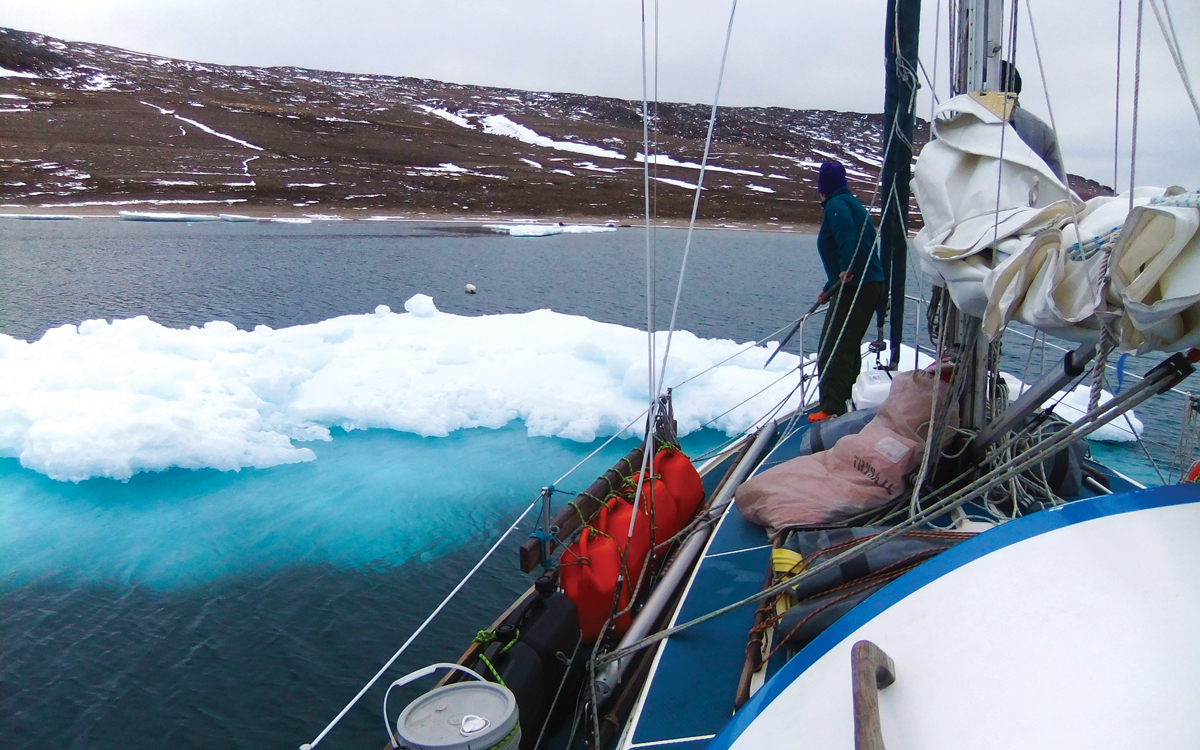
Ice floes threatening off the sub-Antarctic Macquarie Island
In thick fog in the Drake Passage on the way back from the Antarctic Peninsula, we came within 50m of a sheer-sided berg the size of an IKEA store. The radar simply did not see it. I suspect the radar signal was reflected straight off into the distance until we were adjacent to it. Luckily the mark one eyeball was paying attention!
Forward-looking sounders are good for scoping out uncharted territory but have yet to prove their worth for spotting bergs. They just don’t look forward enough yet – but the technology is improving all the time. A good idea for shallow uncharted areas is launching the tender and sending the crew in with a handheld depth sounder so they can get back by radio with soundings.
Get yourself a pair of ice ‘tuks’ – long poles with a metal spike at one end – for pushing ice away from the boat or, more accurately, pushing the boat away from ice in most cases. These can be wooden poles or, if you want to be fancy, a pair of two-part windsurfing masts.
You’ll need two or three nice big anchors, and all-chain rode. The modern concave designs with the roll bars really do outperform older designs and some stow almost flat.
Also useful for awkward anchorages are several very long polypropylene shorelines, some heavy-duty lifting strops to wrap around rocks onshore and a bunch of large shackles to join it all together. The best way to store, deploy and recover these lines is from rope drums on deck but if that’s a step too far for you they can be stored in climber’s rope bags, laundry baskets or even sacks.

If you have the space on deck, drum reels are an effective way to stow and deploy polypropylene shore lines
As previously discussed you’ll need spares and repair materials for all your systems but what about the crew? Feed them well – any idea of operating a calorie deficit to lose weight is a recipe (pun intended!) for disaster. Working in the cold is fatiguing. Look out for each other.
Carry a full medical kit. Annex 1 of MCA UK MSN 1768 Cat A will point you in the right direction for medical stores and equipment. The kit for men and women is slightly different. Do you need gear for both? Invest in training for at least two crewmembers and subscribe to a doctor on call service from a provider like Medical Services Offshore, which can also provide equipment, drugs and training.
High latitudes sailing is very fashionable right now but to head north or south in a lightly built, ill-prepared vessel is to risk your boat, your crew and anyone who tries to help you. Take the time to review, plan, budget, organise and execute solid modifications to your boat and her equipment and you can safely enjoy the wonders of the polar regions.
About the author
Magnus Day has been working and travelling on boats from 40-185ft in the Arctic and Antarctic every year since 2005. He is best known for his long-term involvement with Skip Novak’s Pelagic Expeditions and now runs High Latitudes , a consulting company to yacht owners and their captains on vessel choice, modification and refit, permitting, crewing and logistics for both polar regions.
He also acts as ice pilot to sailing superyachts through EYOS and owns expedition yacht Baltazar , which is available for interesting projects worldwide.
Yachting Monthly
- Digital edition

Busting the hull speed myth
- julianwolfram
- December 13, 2021
Waterline length is not the defining factor in maximum boat speed that we all think it is. Julian Wolfram busts the hull speed myth

Modern hull forms, like this Jeanneau SO440, use chines to create volume forward while keeping a narrow entrance at the waterline
Every sailor is delighted when the breeze picks up and the boat really starts to get going with a bone in her teeth.

Julian Wolfram is a physicist, naval architect, former professor of ocean engineering at Heriot-Watt in Edinburgh and a Yachtmaster Offshore who has cruised and raced for 45 years
The crew will want to know how fast she will go and perhaps surreptitiously race her against any similar sized boat in the vicinity.
Speculation may start about what allows one boat to go faster than another – is it the hull shape or the sails?
It is easy to spot good, well-trimmed sails but what about the hull ?
The important part is not visible below the water surface. However there is one key indicator that is often very apparent – the waves generated by the sailing yacht.
When a yacht picks up speed the wave pattern around it grows and the greater the speed the bigger the waves .
The energy in these waves is proportional to the square of their height – double the height and the energy goes up by a factor of four.
This energy comes from the wind , via the sails and rig , making the hull push water out of the way.
If less of this wind energy was wasted in producing waves the yacht would go faster.
When a typical displacement monohull reaches a speed-to-length ratio of around 1.1 to 1.2 (speed in knots divided by the square root of the waterline in feet) up to half the wind energy driving it is usually wasted in generating waves.
The hull speed myth: Half angle of entrance
So how can we tell if a yacht will sail efficiently, or have high wave resistance and waste a lot of energy generating waves?
The answer starts back in the 19th century with the Australian J H Michell.
In 1898 he wrote one of the most important papers in the history of naval architecture in which he developed a formula for calculating wave resistance of ships.

Light displacement cruising boat: The bow of this Feeling 44 is finer than older cruising boats
This showed that wave resistance depended critically on the angle of the waterlines to the centreline of the ship – the half angle of entrance.
The smaller the angle the smaller the height of the waves generated and the lower the wave-making drag.
A knife blade can slice through water with minimal disturbance – drag the knife’s handle through and you generate waves.
The big hull speed myth
For a displacement hull the so-called ‘hull speed’ occurs when the waves it generates are the same length as the hull.
This occurs when the speed-length ratio is 1.34.
It is claimed that hulls cannot go significantly faster than this without planing. It is called ‘the displacement trap’ but is a myth.

Heavy displacement cruising boat: An older design has a bow that is several degrees wider
As an example, consider a 25ft (7.6m) boat that goes at 10 knots in flat water.
This is a speed-length ratio of two. That is the average speed over 2,000m for a single sculls rower in a world record time.
The reason for this high speed is a half angle of entrance of less than 5º. Hobie Cats, Darts and many other catamarans have similarly low angles of entrance and reach even higher speed-length ratios with their V-shaped displacement hulls.
These hulls also have almost equally fine sterns, which is also critically important to their low wave resistance.
The monohull problem
Now a monohull sailing yacht needs reasonable beam to achieve stability and, unless waterline length is particularly long, the half angle of entrance will inevitably be much larger than those on rowing skulls and multihulls .
In his 1966 Sailing Yacht Design Douglas Phillips-Birt suggests values of 15º to 30º for cruising yachts.
Many older cruising yachts with long overhangs and short waterline lengths, for their overall length, have values around the top of this range.

Busting the hull speed myth: A Thames barge is a similar length and beam to a J-Class, but its bluff bow, built for volume, makes it much slower. Credit: Alamy Stock Photo
Newer sailing yachts, with plumb bows, have somewhat smaller half angles and a modern 12m-long fast cruiser may have a value around 20º and a racing yacht 17º or 18º.
Size matters here as, to achieve stability, a little yacht is likely to have a bigger half angle than a large one, such as the German Frers-designed 42m (138ft), Rebecca which has a half angle of entrance of under 13º.
Rebecca also has a fine, elegant stern which helps minimise the stern wave – I’ll come back to sterns and stern waves.
Interestingly the half angle of entrance is not mentioned in the otherwise excellent 2014 Principles of Yacht Design by Larsson et al, although it is currently used as one of the parameters in the preliminary estimation of wave resistance for ships.
While it is still particularly applicable to very slender hulls, naval architects are not generally familiar with Michell’s work.
His formula for wave resistance involves quadruple integrals of complex functions.

German-Frers’ designed Rebecca has a half angle of entrance of just 18°. Credit: Cory Silken
These are not ‘meat and drink’ for your average naval architect, and only a few mathematically inclined academics have much interest in theoretical wave resistance.
Michell’s work is rarely, if ever, covered in naval architecture courses now.
Nowadays the emphasis is much more on numerical methods, high-speed computers and computational fluid mechanics (CFD) using the so called Navier-Stokes equations.
Examining these equations, which apply to any fluid situation, does not give any insights into wave resistance, albeit they can model wave resistance very well when used in the piecewise manner of CFD.
It is very easy to measure the half angle of entrance at the design waterline when a yacht is out of the water.
Take a photograph directly upwards from the ground under the centreline at the bow.

Busting the hull speed myth: Multihulls achieve high speeds due to fine hulls, light displacement and ample stability. Credit: Joe McCarthy/Yachting Monthly
Now blow this up on a computer screen, or print it off at a large scale, and measure the angle with a protractor.
Alternatively, if you have a properly scaled accommodation plan drawn for a level close to the design waterline this will yield a reasonable approximation of the half angle of entrance.
Unfortunately there is not a simple relationship between the fineness of the bow and the wave drag.
But, all other things being equal, the smaller the half angle the better.
It is easy to measure and is a useful parameter to know when comparing yachts.
Stern shape and hull speed
The half angle of entrance cannot be taken alone as a measure of wave drag, and the fairness of the hull and in particular the run aft is also critical.
Just as the half angle of entrance dictates the height of the bow wave, so the fineness of the stern is a key influence on the height of the stern wave.
Consider the water flowing around both sides of the hull and meeting at the stern.

Modern race boats, like Pip Hare ‘s IMOCA 60, combine a fine angle of entrance with wide, flat hulls for maximum form stability and planing ability. Credit: Richard Langdon
If these streams meet at a large angle the water will pile up into a high stern wave.
On the other hand if they meet at a shallow angle there will be less piling up. A fine stern can maintain a streamline flow of water.
However if the sides of the hull meet at the stern at a large angle then the streamline flow will tend to separate from the hull, leaving a wide wake full of drag-inducing eddies.
Continues below…

How hull shape affects comfort at sea
Understanding how your hull shape responds to waves will keep you and your crew safe and comfortable in a blow,…

Boat handling: How to use your yacht’s hull shape to your advantage
Whether you have a long keel or twin keel rudders, there will be pros and cons when it comes to…

Sailing in waves: top tips to keep you safe at speed
Sailing in waves can make for a jarring, juddering experience and long, uncomfortable passages and at worst, a dangerous, boat-rolling…

How to cope with gusts and squalls
Spikes in wind strength can range from a blustery sail to survival conditions. Dag Pike explains how to predict which…
In many modern designs the hull sides are not far off parallel at the stern and it is then the upward slope of the buttock lines that are critical and, again, the shallower the slope the better from a hull drag perspective.
The slope of the buttocks can easily be measured if the lines plan is available and a good indication can be obtained from a profile drawing or a photo taken beam on with the boat out of the water.
Drawing a chalk line parallel to the centreline and half a metre out from it will provide a buttock line that can be checked visually for fairness when the boat is viewed from abeam.

A rowing scull easily exceeds its theoretical max hull speed. Credit: Alamy Stock Photo
Again, the smaller the angle the better – provided the transom is clear of the water.
An angle of more than 17º will lead to separated flow and eddy making. This also happens if the transom is immersed.
The greater the immersion the greater the drag, so weight in stern lockers on modern boats can be critical.
Modern hull design
The modern wedge shape attempts to resolve the conflicting demands of a small angle of entrance, good stability and a fine stern.
The plumb bow extends the waterline forward and, with the maximum beam taken well aft, the hull forward can be relatively narrow, providing a low half angle of entrance.
The stern is wide, which helps achieve good stability, but at the same time the buttocks rise slowly at a shallow angle to the water surface.
This gives a smooth and gradual change in the hull’s cross section area ensuring the water flow remains attached to the hull and that the stern wave is kept low.

A modern cruising boat gains stability from a wide stern, but needs twin rudders
This wide, flat stern also helps surfing down waves and possibly planing.
Some designs have chines just above the design waterline which increases usable internal volume and gives a little more form stability when heeled.
However, as soon as the chine is immersed there will be separation along the chine edge as water will not flow smoothly around a sharp edge.
It is just not possible to get the chine perfectly aligned with the streamlines of the water flow in all sailing conditions and there will be some extra drag at times.
There are two downsides to the wedge- shaped hull.

Overloading aft will create a large increase in drag
First the boat has to be sailed at a small angle of heel to keep the rudder properly immersed and to avoid broaching. This can be offset to some extent by using twin rudders .
The second is that the weight must be kept relatively low.
This is because a relatively small increase in weight causes a big increase in wetted surface area at the stern and hence in the frictional drag which makes the boat slower, particularly in light airs.
This is the downside of slowing rising buttocks and the reason why dinghy sailors get their weight forward in a light breeze .
Displacement Length Ratios
Traditionally for sailing yachts the displacement-length ratio has been used as a measure of speed potential, partly because it is easy to calculate from the yacht particulars.
It is waterline length (in metres) divided by the cube root of displacement (in cubic metres or tonnes).
A heavy boat, such as the Heard 35, will have a value of about 4 to 4.8.
A more moderate displacement boat, such as the Hallberg Rassy 342 or Dufour 32 Classic, will have a value in the range 5 to about 5.5; whilst a racing boat may a value of up to, and even over, 7.

A heavy displacement cruising boat with a fair run aft is less affected by additional weight
However the displacement length ratio can be misleading as making a hull 20% deeper and 20% narrower will keep the displacement the same but will significantly reduce the half angle of entrance and the wave drag.
It is interesting to note a Thames barge in racing trim has the same length-displacement ratio as a J class yacht, but their speed potential is vastly different.
Finally I should mention the older ‘length-displacement’ ratio, which is quoted in imperial units.
This is calculated by dividing a boat’s displacement in tons (2,240 pounds) by one one-hundredth of the waterline length (in feet) cubed.

Credit: Maxine Heath
It is still used in the USA and should be treated with caution.
The myth that your boat’s speed is only restricted by it waterline length does a disservice to its designers, and does little to help you understand how to get the best from her when the wind picks up.
Have a look at how the boat is loaded, how you sail on the wind, your boat handling and how much canvas you ask her to carry and you may discover more speed than you expect.
The remarkable John Henry Mitchell

Pioneer of wave theory
It’s worth saying a little more about the remarkable John Henry Michell.
He produced a series of ground-breaking papers including one that proved a wave would break when its height reached a seventh of its length.
He was the son of Devon miner who had emigrated to the gold mining area near Melbourne.
He showed such promise that he got a scholarship to Cambridge.
He was later elected a fellow of the Royal Society at the age of 35 – not bad for the son of a Devonshire miner.
His brother George was no slouch either – he invented and patented the thrust bearing that is named after him.
The half angle of entrance became the traditional factor for assessing the fineness of hulls.
It is defined as the angle the designed waterline makes with the centreline at the bow.It varies from less than 5º for very fine hull forms up to 60º or more for a full-form barge.
At higher speeds, modest increases in the half angle can give rise to substantial increases in wave resistance.
Enjoyed reading Busting the hull speed myth?
A subscription to Yachting Monthly magazine costs around 40% less than the cover price .
Print and digital editions are available through Magazines Direct – where you can also find the latest deals .
YM is packed with information to help you get the most from your time on the water.
- Take your seamanship to the next level with tips, advice and skills from our experts
- Impartial in-depth reviews of the latest yachts and equipment
- Cruising guides to help you reach those dream destinations
Follow us on Facebook , Twitter and Instagram.

27. April 2022, updated 6. August 2022 | 0 Comments
Circumnavigation , Hull Material , Sailboat , Sailing Cruiser , Technical Advice
Sailing Cruisers: The Ultimate Comparison of Hull Materials
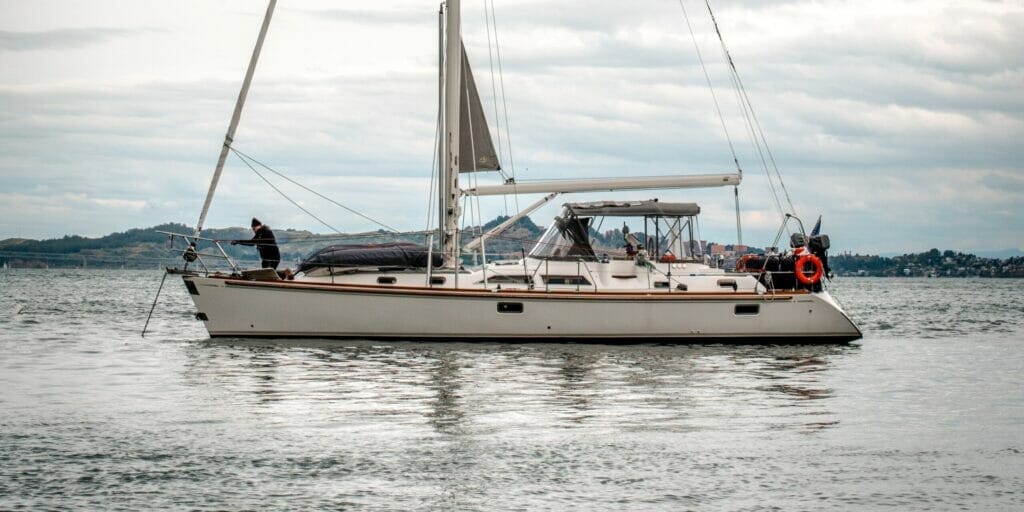
Perhaps you have already read our article about the best reasons to live on a boat and we managed to convince you? And now you are looking for a proper cruiser sailboat to turn your dream of living as a liveaboard into reality? Sooner or later, you will definitely ask yourself which hull material is most suitable for a cruiser and this is exactly the question we want to discuss in the following.
Table of Contents
What Materials Are Considered?
The materials used for hull construction of sailboats are GRP (glass fiber reinforced plastic), carbon, Kevlar, wood, aluminum, steel, ferrocement and also various hybrids of these. Some of these materials are not suitable for use in cruisers due to their specific characteristics. Carbon and Kevlar usually only play a role in extremely lightweight high-performance boats typically found in racing, not to mention that they are astronomically expensive.
Wood disqualifies itself due to the extremely costly maintenance and thus it is not practical for use in cruisers. Ferrocement never really caught on as a hull material and primarily played a role as an easy-to-handle material in DIY sailboat construction. This leaves GRP, aluminum, and steel as materials that come into question for us.
GRP vs. Aluminum vs. Steel
In the following, we will take a closer look at these three materials and compare them with each other under various aspects that are important for a cruiser.
GRP is the weakest of the three materials, especially when it comes to impact and abrasion resistance. However, the strength of GRP is highly dependent on its processing quality, as GRP can be laminated in very different ways, which can make for large differences in stability. For example, the first GRP boats built in the 1960s and 1970s often featured much thicker material thicknesses because people were not yet familiar with the material and this resulted in nearly indestructible hulls. There are also some manufacturers who additionally reinforce their GRP hulls with Kevlar or metal inserts. So, there are a lot of differences in terms of stability, but in general a GRP hull is clearly inferior to metal hulls in terms of stability.
In the video below you can see a few crash tests of a Dehler 31, which is made of GRP and takes the collisions impressively well.
Aluminum and steel hulls, on the other hand, have extremely high impact and abrasion resistance, with steel being even slightly superior to aluminum here, as steel is more elastic and has a higher tensile strength. Thus, a metal boat is much more robust and therefore safer than a GRP boat, especially in collisions.
GRP is far superior to steel in terms of weight. For boats up to about 40 feet, it is also superior to aluminum, since aluminum has a minimum thickness of about 5mm making smaller boats heavier than their GRP competitors. Above the 40-foot mark, the tide can turn, and aluminum may be lighter than GRP, but it depends on the exact construction.
Aluminum as a material itself weighs only about a third as much as steel, but the typical weight saving of a hull is typically 20-25% (but up to 50% savings are possible in some cases). This can be attributed to the fact that aluminum requires thicker material thicknesses than steel.
As should already be clear, steel boats are by far the heaviest of the materials we are considering here.
Sailing Characteristics
The sailing characteristics are of course not primarily dependent on the hull material, but rather on other characteristics such as the hull shape, the rig, etc. Nevertheless, certain characteristics are attributable to the hull material.
View this post on Instagram A post shared by Oyster Yachts (@oysteryachts)
GRP boats sail very fast because of their low weight, but the residual flexibility that is unavoidable in the material can cause annoying creaking noises inside the boat.
Aluminum boats, on the other hand, also sail very fast, but much more stiffly and you are not plagued by creaking noises.
Steel also makes for stiff sailing and there are no creaking noises, but due to the enormous weight, a steel boat sails rather sluggishly. However, the high weight also gives steel boats good-natured sailing behavior, which is more likely to forgive too much sail area.
View this post on Instagram A post shared by WELTREISE | ABENTEUER | MEER (@bluehorizon_exploration)
Interior Space
Unlike metal hulls, a GRP hull does not need an internal reinforcement structure that reduces the space inside the boat. Thus, GRP boats offer a lot of interior space relative to their dimensions.
The stability of aluminum hulls, on the other hand, depends on an internal reinforcement structure (consisting of frames and stringers), which takes up some of the valuable space inside the boat. Especially for smaller boats this can be more important than you might think. In the image below you can see the construction of an aluminum hull built by Dutch shipyard KM Yachtbuilders.
View this post on Instagram A post shared by KM Yachtbuilders (@kmyachtbuilders)
Steel boats also need such a reinforcement structure, but it is much more compact than that of aluminum boats, thus offering more interior space.
Insulation Properties
Due to its sandwich construction, GRP is inherently a poor conductor of thermal energy and therefore requires little insulation and, under certain conditions, none at all. Along with the good insulating properties, GRP boats also have less condensation to contend with than their metal competitors. In addition, it also has good sound insulation.
View this post on Instagram A post shared by Hallberg-Rassy (@hallbergrassy)
Aluminum and steel boats have very similar properties in terms of insulation. Both materials are very good thermal conductors, which makes good insulation essential. Due to the cold bridges found in metal boats, a lot of condensation occurs inside the boat. The sound insulation of metal hulls is also poor.
Visual Design Options
GRP hulls offer a lot of room for styling, since gelcoats are available in all possible colors and applying them is easy. Another big advantage of GRP is that round shapes can be realized very easily with this material, which makes ergonomics and design very appealing.
View this post on Instagram A post shared by beneteau_official (@beneteau_official)
In contrast to GRP boats, round shapes in metal boats can only be achieved with significantly more cost as this requires a lot of effort and special skill in welding. The many welds on metal boats can in some cases look rather rustic, which may bother some people.
Aluminum hulls usually leave the shipyard unpainted, as painting them is very time-consuming and expensive and therefore rather unusual. The raw aluminum look does not appeal to everyone.

Steel boats can be painted as desired, but they almost always have minor visual rust spots somewhere, which are hardly avoidable.
Safety During Thunderstorms
Unlike metal boats, a GRP boat offers no protection to the boat, equipment, and crew against lightning strikes, and you are dependent on a proper lightning conductor system.
In contrast, boats made of aluminum and steel provide excellent protection against lightning strikes purely due to their construction, because they act as a Faraday cage – the inside of the electric field created by a lightning strike is reliably shielded.
View this post on Instagram A post shared by Energy Observer (@energyobserver)
Risk of Material Decomposition
A known risk of material degradation of GRP is osmosis, which occurs when the hull is not properly protected, and moisture can penetrate through the gelcoat where the moisture collects in the hull cavities. The resin in the laminate is decomposed by the penetrated moisture and an acid is produced. Due to its chemical properties, it draws further moisture into the cavities. The pressure in these then increases and pushes the gelcoat outward forming blisters. The brittle gelcoat cracks open and the laminate is progressively decomposed as osmosis continues.
View this post on Instagram A post shared by @sailinghuakai
However, we want to emphasize that osmosis is often overdramatized, and we are not yet aware of any case where a boat has actually sunk because of osmosis. Nevertheless, you should not underestimate this danger and prevent it from happening in the first place through proper care. Unfortunately, structural defects in the hull of used boats caused by osmosis are difficult to see as a non-expert.
In the case of aluminum, there is a risk of galvanic corrosion, in which the base metal aluminum decomposes under the influence of electric current when it comes into contact with a more noble metal. Although such galvanic corrosion can cause considerable damage to the boat within a very short time, this risk can be virtually eliminated if the boat is professionally constructed and regularly maintained. However, this means that any electrical leakage currents must be eliminated, and the many sacrificial anodes must be maintained. Besides, when it comes to electrical installations, you need to know what you’re doing.
View this post on Instagram A post shared by Gate Service Barcelona (@gateservicebarcelona)
Steel is generally known to be very susceptible to corrosion. Once steel comes into contact with oxygen in the presence of water, rust forms as a result of oxidation. As owner of a steel boat, there is not much you can do against the constant danger of corrosion, except to always make sure that the steel is protected from external elements, which requires a lot of maintenance. In addition, it should be emphasized that the greatest danger of corrosion is the rusting through of the hull from the inside to the outside and not the other way around. Often it is difficult to see all the areas inside the hull and this harbors some undetected dangers.
View this post on Instagram A post shared by Fundacja Klasyczne Jachty (@klasycznejachty)
Repairability
Even fairly extensive damages in the GRP can be repaired quickly and easily because all you need are fiberglass mats, resin, and hardener. Minor blemishes in the gelcoat such as scratches or small chipping can be repaired with ease.
View this post on Instagram A post shared by Manta Marine Services Goa (@manta_marine_services_goa)
Repairing aluminum, on the other hand, is much more difficult, because you first need aluminum plates with the right alloy, and then you also need the right welding equipment. In addition, not everyone has the necessary know-how to weld aluminum properly. Minor blemishes such as scratches can be polished, and dents can be attempted to bulge from the inside. However, if you can’t get to the dent from the inside, you’ll have to live with it willy-nilly.
Steel must be welded as well, but suitable steel plates can be found in most workshops around the world and welding is also much easier than welding aluminum. In addition, the required welding equipment is cheaper and more widely available. The repair of scratches can be easily done yourself, but this is often much more time-consuming than repairing the gelcoat on GRP boats. Dents can be attempted to be removed in the same way as with aluminum boats.
View this post on Instagram A post shared by Dimos Ganiatsas (@dimosgan)
Maintenance Effort
The maintenance effort is kept within limits with GRP. You should just sand, fill and seal the underwater hull regularly. The great thing about GRP is that such maintenance can be postponed once in a while without having to fear immediately serious consequences (but don’t let it become a habit!).
View this post on Instagram A post shared by SailingJoa (@sailingjoa)
Aluminum boats also require little maintenance, as you only need to regularly renew the antifouling coating and maintain the numerous sacrificial anodes, as well as ensure that there is no potential for galvanic corrosion. However, unlike GRP, the maintenance of aluminum boats allows significantly less time leeway, because if galvanic corrosion does occur, it can cause significant damage in a very short period of time.
Steel boats, unlike GRP and aluminum, require constant maintenance, as there are virtually always some rust spots that should be treated early to prevent worse. At regular intervals, the entire hull should also be sand stripped followed by priming with an epoxy system and then sealing with a paint (polyurethane based). Although a steel hull does not rust as quickly as aluminum does with galvanic corrosion, you should avoid postponing maintenance for anything, otherwise nasty surprises can await you.
The cost of GRP boats, from serial and semi-custom production is the lowest compared to those for metal boats. This is mainly due to the fact that a mold only needs to be designed once, which can then be used for all builds of the model. Custom builds, on the other hand, cost significantly more because a mold must be made individually, which involves high costs.
Metal boats are more expensive in serial production as they require a lot of manual welding, with aluminum being even more expensive than steel due to the more complex processing and higher material prices. However, metal boats can be more attractive than GRP for custom builds, but it depends on the individual project.
In addition, it can be said that aluminum boats have a very good value retention compared to GRP and steel boats, which is also reflected in the second-hand market. On the second-hand market, aluminum boats are usually traded at very high prices, whereas GRP boats depreciate significantly and there is a large supply at low prices. The supply of steel boats is rather limited, but the prices for them are nevertheless rather low.
Besides these initial costs, you should also always consider the follow-up costs, because these can make a lot of difference in the long run, especially when you look at the differences in maintenance requirements. Consider how much time and money you will have to put into the boat and even if you want to do most of it yourself, keep your individual opportunity costs in mind.
A Summarizing Overview
In the table below, we have briefly summarized the various characteristics of the respective materials.
An Important Note
Finally, we want to note that there is no such thing as the perfect hull material, because as we have pointed out, each has its strengths and weaknesses. Keep in mind that the properties of the various materials we have discussed are the general ones that apply to most boats. However, the properties of a hull also depend on the specific boat because construction and quality of workmanship are at least as important as the material itself. When comparing different hull materials, you should always keep these differences in terms of construction and workmanship in mind and not compare apples with oranges. It would not make sense to compare a production GRP boat produced under cost pressure with a custom aluminum boat and then conclude that the GRP boat is inferior to the aluminum boat.

Our Recommendation
In general, we claim that for the majority of people a GRP boat makes the most sense. It is very user-friendly in both use and maintenance and is also relatively affordable. We see no reasons against the use in bluewater or for a circumnavigation, although this scene is strongly influenced by advocates of metal boats. We can certainly understand the aspect of increased safety of metal boats, especially in collisions, but we doubt that this justifies the disadvantages of steel or the additional costs of aluminum. Severe collisions are of course a high risk, but always keep in mind how low the probability of such a collision actually is. Nevertheless, we can understand that the increased sense of safety is a very high priority for some.
When using the boat under extreme conditions, such as in Antarctica or Patagonia, we would also want to use a metal boat due to its increased robustness. So, it’s best to ask yourself honestly which areas you actually want to sail.
View this post on Instagram A post shared by Live To Sail (@live_to_sail)
In addition, you should also let your own skills and experiences that you have made with the respective material flow into the decision-making process. For example, if you have had a lot of professional experience with steel processing, then you will see the work involved in a steel boat from a completely different perspective… In this sense, listen a little to your gut feeling.
And last but not least, as already mentioned above, it always depends on the specific boat and especially if you are on the second-hand market, you can certainly be a little more flexible with regard to the choice of material and look at the overall package. But we hope that we could help you understand what to expect from the different materials and assist you in making your decision.
If you have any other questions, need advice on your upcoming boat purchase, or want to give us feedback, feel free to post it in the comments, we’ll try to answer everyone!
Happy sailing!
Leave the first comment (Cancel Reply)
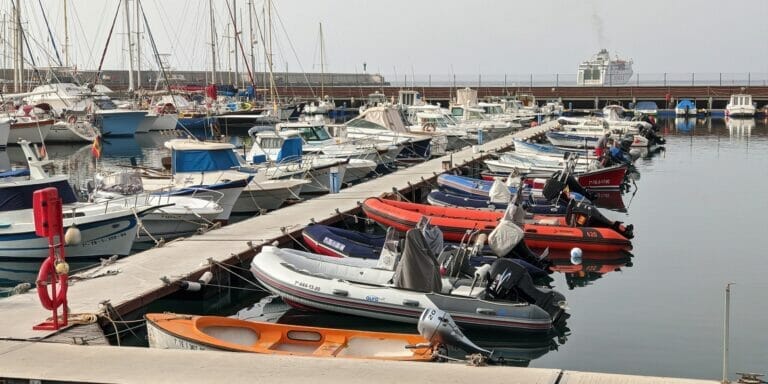
Soft Inflatable Boat (SIB) vs. Rigid Inflatable Boat (RIB)
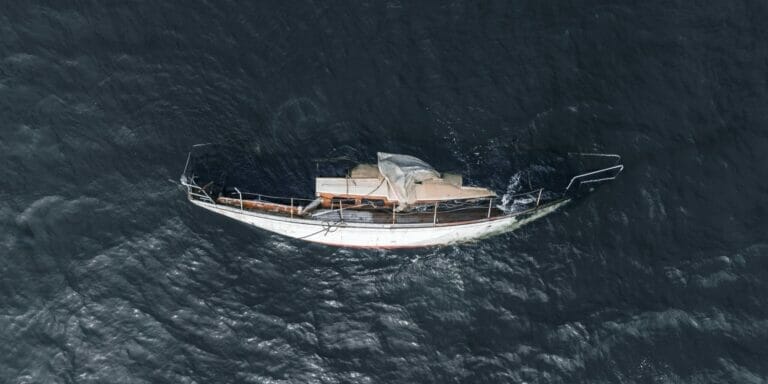
End-Of-Life Boats, an Urgent Issue That We Must Solve
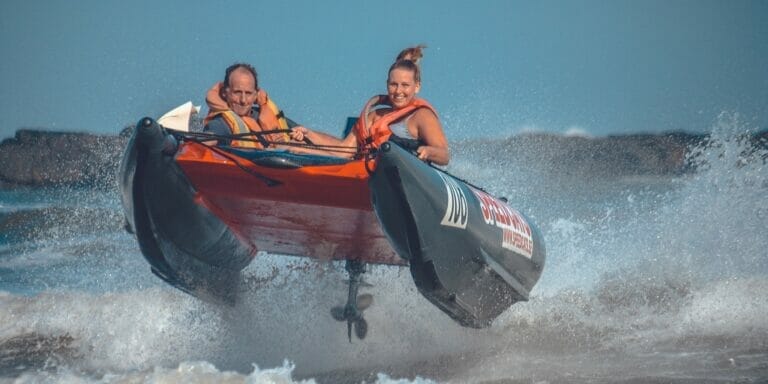
Thundercat: The Most Fun For Your Money
- AROUND THE SAILING WORLD
- BOAT OF THE YEAR
- Email Newsletters
- Best Marine Electronics & Technology
- America’s Cup
- St. Petersburg
- Caribbean Championship
- Boating Safety

Hulls of the Modern America’s Cup
- By Mark Chisnell
- Updated: January 8, 2021
Hull design has always been the most venerated aspect of an America’s Cup yacht. The name on the drawings has often been remembered with the same reverence as that of the skipper. This might not hold for much longer because the result of the 36th America’s Cup is just as likely to be determined by the work of a systems engineer as by a naval architect.
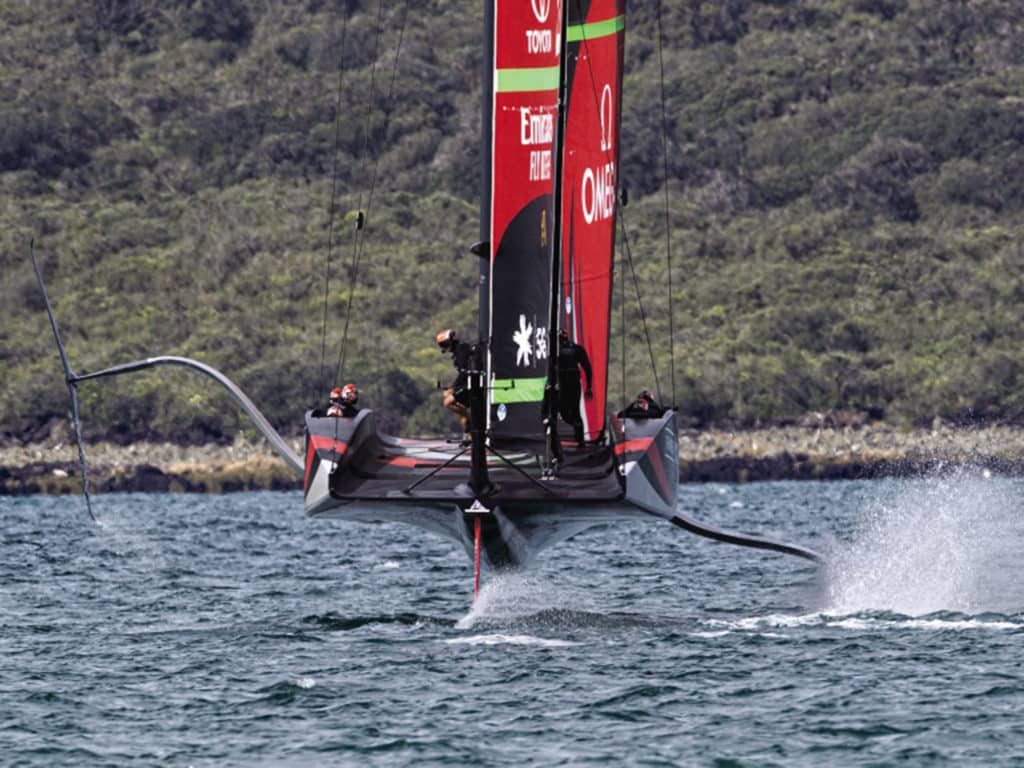
“The hull design is one aspect of many, but it’s not the dominant aspect,” explains Martin Fischer, co-design coordinator (along with Horacio Carabelli) for the Luna Rossa Prada Pirelli Team, who is on his second America’s Cup with the Italian team. “It’s not as it was with the 12 Metre or with version five (of the International America’s Cup Class), where the hull is really almost everything.”
The rules controlling a class are always a good place to start when seeking to understand a race boat because they drive so much of the design; working for the Challenger of Record, Fischer was part of the team that wrote the class rule for the AC75 with the defenders, Emirates Team New Zealand.
In the case of the AC75, the rules, Fischer says, are actually very open. They have little to say on the structure, for instance, requiring only a “minimum areal density of any part of the hull shell” (2 kg/m²). There’s also a limit on the internal volume (at least 70 m³), and after that, much of what’s left deals with details such as water retention, fairing flaps and penetrations.
There are only a few rules that drive the hull shape and its potential performance. “There is the length,” Fischer says. “The overall length is limited to 20.6 meters (minimum, without the bowsprit), while the beam must be 5 meters. Then there are two other very important rules: There is a theoretical capsize test that is done virtually on the computer. If the boat is turned by 90 degrees, the center of buoyancy must be at a certain position.
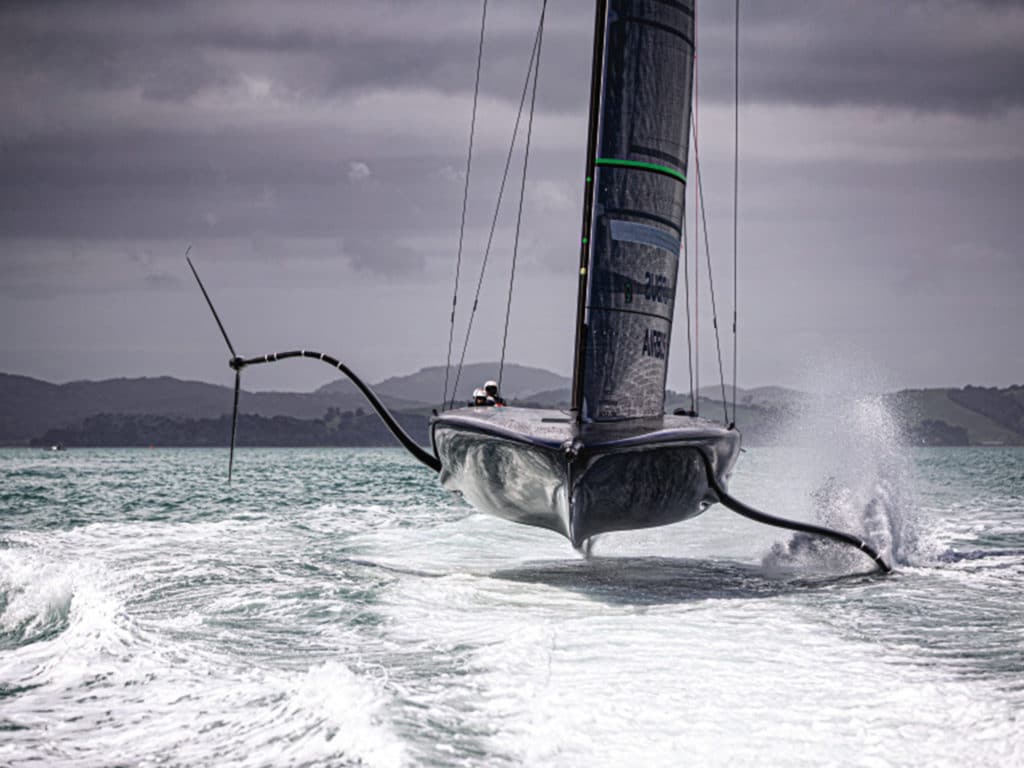
“This rule has a strong influence on the deck shapes. You might have noticed that all the boats have relatively high freeboard; this is partly for aerodynamics, but also, if you don’t have relatively high freeboard, you don’t pass this capsize test. The next important rule is that there is a minimum requirement for the waterplane inertia.”
Er…the water what?
“If the hull is floating, then you look at the intersection of the hull with the water surface (waterplane), and that gives the surface a certain shape. And then compute the inertia of that shape (it must be at least 20 m4). It’s not important to understand exactly what it is; in the end, it is more or less a measure or a constraint on the combination of that surface and its width.”
I’m not going to try to explain the calculation of the “second moment of area”—the important thing, according to Fischer, is that you “basically cannot make an extremely narrow hull, so you have to respect a certain area for that surface, and a certain width. The rule on the inertia is also quite type-forming; it imposes widths at the waterline. Of course, we all would like [the hull] to go narrow. Especially when the boat starts going fast, just before takeoff, we all want a narrow hull. And this is why we have these humps underneath the hull.”
Ah yes, the humps, skegs or bustles are one of the most significant shared features on all four of the newly launched, second-generation AC75s. The terms refer to the narrow, protruding section that runs down the centerline underwater. In the first-generation boats, only the Kiwi and Italian boats had this feature, and it was most pronounced on the latter.
“It’s a trick not to get around this inertia rule but to deal with it,” Fischer explains. “What you do is design a hull wide enough to pass this inertia rule while it is at the design flotation. And then as soon as it gets a bit of speed, the foil starts pushing up, and so the boat comes up, and then this wide part of the hull gets out of the water and only the narrow part remains. This significantly reduces the drag, especially during the takeoff phase.”
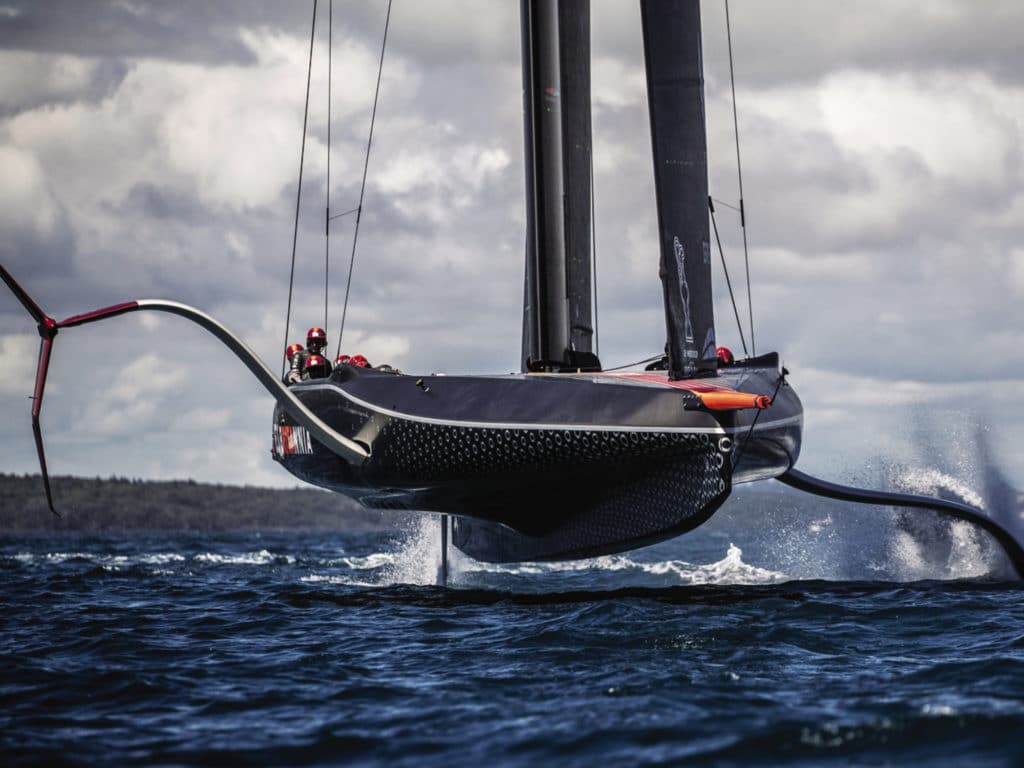
The humps also help when the boat touches down. “And that’s another reason for these humps underneath, because they allow you to fly lower, to take more risk, because if you touch a wave, the wetted surface, or the area that touches the wave, is very small, and therefore it slows you down only very little.”
Benjamin Muyl is on his second Cup with Ben Ainslie’s British challenger, having been involved in the event since 2005. Now the architect, he sums up the factors driving the performance of the AC75: “As soon as we decided that these boats are only going to race in flying (foiling) conditions, then there’s no point in having any righting moment from the hull. The whole righting moment comes from the foil, so then the hull shape is all about takeoff capabilities, so effectively [acceleration and performance at] slowish speed, in the order of 16 to 20 knots—the touchdowns. So, the ability of the hull to develop little drag when touching the water at speed or out of tacks, or out of jibe. And the other part of it, which is actually very important for these boats, is the aerial performance of the hull.”
This is the reason all four boats have skegs; they provide a benefit in all three areas that Muyl and Fischer describe. They enable better acceleration at slower speeds, and reduce the hydrodynamic drag and deceleration on touchdowns. This allows the boat to fly closer to the water, which has another important aerodynamic contribution. “On every wing, you have a high-pressure side and a low-pressure side,” Fischer explains. “And obviously, the air tries to flow from the high-pressure side to the low-pressure side, and if you let it do that, you lose lift. On a normal sailboat, this circulation that makes you lose lift is at the bottom, underneath the boom, and this loss is quite significant. To avoid that, on all the [AC75] boats, we see deck sweeper sails.”
Muyl worked with both Fischer and ETNZ’s Guillaume Verdier on Franck Cammas’ Groupama 5 , the International C-Class Catamaran Championship winner. It should be no surprise, therefore, that their thinking is aligned here. “In recent years, we’ve seen sails and wings extend to seal to the deck. It pretty much started with the Groupama C-Class boat for Cammas. And then that was also seen on the AC72, and since then all the Cup boats have the mainsail sealing on the deck. On these boats (the AC75), for the first time we have a monohull that’s flying. So, what’s happening is that now there is a gap again, so we pushed to effectively seal the hull to the water.”
It’s impossible to completely seal the hull to the water without increasing the hydrodynamic drag, and even maintaining the minimum distance is made harder by waves. “So, even if you had perfect control of the boat, it would be impossible to close that gap completely. But [the teams] make big efforts to close that gap as much as possible,” Fischer says.
“We spotted [the performance effect of sealing the gap] early in the project,” Muyl adds, “and always questioned whether it was a true phenomenon, or whether it was an artifact of the computation. We finally made the call to go there to try to achieve it. It’s interesting to see that all the boats have gone there now. So, yes, we followed the same path. It was done with different means between the various teams, but we went for this very squared bustle to try to create a vortex off the sharp edge that would effectively seal [the gap].”
When we look at the four new boats, it’s clear there is significant agreement on what makes for a fast AC75. The skegs are the most obvious element, but an aerodynamic hull shape is a close second. The speed of the boats drives this one, with apparent winds that can easily exceed 40 mph.
“If you stick your hand out of a car when you’re driving at that speed, you feel how big this drag is,” Fischer says. “This drag component is comparable to the drag we see in the water. All the teams have paid enormous attention to this; they hide the crew as much as they can, and have the shape of the hull as aerodynamic as possible, to reduce drag as much as possible.”
If looked at sideways from the beam, all the second-generation hulls reveal an aero foil section from bow to stern—don’t be fooled by the high sides of the Kiwi’s crew pods. Fischer explains: “It is hidden because [ETNZ has] these relatively high cockpits on the side to cover the crew. But in between the cockpits, the shape is pretty much like an aero foil. The American boat also has a pretty nice aero foil shape, and as well, the British boat. I think the only main difference is that on our boat, it’s a bit more obvious, but the others have more or less the same idea.”
The third consistent element is the split cockpit. “The cockpits were pretty much the same everywhere at the beginning,” Fischer says. “All the teams have cockpits on each side, with the crew well-protected from the wind to reduce drag. Also, the Americans at the beginning had the cockpit very far aft. Now they are farther forward. So overall, I think we can see quite a bit of convergence, but there’s still a wide variety.”
The variety in the boats is driven by the details, and they will decide the winner. For instance, there are significant differences in the skegs, which shouldn’t be a surprise given there are three different motives for having the skeg in the first place. “The optimal shape for these purposes is different,” Fischer says. “If you focus on aerodynamics, then you want a pretty narrow hump, because if you touch down, the wetted surface is really small, and so you can fly lower. The penalty you pay, if you touch a wave, is less than with a wider hump. But with a narrow hump, you have difficulties in takeoff because the volume in such a narrow hump is very small, and you need a lot more lift from the foil to get the flat part—the wide part of the hull—out of the water.”
The choices the teams have made reflect the capabilities they have prioritized for the upcoming racing. “The Kiwis and the British have a wider hump underneath, which is pretty flat at the bottom,” Fischer says. “So, in my opinion, they try to generate positive lift when they touch, and probably also during takeoff. Of course, if you generate lift when you touch, that comes at a price —you also generate drag.”
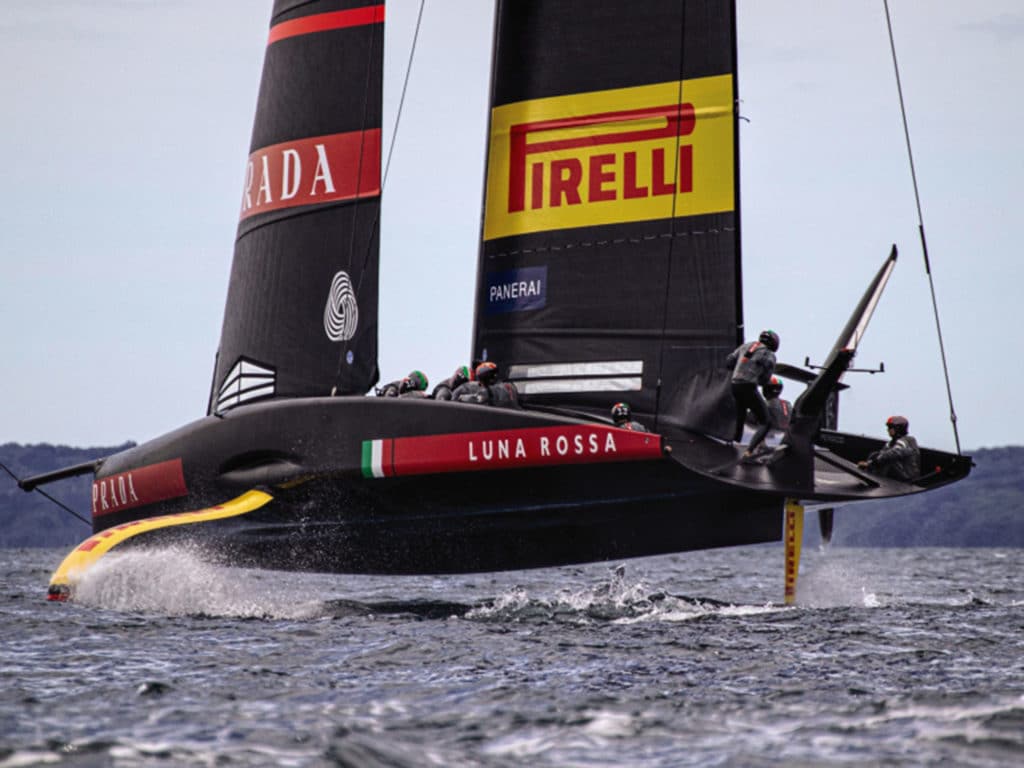
Muyl agrees, adding: “[It’s] not forgiving if we touch because there’s quite a lot of wetted surface area to start with. So, effectively, we are relying quite a lot on the ability of the sailors to control the boat and to fly it just above the free surface.”
“American Magic has a very narrow hump,” Fisher says. “So, in my opinion, they’re focused more on aerodynamics and flying low than on takeoff.”
Or maybe they want the best of both worlds. Muyl points to a different takeoff technique. “Their strategy to takeoff is to accelerate as well as they can, but then, when they are at the speed to takeoff, somewhere between 16 and 19 [knots], they force the nose up with their rudder, and effectively increase the angle of attack on the foil and takeoff like that.”
American Magic’s designer, Marcelino Botin, wasn’t giving much away at this stage. Speaking at the launch of Patriot , he said: “We’ve got a philosophy of the boat that we need, and the boat we have produced is our interpretation of the best possible boat to take forward that way of thinking.”
And the Italians? “Our hump is more rounded, and I would say ours is somewhere in between what the Americans did, and what the British and Team New Zealand did,” Fischer says. “So that’s a choice. When you design the yacht, you have to make assumptions and define conditions for which you want to optimize your shape.”
The winning design will need both the most accurate set of assumptions about the competing priorities, and efficient optimization. Easy to say, but there is nothing straightforward about this process, as Muyl explains: “I find this boat really complex, in terms of how everything is so interlinked. If you look at just the foils, we have [in the fleet] some very large bulbs and some very small bulbs—the whole scope. So, that’s interesting that four teams of competent people with comparable tools, with comparable budget and time, effectively reached some very different solutions in the end. I personally found it very hard to have a feeling for what’s the direction to go to be faster. The whole thing is incredibly intertwined. I find it very complex. And that’s at every level of the design.”
Fischer agrees, adding: “This kind of hull was new for everybody, and basically, everybody had to start from scratch and find new ways. And I can say, I don’t know what the others did, but we went for a very mathematical approach to get there. We used, right from the beginning, a dynamic simulator.
“We used systematic, automatic optimization methods to get to the hull shape that we got in the end. And I think without this mathematical approach, it would have been very, very difficult. And I guess for the other teams, it’s the same. I think it is very difficult with these boats to get to a good result with pure intuition.”
Now that they can see where they fit into the fleet, how do they feel?
“Well, I think we don’t really know,” Muyl says. “We have a feel for New Zealand. I mean, they won the last one. They gave a sailing lesson to everyone. So, they are usually strong, but so much is about reliability that I find it really hard to have a sense that I can trust about where things are.”
Fischer was more guardedly optimistic about the Challenger’s chances. “I think as usual, [ETNZ] did a good job, but I don’t think they…well, I hope they won’t be superior, and I don’t think they will be superior. I think it will be pretty tight racing.”
- More: AC75 , America's Cup , foiling , print 2021 winter , Racing
- More Racing

Brauer Sails into Hearts, Minds and History
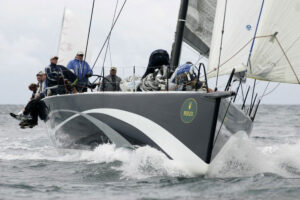
Anticipation and Temptation
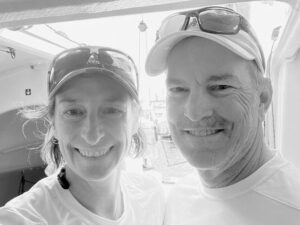
America’s Offshore Couple

Jobson All-Star Juniors 2024: The Fast Generation

Wingfoiling Gear: A Beginner’s Guide
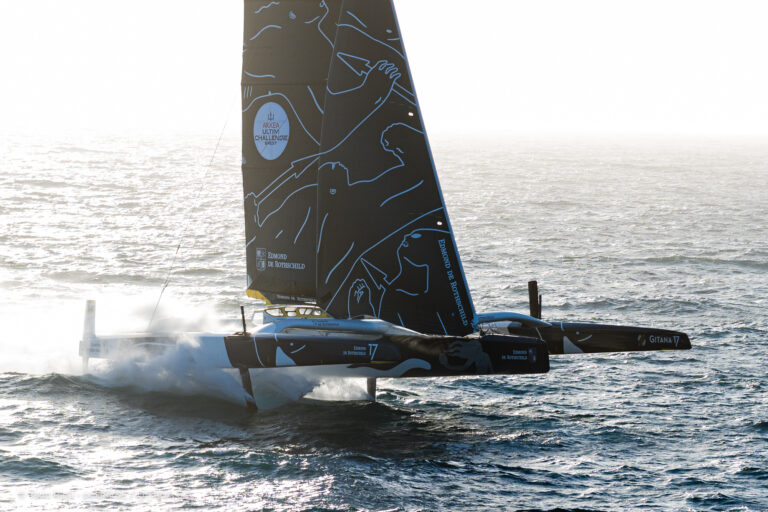
Caudrelier Wins Round-the-World Solo Sprint

- Digital Edition
- Customer Service
- Privacy Policy
- Terms of Use
- Cruising World
- Florida Travel + Life
- Sailing World
- Salt Water Sportsman
- Sport Fishing
- Wakeboarding

Sailboat Hulls: Steel Vs Fiberglass

Last Updated by
Jacob Collier
August 30, 2022
For decades, sailors and boat owners have been having hotly contested debates about the merits of steel hulls vs fiberglass hulls in sailboats.
The major benefits of boats with steel hulls are that they are very strong, durable, and can be repaired easily. On the other hand, a fiberglass hull offers your boat a smooth and sleek look that is very pleasing. They are also lighter, faster, and require less maintenance than steel boats.
Whether you are building your own sailboat or thinking of buying one, getting the right material for the hull is of paramount importance. Your choice of material should depend on consideration of multiple factors, including its durability, stability, maintenance, repairs, weight, comfort, safety, and cost.
We have a team of sailing experts who have spent decades on the water and have set sail on boats built of all types of materials available. So who better to walk you through the pros and cons of steel and fiberglass hulls?
Table of contents
Steel Hull vs Fiberglass Hull: Top 10 Factors to Consider
Let us take a look at some of the major factors that can help you determine whether a boat with a steel hull or fiberglass hull will be a better choice for you.
Sailboats with steel hulls are much more durable and stronger than those with fiberglass hulls. Steel sailboats have a more rigid structure and are quite robust so they can better understand grazes, rubs, and bumps when out in the open water.
In case of impact, a steel hull will bend and may become dented; however, a fiberglass hull has a higher possibility of breaking. That’s because steel is more ductile and can withstand strong blows without losing its toughness.
Fiberglass is a lighter material than steel, making fiberglass boats lighter. Many people prefer this quality since it means that the boat will travel faster on water and will require less power and wind energy to move than a boat with a steel hull. This means lower fuel consumption and more savings. However, a fiberglass boat will be more prone to be buffeted by the winds since it is lighter.
Anti-Corrosion Properties
The sailboat manufacturing industry now uses state-of-the-art technology and makes use of the best quality materials to make the hull. Steel corrodes when exposed to the atmosphere. However, if the right alloy is used for making the hull, it will resist saltwater corrosion, without even needing special paint.
Steel boats also experience electrolytic or galvanic corrosion, but they can be avoided with the use of insulated electrical connections and sacrificial anodes.
Fiberglass does not corrode. However, it can still suffer from osmosis if the fiberglass had air bubbles at the time of lamination. This can cause water to collect in the void, forming blisters that can weaken the hull. Fiberglass may also become damaged from ultraviolet radiation.
Since steel boats are heavier than fiberglass boats, it means they are more stable on the sea, particularly if you experience choppy waters. A fiberglass boat, on the other hand, is lighter, and hence sailors may experience a rougher journey on choppy waters.
In addition, due to its extra weight, steel boats drift slower and more predictably, which is particularly useful for anglers.
Maintenance
Many steel boats require greater maintenance since they are more prone to corrosion. Galvanic corrosion can occur when two different metals are placed together. Hence, it is important that you ensure that high-quality materials, joints, and screws are used on the hull. It is important to rinse the hull with fresh water once it is out of the sea.
Fiberglass boat hulls do not have welds and rivets and you do not need to worry about the hull rusting. However, it can experience osmosis issues, which can cause serious problems if they are not treated in time.
Both fiberglass and steel boats require antifouling application to prevent barnacles, algae, and other sea organisms from sticking to the hull. However, antifouling can be more expensive for steel boats.
It is easy to repair small dents in steel boats. However, if the damage is extensive, it can be more complicated and costly to repair or replace large sections of steel hulls. Welding a boat hull is a specialized job that requires trained professionals.
It is easier to repair a broken fiberglass hull, but it may never have the same strength and durability as the original hull since the structural tension will not be equal at all points.
Fiberglass boats are made of petroleum-based products that are flammable. Hence, in case of a fire, they will burn easily and quickly. A steel boat is much safer since it cannot burn. In addition, a significant impact from an unidentified floating object can result in a breach in a fiberglass hull easily and open up a waterway into the boat that can cause it to sink. Steel, on the other hand, can withstand larger impacts without compromising the integrity of the boat.
Steel boats operate much louder than fiberglass boats, especially in turbulent seas at high speed. Steel is also a good conductor of heat and if it is not well-insulated during construction, it can become uncomfortably warm in the summer and cold in the winter. On the other hand, boats with fiberglass hulls do not transmit heat well and are more comfortable.
When it comes to aesthetic appeal, fiberglass hulls have a sleeker, shinier, and more polished look. Steel hulls often have marks of reinforcements on their hulls and they need to get a nice paint to look good. In most cases, steel hulls are covered with putty to hide any construction defects. This putty should be polished so that the boat has a nice finish and is done in a controlled environment to keep out dust.
As you can imagine, this process is complex, costly, and drives up the price of the boat.
It is easier to manufacture fiberglass hulls and mold them into more complex shapes. This can lead to faster production and lower construction costs. Sailboats with steel hulls are more expensive, as we mentioned before because they require welding, heavy-duty grinding , and specialized cutting tools and are more labor-intensive.
When Should You Choose a Steel Boat?
Steel hulls are stronger, durable, and more impact-resistant than their fiberglass counterparts. Dents in steel hulls can be repaired easily and although steel is prone to corrosion, this can be managed by special paints, insulation, and some regular maintenance.
If you are deciding on a circumnavigation or want to go out on a long spree in the water, you need a solid and dependable boat that you can rely on when you venture into new territories.
A well-maintained sailboat gives you the confidence to enter into unfamiliar rocky coasts and reduce your worries about hitting UFOs. However, keep in mind that steel boats may be slower than fiberglass boats, particularly if they are smaller vessels.
When Should You Choose a Fiberglass Boat?
Fiberglass boats are generally prettier than steel boats since they have a smooth and polished hull. They also do not require protective paint on their hull since they are corrosion-free and hence quite low maintenance. In addition, they are lighter and faster than their steel counterparts and do not cost as much.
However, one big concern of a fiberglass hull is that it is not as strong as a steel hull. If the boat hits a hard object, the fiberglass may break, which can be dangerous on the open seas, particularly in choppy waters.
Still, fiberglass boats are an excellent option for racing and even long-distance cruising in areas that do not have sharp rocks.
The type of sailboat you choose depends on your sailing style and your needs. So make sure you consider all the factors before you invest in a steel or fiberglass boat.
Related Articles
Types of Sailboat Hulls
What Is a Sailboat Hull?
Born into a family of sailing enthusiasts, words like “ballast” and “jibing” were often a part of dinner conversations. These days Jacob sails a Hallberg-Rassy 44, having covered almost 6000 NM. While he’s made several voyages, his favorite one is the trip from California to Hawaii as it was his first fully independent voyage.
by this author
Learn About Sailboats
Most Recent

What Does "Sailing By The Lee" Mean?
Daniel Wade
October 3, 2023

The Best Sailing Schools And Programs: Reviews & Ratings
September 26, 2023
Important Legal Info
Lifeofsailing.com is a participant in the Amazon Services LLC Associates Program, an affiliate advertising program designed to provide a means for sites to earn advertising fees by advertising and linking to Amazon. This site also participates in other affiliate programs and is compensated for referring traffic and business to these companies.
Similar Posts

Affordable Sailboats You Can Build at Home
September 13, 2023

Best Small Sailboat Ornaments
September 12, 2023

Discover the Magic of Hydrofoil Sailboats
December 11, 2023
Popular Posts

Best Liveaboard Catamaran Sailboats
December 28, 2023

Can a Novice Sail Around the World?
Elizabeth O'Malley
June 15, 2022

4 Best Electric Outboard Motors

How Long Did It Take The Vikings To Sail To England?

10 Best Sailboat Brands (And Why)
December 20, 2023

7 Best Places To Liveaboard A Sailboat
Get the best sailing content.
Top Rated Posts
Lifeofsailing.com is a participant in the Amazon Services LLC Associates Program, an affiliate advertising program designed to provide a means for sites to earn advertising fees by advertising and linking to Amazon. This site also participates in other affiliate programs and is compensated for referring traffic and business to these companies. (866) 342-SAIL
© 2024 Life of Sailing Email: [email protected] Address: 11816 Inwood Rd #3024 Dallas, TX 75244 Disclaimer Privacy Policy

(215) 508-2704
- Tao Catamarans
- Dolphin Catamarans
- Voyage Catamarans
- All Pre-Owned Catamarans
- Exclusive TMC Catamarans
- Sold Catamarans
- Buying A Multihull
- Selling A Multihull
- Sailing Schools
- Yacht Charters
- TMC Newsletter
- Employment Opportunities
- Mission Statement
- Affiliations
The World's Leader in Multihull Sales and Service
Dolphin 460.
- Punta Gorda
Privilege Series 5
- Fort Pierce
Nautitech 46 Open
- Cape Charles
- US$1,990,000
- Fort Lauderdale
Advanced Search
Exclusive TMC Listings
- US$2,472,698
Voyage Yachts 590
- US$2,199,000
Power Catamaran
- US$1,739,040
Catana Taino 25 Custom
- US$1,630,350
Privilege 510
- US$1,599,000
- US$1,495,000
- US$1,475,000
Custom Current Marine 46
- US$1,399,000
- Port Washington
Xquisite Yachts X5
- US$1,250,000
- Saint Augustine
- US$1,141,245
Gold Coast 70 Wave Piercer
- US$1,045,000
- Providencia
Schionning Arrow 1280 S
- King George
See All Exclusive Multihulls For Sale
See all pre-owned multihulls for sale, meet the team, will miller charleston, south carolina.
Captain Will Miller is President and CEO of The Multihull Company. Will grew up in Virginia and learned to sail in the Chesapeake Bay. He has lived in Charleston since 2001 and knows the city well. Throughout his life Will’s parents have owned a variety of sail, ski, and fishing boats in the Chesapeake Bay and its tributaries, the Carolinas, and the Caribbean. Family vacations included chartering in the Virgin...
- Read Full Profile
- See All Team Members
Andrew Holland Philadelphia, Pennsylvania
Andrew Holland is the COO of The Multihull Company and is an avid catamaran enthusiast. He began working at The Multihull Company in 2007 after graduating from Temple University with a degree in Journalism and a minor in Marketing. Before joining TMC in 2007, Andrew worked for Philadelphia Media Holdings on the Philly.com production team and freelanced for several major magazines around the country. After joining the The Multihull Company...
Lynn Miller Charleston, South Carolina
Lynn Marie Miller was born into a family with several generations of professional mariners who traversed the globe by sea. She was raised in Charleston, SC by her local sportfishing legend father, and perennial 1st mate mother, who instilled a passion and respect for the world's oceans. With salt water flowing through her veins Lynn became an avid angler, surfer, and boating enthusiast as soon as she learned to swim....
Courtney Greider Charleston, South Carolina
Courtney Greider is the Sales and Marketing Manager of The Multihull Company, located at our branch in Charleston, SC. Courtney discovered her love for boating and marina life over twenty years ago, working through college as a dock assistant at the Charleston City Marina. In these years as marina concierge to every variety of boating clientele – from the most extravagant to the most humble - she found an undeniable...
Alexis de Boucaud Ft. Lauderdale, Florida
Alexis grew up racing dinghies in the waters of Brittany, France. He immigrated to the United States as a young man and developed his interest in offshore cruising and racing in New England and the Bahamas. Alexis began his professional yachting career as a charter captain sailing the storied seas of French Polynesia on a Fountaine-Pajot Marquises 56 catamaran. There he developed a talent for sharing and communicating his love...
Andrew Hodgdon St Augustine, Florida
Andrew grew up sailing his father's Hobie Cat and transitioned that into a long career as a USCG licensed captain in the yachting industry. Working his way up from his college years as a sailing instructor to a position as a private yacht captain aboard a Gunboat 57, he brings with him a comprehensive knowledge of catamarans and the cruising life. His career has taken him from his home waters...
Conor Dugan Ft. Lauderdale, Florida
Conor was born and raised in a small beach town in New Jersey and began sailing Optimists competitively at a young age. He and his family relocated to Wilmington, North Carolina during his highschool years, where his interest in sailing bloomed into a lifelong passion. In the summer he transferred between schools, Conor’s family sent him on a month-long catamaran sailing excursion from Grenada to St. Lucia with Broadreach Excursions....
Mark Wattrus Cape Town, Western Cape
Mark Wattrus was born on the coast of Durban, South Africa and started his journey into Yachting at an early age. Growing up on the coast, Mark found a passion in free dive spearfishing having been trained under the guidance of world record holder, Trevor Hutton. The underwater life ultimately pushed Mark to pursue a life on the water. Straight after boarding school, Mark’s sailing abilities were recognized, and he...
Cal Landau West Palm Beach, Florida
Cal grew up in Pennsylvania, spending every summer since born on the rivers, on houseboats, speedboats and did some serious water skiing with his brothers before diverting to racing rally cars for almost 30 years winning two National Championships driving for Dominos Pizza. His next career path took him to become an international award winning wedding and portrait photographer. It was in that time Cal’s father, who was a live...
Cynthia Wummer Ft. Lauderdale, Florida
The Multihull Company is excited to announce the addition of Cynthia Wummer to its team of brokers in Fort Lauderdale. Cynthia delivers lasting value for her clients as a genuine sailboat specialist. Her vast racing and cruising resumé bears a depth of knowledge that creates a winning connection. Cynthia says, “Some people come to the buying process with next-to-no experience, while others are extremely qualified cruisers looking for their next-level...
George Ottoni
Born in Long Island, New York, George Ottoni is the first generation Brazilian-American in his family. His father shared his love for sailing with his young son with a fleet of seven model sailboats. Years of racing at New York’s annual Central Park Regatta resulted in a New York Times story depicting their boat in the lead, turning back halfway, and still finishing in 3rdplace. George became “hooked” on boating...
Dunbar Lewis Ft. Lauderdale, Florida
Ian edmonson fort pierce, florida.
Ian Edmonson has a lifelong passion for boating, honed from an early age and further developed through a teenage experience crewing in the Bahamas. For Ian, there's nothing better than a day spent cruising and anchoring in breathtaking settings. With a background in yacht brokerage and real estate, Ian has spent most of his professional career as a luxury real estate expert in Boca Raton, specializing in oceanfront and intracoastal...
Michael Streng Florida Keys, Florida
Michael Streng grew up in Ohio where his love of the outdoors and water developed at an early age on ski boats with his family. This love affair for being on the water has blossomed today so that Mike, his wife, Melanie, and their two cats spend a significant amount of time on their catamaran, a Leopard 46, serving the Florida Keys. When not sailing, Mike can be found water-skiing,...
Karl Reed Annapolis, Maryland
Captain Karl Reed is one of The Multihull Company’s youngest brokers but is perhaps one of the most ambitious and hardworking. Karl not only has over 70,000 nautical miles under his belt but he is also a co-founder of Rhea Yacht Management, which operates on the US East Coast and in the Caribbean. As a kid, Karl spent his formative years going to sailing camps along the Potomac River, near...
Alan Prater Hampton Roads, Virginia
Meet Alan Prater, a highly experienced and skilled yacht broker and maritime training professional. Growing up in Arkansas, Alan developed a love for being on the water at a young age. He spent his childhood kneeboarding, wakeboarding, and playing sports on the lakes, before joining the United States Navy at 18. During his 22 years in the Navy, Alan had the opportunity to drive and be assigned to various sized...
Mike grew up on the Delaware River and Jersey shore where he spent as much time as possible on the water wakeboarding, kite surfing, and surfing. It wasn’t until his late 20’s that he discovered sailing when he and his brother refit a Bob Perry monohull and sailed from New England to New Zealand. After the trip across the Pacific, he knew a catamaran was in the cards. After years of...
Matthew Dunning Tacoma, Washington
Matthew brings 30 years experience cruising multihulls on Puget Sound and points north to the TMC brokerage team. Along with his practical knowledge of multihull designs and seamanship, Matthew is a graduate of Dartmouth College with a degree in Geography. He has 14 years of experience with TMC and an intimate knowledge of the Northwest’s unique maritime geography that he describes as, “One of the world’s most beautiful, intricate, and...
Chris Rundlett L ‘Anse Espines, Grenada,
Chris Rundlett’s first sailing adventure was on a small Sunfish owned by the U.S. Coast Guard where his father was stationed in North Dakota. There was plenty of wind – but not much water! Since then he dreamed of bigger horizons and sailed whenever he had the chance. Chris is a true son of a sailor. Chris started his maritime career teaching USCG Captains Licensing courses in the Pacific Northwest....
Chrystal Young L ‘Anse Espines, Grenada,
As owners of a sailing school, it quickly became evident that many people learning to sail also want to buy boats! The partnership with The Multihull Company and LTD Sailing in beautiful Port Louis Marina is a natural progression to complete the circle of services offered in Grenada and the Grenadines. Do what you love! Sailing and sailboats are at the top of the list of Chrystal’s passions and now...
Paco Montaner Fajardo, Puerto Rico
Captain Francisco “Paco” Montaner was born and raised on the eastern coast of Puerto Rico. Captain Paco, as most know him, has been sailing the Caribbean waters from an early age. Having worked in almost every aspect, Paco now holds a solid grasp over many concepts within the maritime industry. Paco began performing offshore crossings in his early 20’s and has never stopped. He is known to have sailed over...
Charles Badoian Bastimentos Island, Panama,
At 12 years old Charles told his mom he wanted to live on a boat and that dream became a reality at 35 when he moved onboard a baby trimaran full time. Growing up in Greece and moving back to the USA for highschool and college, Charles has never veered far from the water. After a decade in the Florida Keys and the Bahamas, Charles is now based in Bocas...
Jaryd Forbes Chaguaramas, Carenage, Trinidad
Growing up in Trinidad & Tobago, Jaryd Forbes love of the ocean started at a very young age. Travelling aboard his Fathers Lagoon 42 “Delphini”, Jaryd developed a thorough knowledge and affinity for crafts of all types as well as ocean faring. With experience ranging from power to sailboats of all models and sizes, and assisting with pre-purchase surveys and deliveries, he possesses an intimate knowledge of his native Trinidad...
Bernard Tarres Port-Pin-Rolland,
Meet Bernard Tarres, a yacht sales expert with a passion for catamarans and a long history in the maritime industry. At the age of 16, he discovered his love for sailing while in Brittany and spent several years honing his skills at sailing schools. At 18, he purchased his own Hobbie Cat 16 and raced along the French and Italian coastlines. From 1986 to 1990, he served as a permanent...
Jean Gerber Port-Pin-Rolland,
Jean was born in 1985 in Toulouse where he grew up on the family farm with four sisters. Although he was far from the sea, he discovered sailing at the age of 6, thanks to am uncle and mentor who at that time owned a 30 feet wooden monohull and ran a sailing school near La Rochelle. He was hooked right away and spent all of his childhood...
Zvonimir Kalinic Rijeka, Croatia,
Meet Zvonimir, also known as "Zee," a catamaran broker at The Multihull Company with a decade of experience in yacht brokerage. Hailing from the Island of Krk, Croatia's largest island, Zvonimir's adventurous spirit found its perfect match along the stunning coast of the Adriatic Sea. Zvonimir's love for the sea began with scuba diving and exploring beautiful underwater locations. Alongside sailing, underwater photography, spearfishing, and playing the guitar, he found...
Shelley Joyce
Shelley Joyce is a passionate sailor, entrepreneur, and world traveler. With roots in Southern California, her love of the ocean is interwoven into every facet of her life. She grew up on the sunny shores of San Diego, bodyboarding and sailing, and spent her holidays in Baja California, Mexico. She married young to a local surfer boy and, together, they raised three children who share their devotion to surfing, sailing,...
By Sailors, For Sailors
The Multihull Company Difference
- Expert catamaran brokers
- Global Offices
- Highest of Ethical Standards
- Friendly service
Recent News
The multihull company announces the sale of the first pre-owned balance 482.
The Multihull Company is pleased to announce the closing on the Balance 482 "SeaLife" We wanted to take a moment and thank her new owners on their amazing new catamaran, and to also congratulate our team handling the sale. TMC agent Andrew Hodgdon successfully represented the buyers on the sale of the vessel, while TMC CEO Will Miller represented the...
THE MULTIHULL COMPANY ANNOUNCED AS DEALER FOR THE VOYAGE 590
The Multihull Company is pleased to announce their appointment as a dealer for Voyage Yachts and their new model – the Voyage 590! The Voyage 590 is being celebrated as the ultimate, luxury sailing catamaran with all the comforts of home surrounded by panoramic views of paradise. She maximizes luxury accommodation and comfort, with the performance and blue-water capability characteristic...
6 Great Starter Catamarans
In early 2023, Cruising World approached us to seek our opinion on recommending a couple of brokerage catamaran options for first time catamaran buyers to consider when they first stepping into the catamaran market. Here are six boats hand-picked by The Multihull Company’s president and CEO, Capt. Will Miller, as excellent choices for brokerage-catamaran seekers. These are all worth a...
The Multihull Company Named Exclusive Dealer for Dolphin Catamarans and their New Model, the Dolphin 380
The Multihull Company, the world’s leader in multihull sales and service is excited to announce that it has been named the exclusive dealer for Dolphin Catamarans, a premier builder of high-quality catamarans, and their newest model, the Dolphin 380, designed by Philippe Pouvreau. "We are thrilled to be working with Dolphin Catamarans again and to be able to offer their...
Visit Us at the 2023 Miami Boat Show
The Multihull Company is thrilled to announce our participation in the Miami Boat Show, taking place on February 15-19, 2023. As one of the premier boat shows in the world, this event is the perfect platform for us to showcase our wide range of high-quality multihulls for sale. We are committed to providing our customers with the best experience possible,...
Introducing the Tao 452: On Display At The Annapolis Boat Show October 12 – 15, 2023
The Multihull Company is thrilled to unveil the new Tao 452, an exciting addition to the world of blue-water performance cruising catamarans. Meticulously engineered and crafted to perfection, the Tao 452 is set to redefine the catamaran experience for sailors worldwide. If you've ever felt the need for more sailing performance from your current production charter catamaran or been disappointed...
Join Us At The Annapolis Boat Show Aboard the Voyage 590
The Multihull Company is excited to announce its participation in this year's Annapolis Sailboat Show. The event will be held from October 12 - 15, 2023 in downtown Annapolis, and The Multihull Company will be showcasing the exquisite Voyage 590 catamaran from Voyage Yachts. The Annapolis Boat Show is a highly anticipated annual event that brings together boating enthusiasts, industry...
Ian Edmonson Joins TMC As Yacht Broker in Fort Pierce, FL.
The Multihull Company is thrilled to announce the appointment of Ian Edmonson as a yacht broker at its newly opened Fort Pierce location. Ian brings a unique blend of boating passion, brokerage experience, real estate expertise, and customer-focused mentality to the team. Ian's love for boating began at an early age and has only continued to grow, leading him to...
The Multihull Company Opens New Office in Virginia
We are thrilled to announce that Alan Prater has joined The Multihull Company team as a Yacht Broker in Virginia covering the Hampton Roads area of Virginia. With a lifelong passion for the water and a career spent in the US Navy and as a maritime training professional, Alan brings a wealth of experience and expertise to our team. Alan...
- Read All Articles
We take pride in our happy customers
Your team delivered on every mark. You’ve got an amazing broker in Mark Wattrus and I’m confident you will have continued success moving forward together. He was available 24/7 whenever I had questions. We had a great initial visit on the boat and his marketing plan and photos were superb
I bought a yacht that I had never seen. I did this because I trusted my broker Andrew Holland. It was not an easy job for Andrew, as I am an experienced boat builder and owner of previous yachts, but work in West Africa. Imagine how hard it was to communicate what I was looking for. Andrew came up with exactly what I wanted. He dealt with time delays, all my questions at odd hours, and was there for the survey. He reported honestly and professionally. After buying the yacht, I arrived at the boat on a Sunday night, after dark, after travelling from West Africa to the Caribbean, and found it was better than expected. He never pulled punches and made me aware of shortfalls. I expected to spend my one month leave working on the boat, but actually spent less than one week, and was able to spend 3 weeks sailing – wonderful bonus.
Thank you Andrew for putting up with all my questions, all my worries and all my crazy out of the time zone concerns – you were totally professional, but also I know that if and when we meet up, it will be like a friend finally meeting. You are always welcome on Aseka.
— Beverly Cory
Outstanding company with professional subject matter experts. If I were to buy or sell cruising sailboat, particularly a catamaran, Andrew would be my go to broker.
I have been sailing since I was a child and attended Massachusetts Maritime Academy. But when my wife and I began the process of purchasing an ocean cruising/racing catamaran, I realized that this is a world unto itself. Obviously, we needed to find someone knowledgeable to help us make an informed decision. More importantly, we needed someone honest and willing to put our interests before his or her own. I was lucky to work with Phil Berman at The Multihull Company. He repeatedly shunned the fast buck, choosing instead to work the long road to connect us with the “perfect boat”. I would be glad to recommend Phil and his company to anyone planning to purchase or sell a performance sailing machine.
— Eric Boutiette
Andrew Hodgdon was our broker when we bought our 2018 Lagoon 450F in Antigua in April 2922. He provided great service and was very attentive to our needs. We would highly recommend Andrew and the Multihull Company.
Trust & Expertise About Us
Successful relationships cannot exist without it. At The Multihull Company we base every relationship on a firm commitment to earning and retaining our client’s trust.
Advice of any kind is valuable only when grounded in hard-won expertise. It too, must be trustworthy. Trust and expertise define the heart and soul of The Multihull Company. We are a team of skilled professionals who thrive on providing expert, trustworthy advice and service to catamaran and trimaran sailors around the globe.
Follow us @themultihullcompany
- Pre-Owned Sales
Global Locations
New England +1-267-324-9067
Philadelphia +1-215-508-2704
Virginia +1-757-407-2526
Annapolis +1-703-350-8160
Charleston +1-843-364-4123
Brunswick +1-937-243-2213
Saint Augustine +1-910-477-2508
Fort Pierce +1-904-315-0997
West Palm Beach +1-561-312-0010
Ft. Lauderdale +1-484-744-2740
Miami +1-513-677-5338
San Francisco +1-215-508-2704
Seattle-Tacoma +1-206-297-1151
St. Martin +590 690 58 66 06
Grenada +1-473-457-3245
Puerto Rico +1-787-379-7348
Panama +1-305-735-1661
Trinidad +1-868-680-8909
Croatia +385 95 849 8009
France +33 (0) 6 73 97 17 30
Mauritius +1-215-508-2704
Australia +61 (0)7 5444 4822
Cape Town +1-843-614-2028
© Copyright 2024 The Multihull Company. All rights reserved.

The global authority in superyachting
- NEWSLETTERS
- Yachts Home
- The Superyacht Directory
- Yacht Reports
- Brokerage News
- The largest yachts in the world
- The Register
- Yacht Advice
- Yacht Design
- 12m to 24m yachts
- Monaco Yacht Show
- Builder Directory
- Designer Directory
- Interior Design Directory
- Naval Architect Directory
- Yachts for sale home
- Motor yachts
- Sailing yachts
- Explorer yachts
- Classic yachts
- Sale Broker Directory
- Charter Home
- Yachts for Charter
- Charter Destinations
- Charter Broker Directory
- Destinations Home
- Mediterranean
- South Pacific
- Rest of the World
- Boat Life Home
- Owners' Experiences
- Interiors Suppliers
- Owners' Club
- Captains' Club
- BOAT Showcase
- Boat Presents
- Events Home
- World Superyacht Awards
- Superyacht Design Festival
- Design and Innovation Awards
- Young Designer of the Year Award
- Artistry and Craft Awards
- Explorer Yachts Summit
- Ocean Talks
- The Ocean Awards
- BOAT Connect
- Between the bays
- Golf Invitational
- Boat Pro Home
- Pricing Plan
- Superyacht Insight
- Product Features
- Premium Content
- Testimonials
- Global Order Book
- Tenders & Equipment

Hull turned on Atlante Yachts' first 35m explorer yacht
Construction is officially underway on Atlante Yachts' 34.5-metre explorer series, the Atlante Classic 35. The first unit has had its hull turned at Mengi Yay 's shipyard in Tuzla, Turkey.
Commissioned by an "experienced Northern European client", the yacht is scheduled for delivery in spring 2025.
The Atlante Classic 35 is a modern interpretation of the full displacement explorer yacht, with Atlante Yachts committed to an all-Italian design. Exterior and interior design is therefore owed to VYD Studio , while naval architecture will be completed by Arrabito Naval Architects .
Accommodation is across five en suite cabins. Interior renderings reveal a fresh, contemporary style with floor-to-ceiling windows, light-wood wall panelling and a gentle colour palette of blues and greys. The design was developed with extensive input from the owners, including the choice of high-quality Italian materials and fabrics.
Leisure highlights include a beach club with an unfolding transom and ample entertainment areas across its three decks. The hardtop sundeck is the main communal area, fitted with fixed sunpads, an al fresco dining area with U-shaped sofa seating and a dry bar.
"With the layout of the Atlante Classic 35 we have aimed to achieve a perfect equilibrium within the parameters of length, beam and within a very high volume of 330GT usually only available in vessels several metres longer," said Paolo Dose of VYD Studio. "This allows a harmonious balance between accommodation, living, exterior and technical areas."
Powered by twin Volvo Penta engines, the Atlante Classic 35 will have a cruising speed of 11 knots and a range in excess of 5,000 nautical miles.
According to BOATPro , Mengi Yay has seven other hulls currently under construction. This includes the first two hulls in its "go anywhere" explorer series Virtus XP, both scheduled for delivery in 2025.
Similar yachts for sale
More stories, most popular, from our partners, sponsored listings.
- 2024 BOAT BUYERS GUIDE
- Email Newsletters
- Boat of the Year
- 2024 Freshwater Boat and Gear Buyers Guide
- 2024 Boat Buyers Guide
- 2024 Water Sports Boat Buyers Guide
- 2023 Pontoon Boat Buyers Guide
- Cruising Boats
- Pontoon Boats
- Fishing Boats
- Personal Watercraft
- Water Sports
- Boat Walkthroughs
- What To Look For
- Best Marine Electronics & Technology
- Watersports Favorites Spring 2022
- Boating Lab
- Boating Safety

Using Hydrofoils to Improve Boat Performance
- By Capt. Vincent Daniello
- March 15, 2024
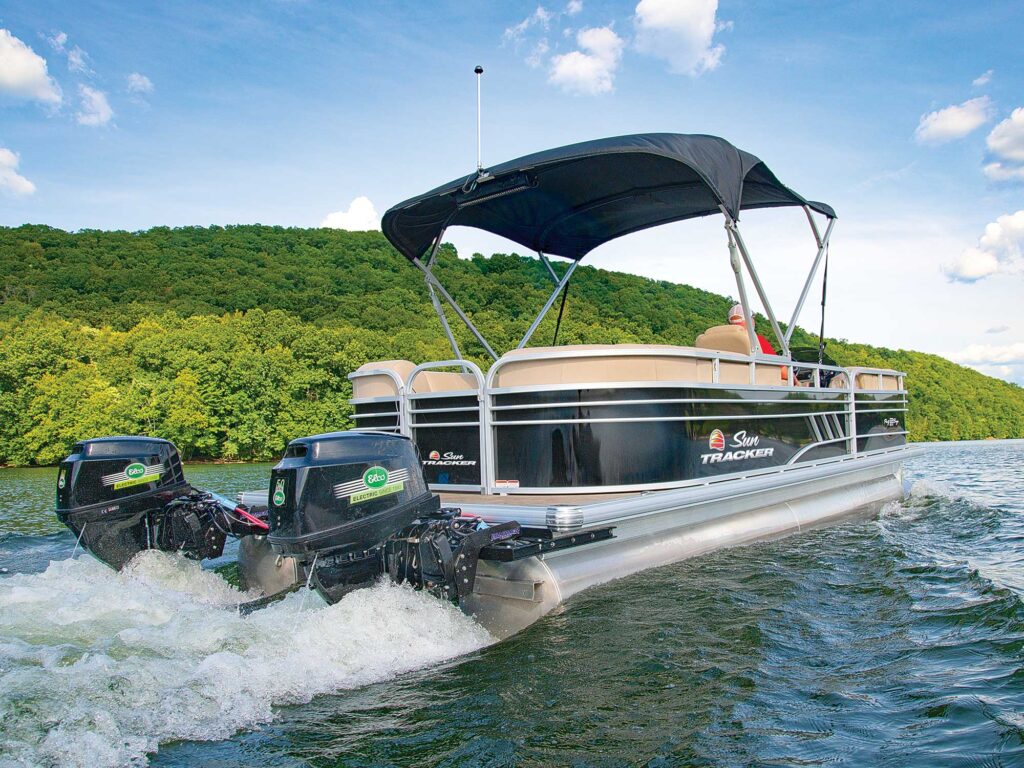
In my early days as a captain, few boats cruised faster than 30 mph. Back then, bigger engines and the fuel they burned added too much weight, netting little more speed. Today, even modest performers top 50 mph thanks to lighter engines and boat construction, where more ponies push fewer pounds.
Electric propulsion leaves boats yet again struggling in that extra-pounds paradigm. Adding fuel— measured in kilowatt-hours of lithium batteries—attenuates attempts to go faster and farther, at least until batteries become lighter. But there might be another way. I tested an electric-powered SunTracker Party Barge 22 DLX both before and after Hydrofin installed its hydrofoil system, which lifts a boat while moving through the water. This effectively overcame 800 pounds of lithium iron phosphate (LiFePO4) batteries—40 kilowatt-hours—that fueled twin Elco EP-50 electric outboards. In the end, flying on foils increased the boat’s speed by well more than a third and improved efficiency markedly. So, what are hydrofoils, and can they enhance performance aboard other boats too?
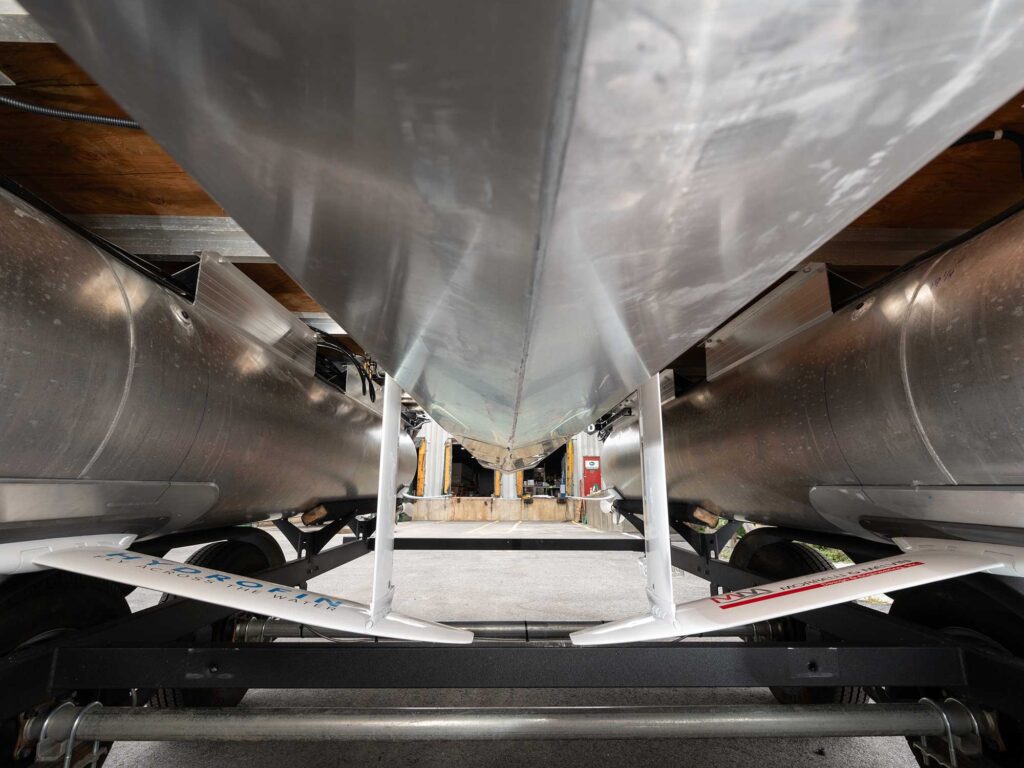
Performance Takes Flight
“We’re a long way from batteries that provide lightweight energy. Our hydrofoils create lift to overcome that additional weight,” says Jason Minor, Hydrofin’s founder. The patented system, engineered by noted catamaran and America’s Cup sailing foil-design firm Morrelli & Melvin of Newport Beach, California, utilizes powder-coated aluminum foils—essentially underwater wings. Mounting pads epoxied to hulls allow incremental adjustment of location and angle of attack, so Hydrofin foils lift nearly half a boat’s weight. “A typical bi-toon with a gas 150 runs around 30 mph. Adding Hydrofin foils can easily make it run 37 to 39 mph,” Minor says, adding that 30 percent better economy is common at cruising speeds. Riding higher on wings makes boats run smoother, dryer and quieter too. (See our Hydrofin test on a Misty Harbor 2528 pontoon with a Merc 150 hp gas outboard at boatingmag.com/hydrofin .)
Put to the Test
Hydrofin foils lifted so much battery weight that our Elco-powered test boat required larger propellers to see full improvement. Comparing performance from the final propellers, with foils removed, the boat reached 17.2 mph turning just 5,400 rpm and drawing an overloaded 67.2 kW. With Hydrofin foils installed, those same props turned 5,750 rpm to reach 24.9 mph at 58.56 kW. The original propellers, without hydrofoils, reached 6,000 rpm and 17.9 mph while consuming 49.06 kW, which we used to compute 39 percent increased speed and 16 percent improved efficiency with hydrofoils installed.
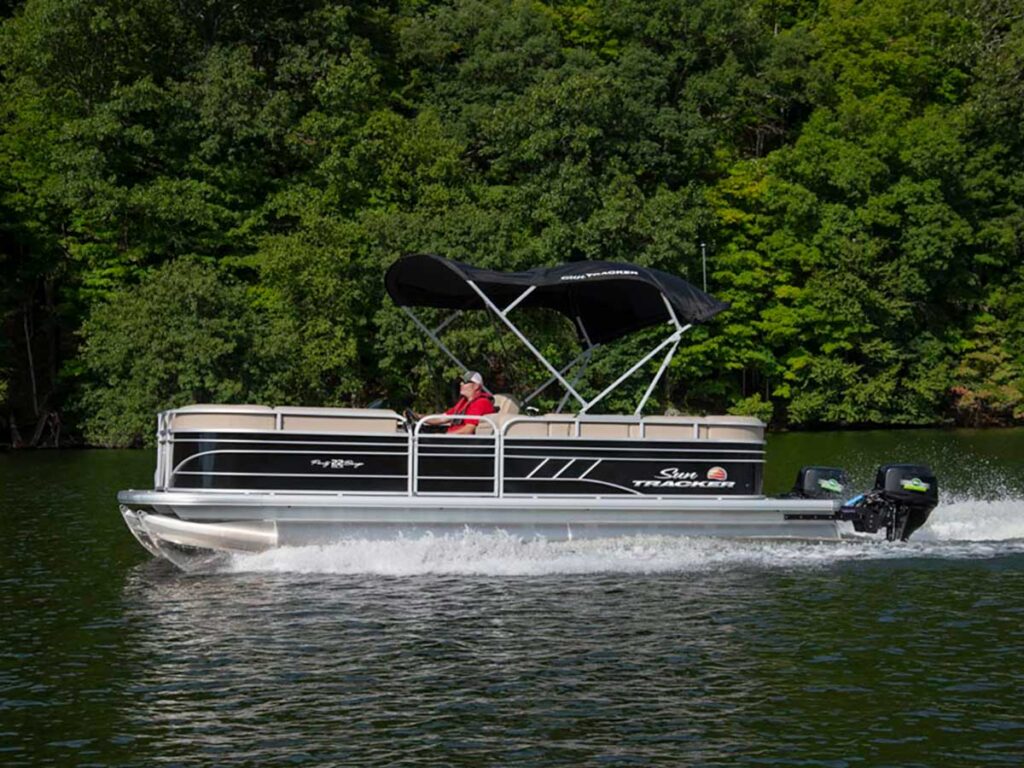
Worth the Weight
Minor says that about one-third of installations benefit from new props, which is expected when essentially lightening a boat by half. Those underwater wings alleviate passenger weight too, which often impacts gas-powered pontoon boatspeed. “A boat might lose 6 or 8 mph when full of people,” Minor says, versus carrying minimal crew. “That same boat would see just a 2 or 3 mph drop with our hydrofoils installed.”
Tri-toons, with lift from a third hull and planing strakes, tend to benefit a bit less. Minor says that gas tri-toons typically see 15 to 25 percent increase in speed or fuel economy. On a 25-foot Qwest Tri-toon powered with a prototype 350 hp equivalent Hyper Electric outboard and 1,150 pounds of batteries, Minor reported that the boat gained from 15 percent to 29 percent efficiency in the 20 to 35 mph cruising range. Hydrofin foils proved 7 percent more efficient at 43 mph, which was wide-open throttle without the foils, and they added 6 mph top speed, reaching 49 mph at the same 270 kW. (See our test of the Hyper Electric in Motorhead on page 74.)
Foil Downsides
While Minor was installing the Elco-powered test boat’s foils—about a half-day procedure—I kept an eye out for pitfalls. Foils increase draft by about 4 inches, but they’re mounted well aft of amidships, where they shouldn’t interfere at most beaches. Modifying the boat trailer’s inner bunk impacted aligning the boat back onto the trailer at the ramp, but this can be easily remedied with side guide pipes common on monohull trailers. In a hard grounding or collision, foils are engineered to break away, and Minor reports no damage to hulls or mounting pads, only foils themselves, in the few times it has occurred. Operating in very shallow water would surely be problematic, but Hydrofin’s optional electric-actuated system fully retracts well above a pontoon’s bottom.
Other Boats
Hydrofin’s system adapts to nearly all pontoon and tri-toon boats, and they’ll work on small power catamarans but not monohulls. “The foils need a gap away from the hull,” Minor explains, which comes when they’re mounted between two hulls. Hydrofin’s foils also won’t work past about 55 mph, when water flow causes foil cavitation.
Long-standing wisdom maintains that more ponies pushing fewer pounds increases speed. That’s still true, but Hydrofin shows that boats can also grow wings and fly.
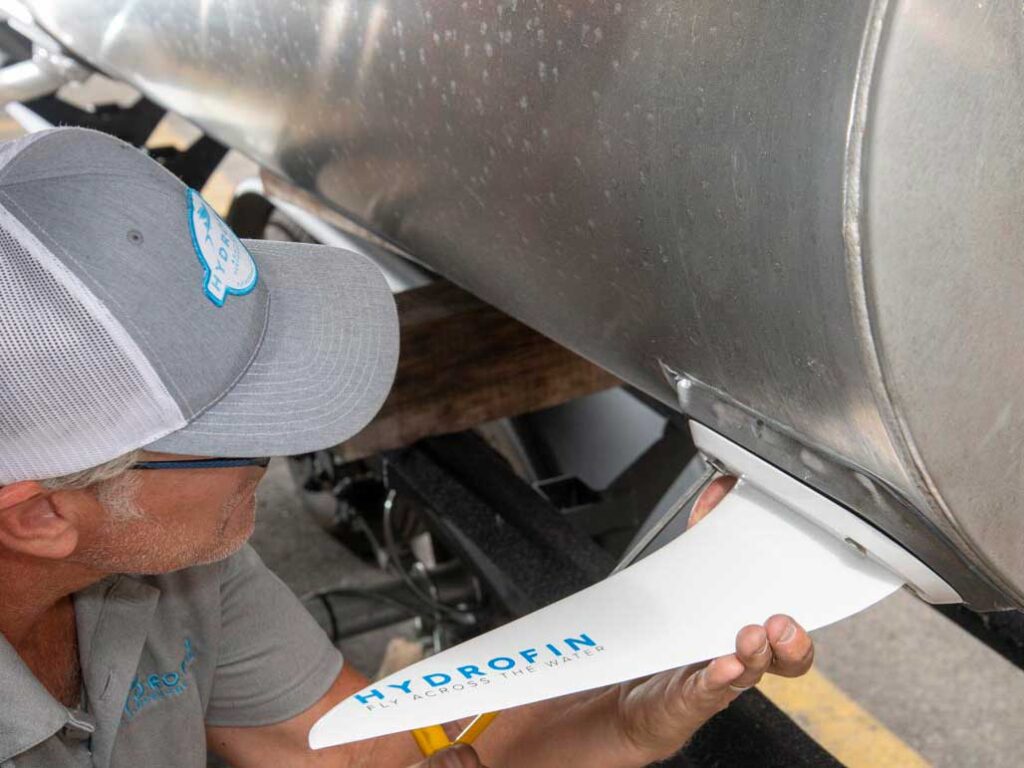
How Hydrofin Foils Attach to the Hull
On twin-hull boats, Hydrofin hydrofoils mount to pads epoxied to hulls between pontoons, with braces extending upward to the deck. Foil location and angle of attack adjust fore-and-aft trim and total lift. Finlets mounted aft add more lift to further tweak the boat’s ride and trim.
Oversize fins, chosen to carry battery weight, range from 343 to 1,822 pounds lift at 25 mph.
Tri-toons utilize a modified mount and fins that create from 537 to 1,021 pounds of lift at 25 mph, where a 25-foot Qwest tri-toon with Hyper Electric Marine’s 350 hp electric outboard was 29 percent more efficient with Hydrofin foils installed, while top speed increased by 6 mph, according to Hydrofin.
- More: April 2024 , boat building , Boats
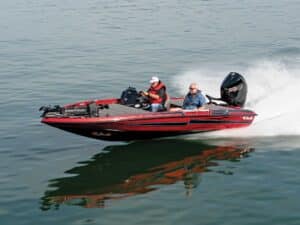
Boat Test: 2024 Bass Cat Caracal STS
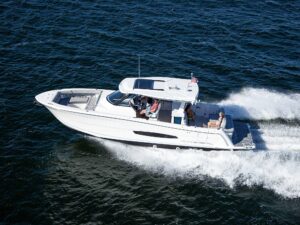
Boat Test: 2024 Regal 38 Surf
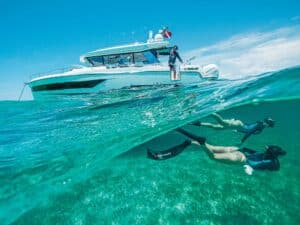
Six Boats Built for Adventure
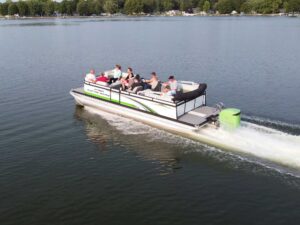
Hyper Electric Marine’s Electric-Outboard Pontoon Boat
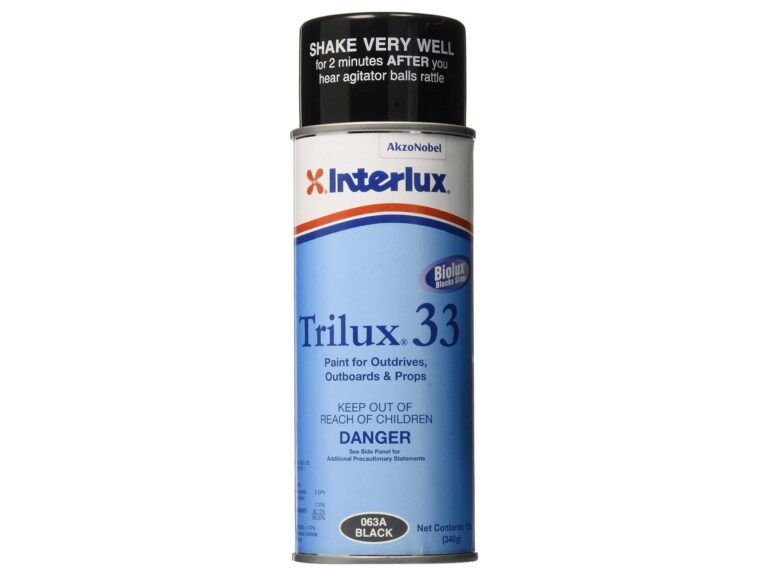
We Test Interlux Trilux 33 Aerosol Antifouling Paint

Boating Shoes for Spring and Summer

MasterCraft Celebrates International Women’s Day With Fourth Annual ‘Let Her Rip’ Campaign
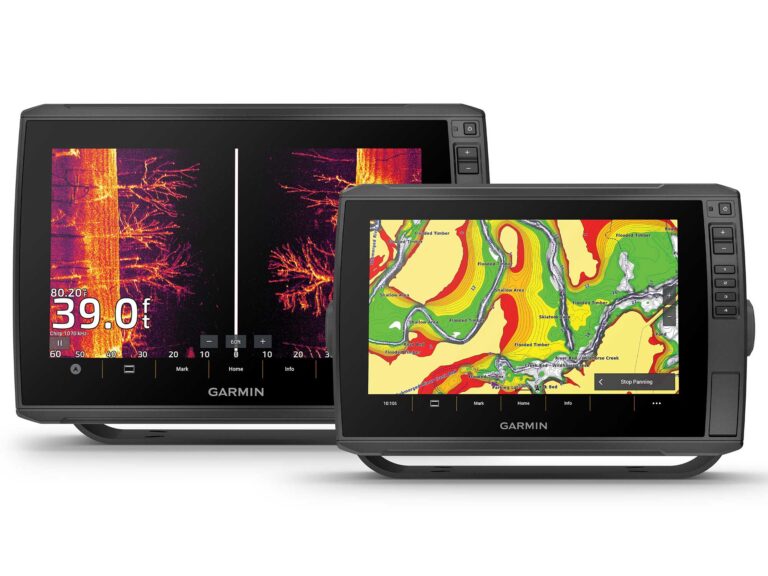
Garmin EchoMap Ultra 2 Series

- Digital Edition
- Customer Service
- Privacy Policy
- Cruising World
- Sailing World
- Salt Water Sportsman
- Sport Fishing
- Wakeboarding
Many products featured on this site were editorially chosen. Boating may receive financial compensation for products purchased through this site.
Copyright © 2024 Boating Firecrown . All rights reserved. Reproduction in whole or in part without permission is prohibited.
Things to Do in Elektrostal, Russia - Elektrostal Attractions
Things to do in elektrostal.
- 5.0 of 5 bubbles
- 4.0 of 5 bubbles & up
- Good for a Rainy Day
- Good for Kids
- Good for Big Groups
- Adventurous
- Budget-friendly
- Hidden Gems
- Good for Couples
- Honeymoon spot
- Good for Adrenaline Seekers
- Things to do ranked using Tripadvisor data including reviews, ratings, photos, and popularity.

1. Electrostal History and Art Museum

2. Statue of Lenin

3. Park of Culture and Leisure
4. museum and exhibition center.

5. Museum of Labor Glory

7. Galereya Kino
8. viki cinema, 9. smokygrove.

10. Gandikap
11. papa lounge bar, 12. karaoke bar.
- Statue of Lenin
- Electrostal History and Art Museum
- Park of Culture and Leisure
- Museum and Exhibition Center
- Museum of Labor Glory
Our people, your freight.
Yedaiah has a proven methodology for engaging customers using a collaborative solution development process to understand business needs., to tailor our solution to specifically deliver the objectives for our customer’s global supply chains., our core values:.
Innovative – Open and creative to customer and employee solutions.
Transparent Communication and Collaboration. We communicate openly.
Don’t fix what isn’t broken, unless it provides a road map to increased productivity.
Shared Goal & Initiative Alignment.We accomplish our goals more efficiently.
Our proactive approach to invoice consolidation and freight analysis reports.
We carry your trust.
With a global network and advanced logistics solutions, our air freight services provide., our clients, and what they say., delivered packages.
We strongly support best practice sharing across our operations around the world.
Countries Covered
As one of the world’s leading supply chain management companies.
Satisfied Clients
Provide best-in-class services across its integrated worldwide network.
Tons of Goods
Sustainability helps us reduce waste and share the benefits with our customers.
What makes us different?
What make us different.
"They have great service, quality products and we trust them. We value a local relationship and the impact it has on our community." — Jason Manson
“It is a company we can count on. They are responsive, they bring new ideas and they care about the success of our organization. I’d recommend them to any athletic department.” — Mr. Attkins
“We have a world-class supply chain that demands immediate response.Industriel came to us with creative, cost saving solutions related to inventory management. Last year we identified a 3% savings across one category.” — Marcos Valtea
"Great job...thank you for getting this to us in an extremely short amount of time.hey also showed me ways to reduce costs in supply chain efficiencies. Industriel are always responsive and I know I can count on them to deliver.” — Sandra Mitchel
"Dealing with Industriel on a day-to-day basis has proved to be very easy. We make a telephone call, look at the options available, and then let them get on with the job while we concentrate on our business. — Robert Frost
Değirmendere Mah. Sanayi Cad.8
Sk. No:7 Kuşadası 09400 Aydın
+ (90) 256 340 03 40
Mon - Fri: 9:00 - 18:00 Closed on Weekends
Küçükbakkalköy Mah. Fevzipaşa Cad.
Bozkır Sok. No:1 ,K:3 D:15 Ataşehir 34750 Istanbul
+ (90) 216 900 28 62
+(90) 216 576 47 90
2, Stroitelny Lane, Elektrostal , Moscow
+7 (499) 390 35 04
128 City Road , London EC1V 2NX
+44 20 4577 1271
Mon - Fri: 9:30 - 17:00 Closed on Weekends
26 Seaman Ave Hempstead 11550 New York
+1 646 980 28 04
Humberto 1 985,Piso 2,Ofic 222
Constitucion Capital Federal CP 1103
Buenos Aires
+54 11 52 371 371
Mon - Fri: 9:00 - 17:30 Closed on Weekends
Subscribe to our newsletter:


First refuelling for Russia’s Akademik Lomonosov floating NPP
!{Model.Description}
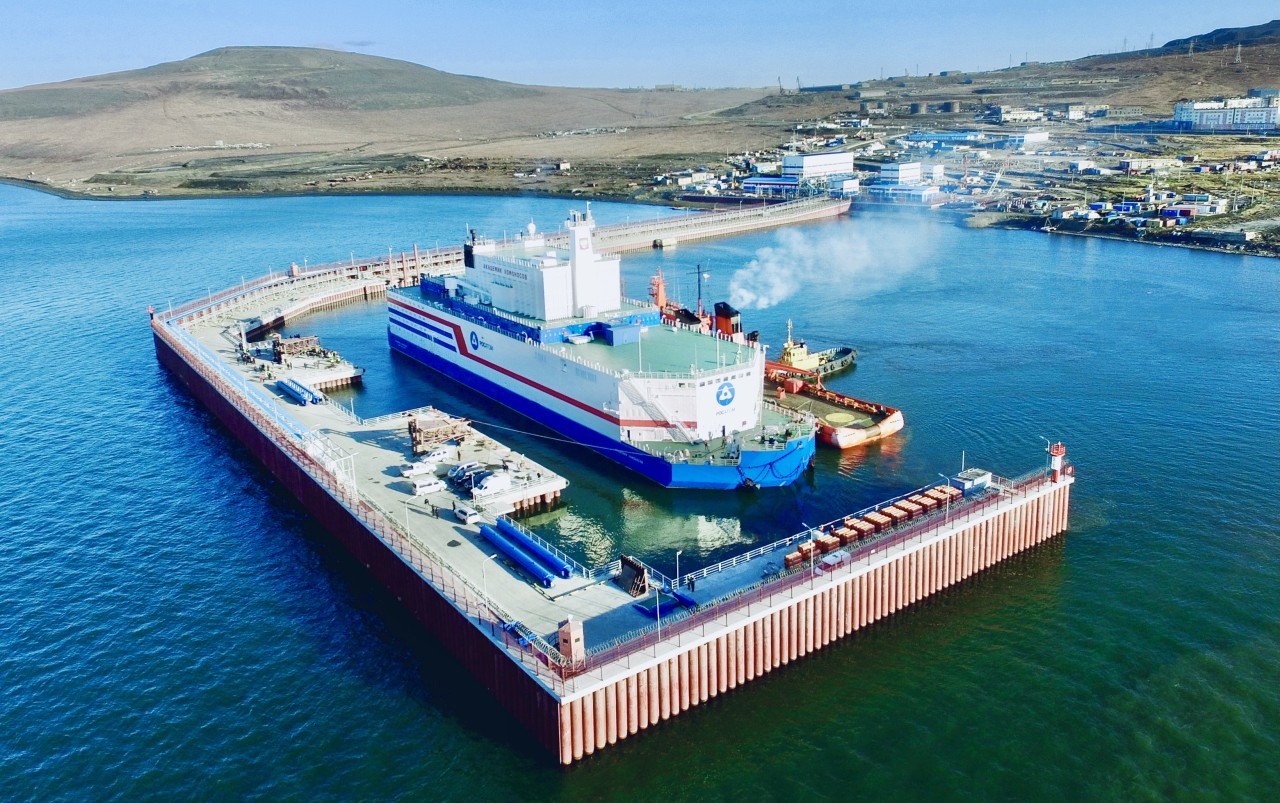
The FNPP includes two KLT-40S reactor units. In such reactors, nuclear fuel is not replaced in the same way as in standard NPPs – partial replacement of fuel once every 12-18 months. Instead, once every few years the entire reactor core is replaced with and a full load of fresh fuel.
The KLT-40S reactor cores have a number of advantages compared with standard NPPs. For the first time, a cassette core was used, which made it possible to increase the fuel cycle to 3-3.5 years before refuelling, and also reduce by one and a half times the fuel component in the cost of the electricity produced. The operating experience of the FNPP provided the basis for the design of the new series of nuclear icebreaker reactors (series 22220). Currently, three such icebreakers have been launched.
The Akademik Lomonosov was connected to the power grid in December 2019, and put into commercial operation in May 2020.
Electricity generation from the FNPP at the end of 2023 amounted to 194 GWh. The population of Pevek is just over 4,000 people. However, the plant can potentially provide electricity to a city with a population of up to 100,000. The FNPP solved two problems. Firstly, it replaced the retiring capacities of the Bilibino Nuclear Power Plant, which has been operating since 1974, as well as the Chaunskaya Thermal Power Plant, which is more than 70 years old. It also supplies power to the main mining enterprises located in western Chukotka. In September, a 490 km 110 kilovolt power transmission line was put into operation connecting Pevek and Bilibino.
Image courtesy of TVEL
- Terms and conditions
- Privacy Policy
- Newsletter sign up
- Digital Edition
- Editorial Standards


IMAGES
COMMENTS
Motoryacht Motorsailer Pilothouse Pocket Yacht Sailing Yacht Trawler Now let's take a deeper dive into each of the above types of yachts and boat hull types. Aft Cabin Aft cabin yachts are exactly what the name implies: they have a cabin on the back of the boat, rather than an open cockpit.
As its name describes, this is a hull form made of cement/concrete and iron. The materials are relatively cheap. You will rarely or probably never see a boat built in a shipyard with a hull of this material and it is one of the less common types of hull materials you'll encounter.
There are two main categories of sailboat hulls: monohulls and multihulls. Common monohull types include flat-bottom vessels, fin-keel racers, bulb and bilge keel cruisers, heavy semi-displacement sailboats, and dense full-keel displacement cruisers. Multihull designs include catamarans and trimarans.
There are three boat hull categories: displacement hulls, which displace water when moving; planing hulls, which create lift at high speeds; and semi-displacement hulls, which displace water and generate lift at low speeds. The most common hull types are round-bottomed, flat-bottomed, multi, V-shaped, and pontoon hulls.
A hull can be open where you sit in it, such as a small dinghy, or a deck may cover it as you would find on a yacht. When there is a deck placed on top of a hull, it opens up many more options for utilizing the space on your boat more appropriately as it is raised to the top of the hull, where more space is apparent.
Most times, the hull of a sailboat will be a displacement hull. To float, a boat must displace a volume of water equal in weight to that of the yacht. This is Archimedes Principle, and it's how displacement hulled boats get their name. The displacement hull sailboat has dominated the Maritimes for thousands of years.
The most common sailboat hull type you'll find out there is the displacement hull, which is very effective at pushing the water aside and powering through it during forward propulsion. A displacement hull is often found not only on sailboats, but also fishing, freight, cruise, and other larger boats.
Arcona 435. The Performance Cruiser winner at the 2019 European Yacht of the Year awards, the Arcona 435 is all about the sailing experience. She has genuine potential as a cruiser-racer, but her ...
Multi-Hull. Sail Magazine. Multi-hull boats, such as pontoons and tritoons, are smooth and easy to sail. There are separate hulls on each side of the boat that provide stability and let you power through rough waters. On a pontoon, each hull is a large tube filled with air known as a toon.
Light displacement, modern wide hull - Pogo 10.50. This decision should depend, at least in part, on how comfortable the yacht is in a seaway. Now the comfort of yachts of the same size can be remarkably different. Take yachts of around 35ft or 10.6m long - a common yacht length. Three examples show how much the displacement can vary for ...
The key is that a yacht needs to be solid - solid hull, solid rig, solid systems and solid crew and, if of fibreglass construction, avoid high-risk areas. ... Best family yacht: our pick of the ...
Newer sailing yachts, with plumb bows, have somewhat smaller half angles and a modern 12m-long fast cruiser may have a value around 20º and a racing yacht 17º or 18º. ... The greater the immersion the greater the drag, so weight in stern lockers on modern boats can be critical. Modern hull design. The modern wedge shape attempts to resolve ...
GRP boats sail very fast because of their low weight, but the residual flexibility that is unavoidable in the material can cause annoying creaking noises inside the boat. ... However, the properties of a hull also depend on the specific boat because construction and quality of workmanship are at least as important as the material itself. When ...
Sails provide power, foils the lift, which makes the hull the third critical leg of the AC75. Hull design has always been the most venerated aspect of an America's Cup yacht. The name on the ...
Designed and assembled by a wide variety of yacht building companies, there are currently 1,130 multi-hull yachts for sale on YachtWorld, with 228 new vessels for sale, and 902 used and custom yachts listed. These vessels are all listed by professional yacht brokers and boat dealerships and new boat dealers, mainly in the following countries ...
The major benefits of boats with steel hulls are that they are very strong, durable, and can be repaired easily. On the other hand, a fiberglass hull offers your boat a smooth and sleek look that is very pleasing. They are also lighter, faster, and require less maintenance than steel boats. Whether you are building your own sailboat or thinking ...
Sailing Yachts Built in 2022 with Planning Hulls. There are currently over 10,800 yachts afloat. The longest yacht in the world is Azzam, measuring 180.61m (592'7'). She was built in 2013 by Lürssen. The largest yacht in the world is Fulk Al Salamah, built by Mariotti in 2016, with a volume of 20,361 GT. On average, yachts are 36m long with ...
The hull of the 43.2-metre sailing yacht Yemaya has launched from the Gouwerok Shipyard in Aalsmeer, the Netherlands.. Commissioned by an "experienced owner", outfitting will be completed by Balk Shipyard in Urk. Delivery on the all-aluminium vessel is scheduled for 2026.
Introducing the Tao 452: On Display At The Annapolis Boat Show October 12 - 15, 2023. The Multihull Company is thrilled to unveil the new Tao 452, an exciting addition to the world of blue-water performance cruising catamarans. Meticulously engineered and crafted to perfection, the Tao 452 is set to redefine the catamaran experience for ...
Construction is officially underway on Atlante Yachts' 34.5-metre explorer series, the Atlante Classic 35. The first unit has had its hull turned at Mengi Yay's shipyard in Tuzla, Turkey.. Commissioned by an "experienced Northern European client", the yacht is scheduled for delivery in spring 2025.
How Hydrofin Foils Attach to the Hull. On twin-hull boats, Hydrofin hydrofoils mount to pads epoxied to hulls between pontoons, with braces extending upward to the deck. Foil location and angle of attack adjust fore-and-aft trim and total lift. Finlets mounted aft add more lift to further tweak the boat's ride and trim.
Check out this New 2024 Fountaine Pajot Samana 59 for sale in Saint Petersburg, FL 33701. View this Multi-Hull and other Sail boats on boattrader.com
Strip Club 54 Sunset Boat Party Off Road Fury Barbados Camel Safari Las Vegas Three Tables Dive Site Ice Lagoon Adventure Boat Tours Elephant Jungle Sanctuary Samui Swift Creek Outfitters & Teton Horseback Adventures Odyssey Whale Watching Giorgos Pame Walking Tours
No:7 Kuşadası 09400 Aydın. + (90) 256 340 03 40. [email protected]. Mon - Fri: 9:00 - 18:00. Closed on Weekends. Istanbul Branch - Türkiye. Moscow - Russia. London - United Kingdom. New York - United States of America.
Find company research, competitor information, contact details & financial data for BETA GIDA, OOO of Elektrostal, Moscow region. Get the latest business insights from Dun & Bradstreet.
Rosatom's fuel company TVEL has supplied nuclear fuel for reactor 1 of the world's only floating NPP (FNPP), the Akademik Lomonosov, moored at the city of Pevek, in Russia's Chukotka Autonomous Okrug. The supply of fuel was transported along the Northern Sea Route. The first ever refuelling of the FNPP is planned to begin before the end of ...